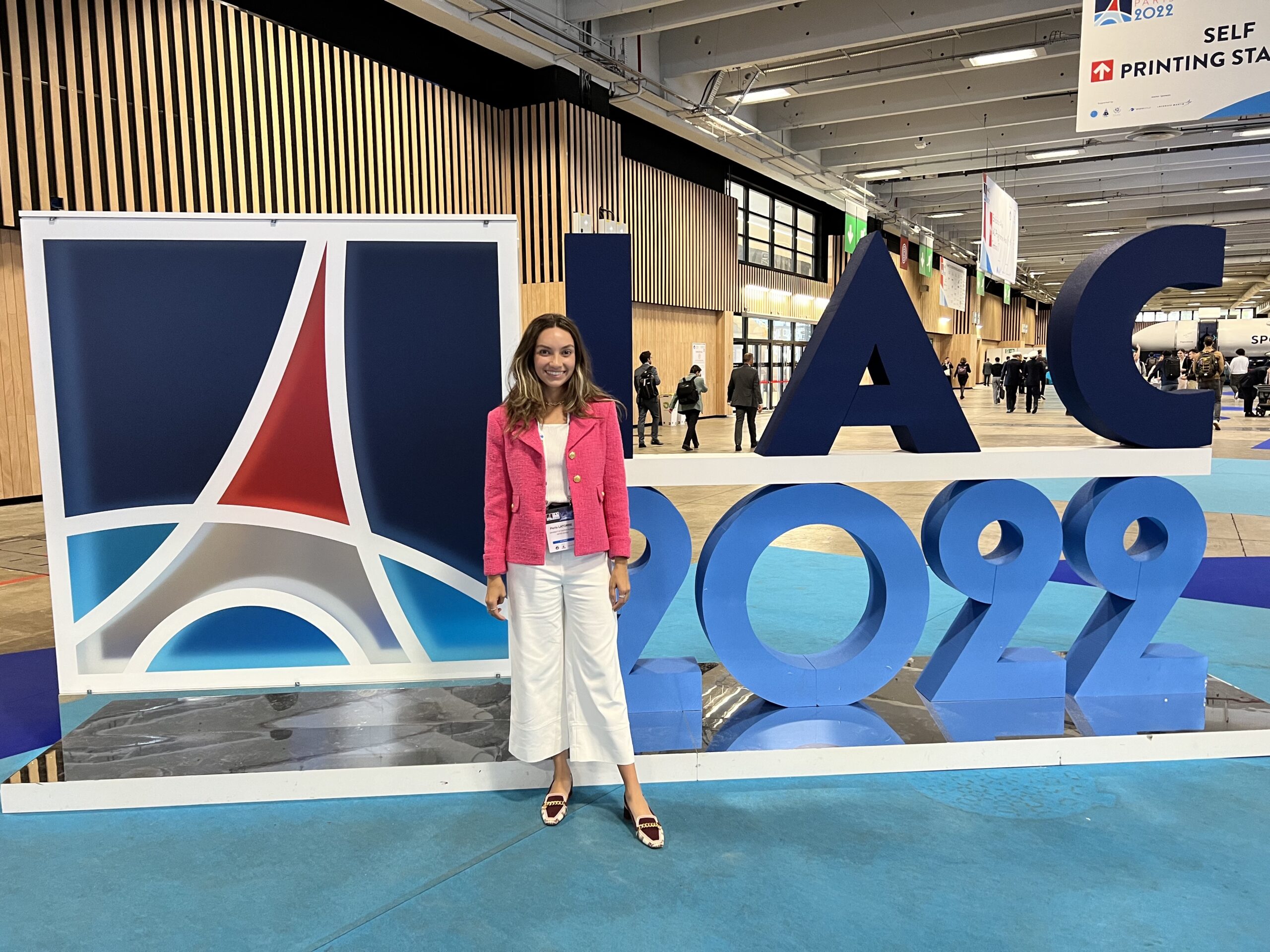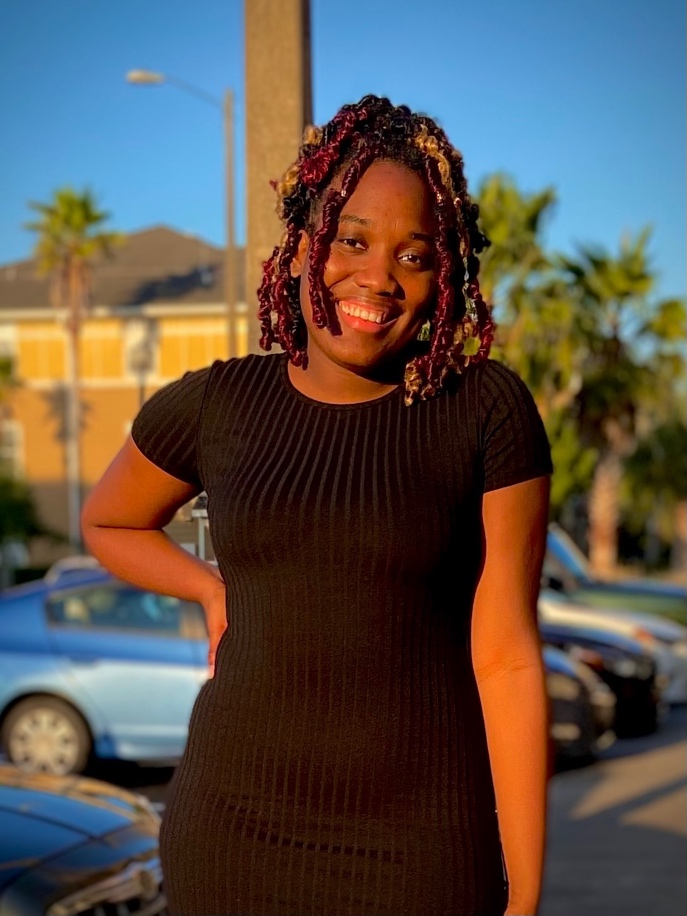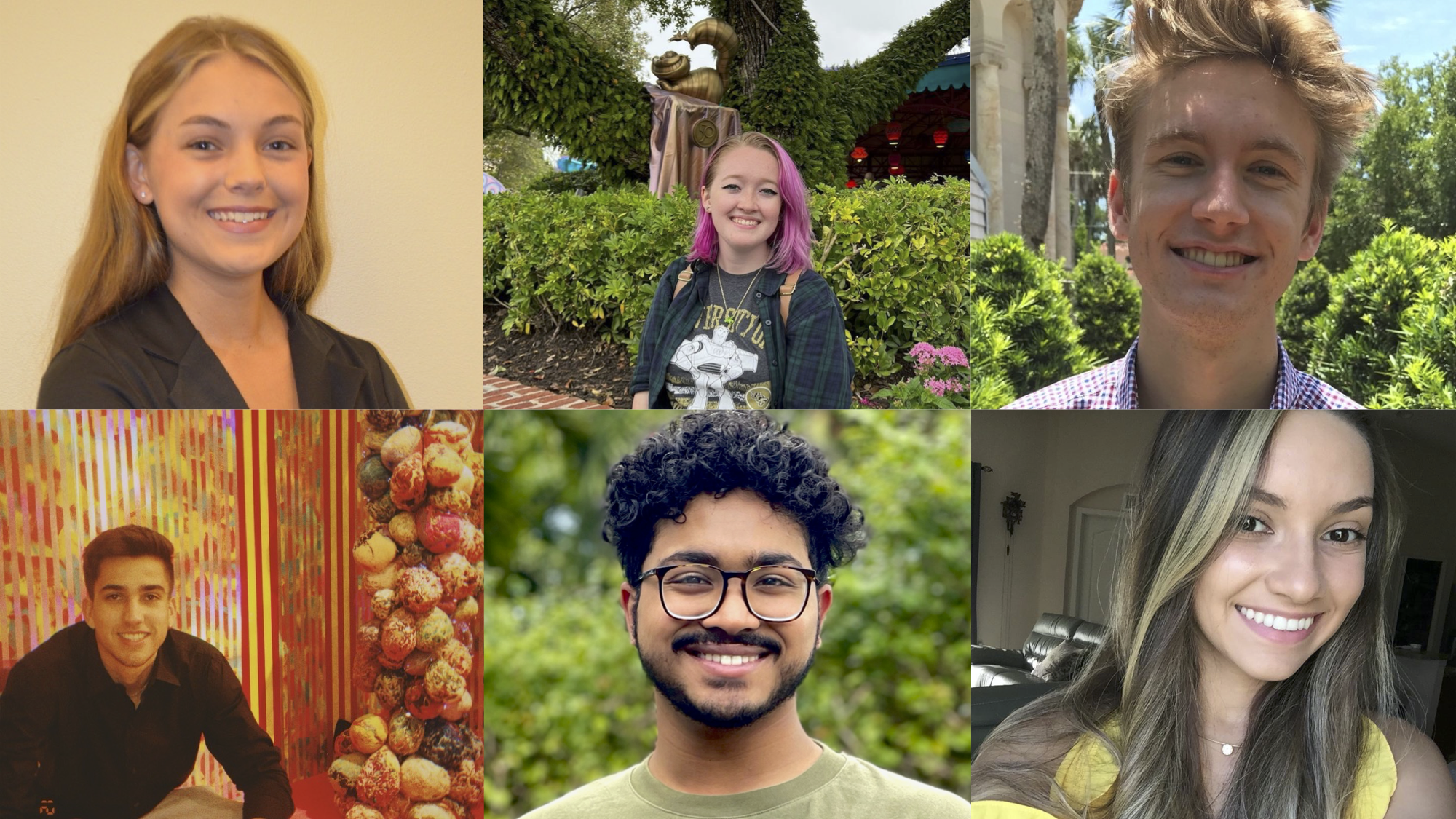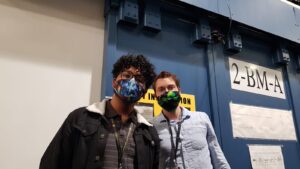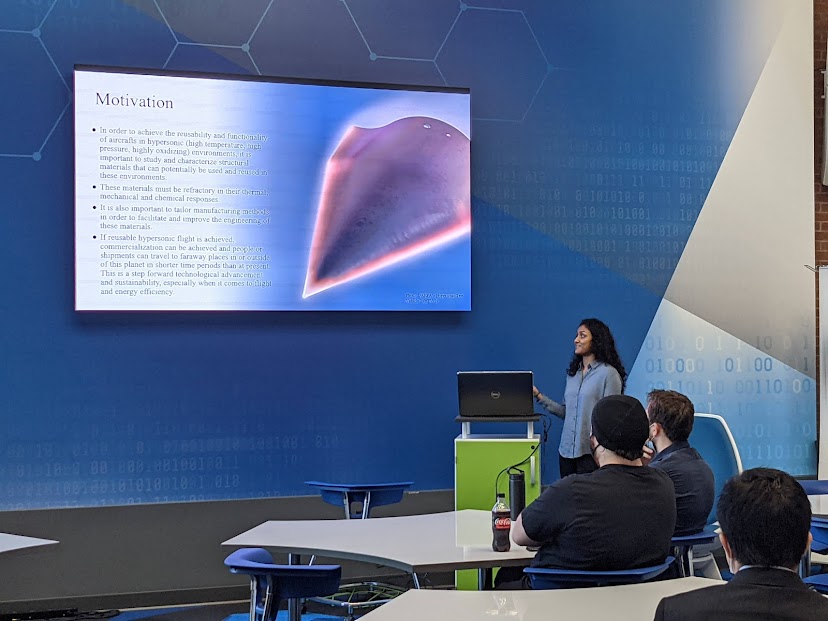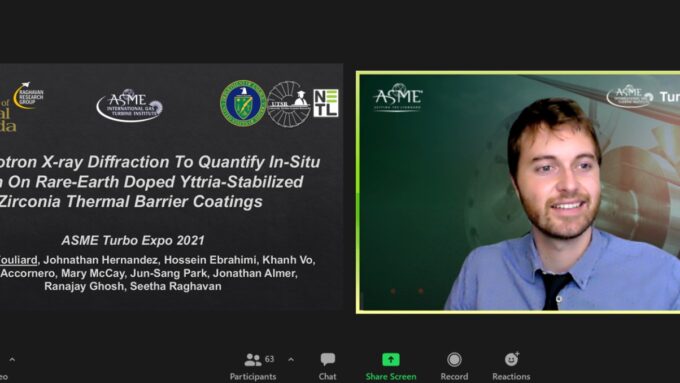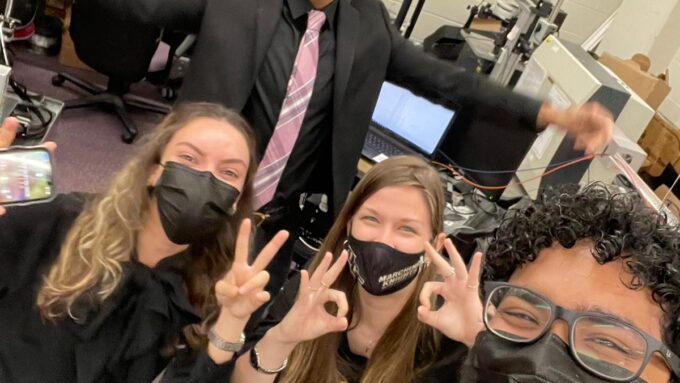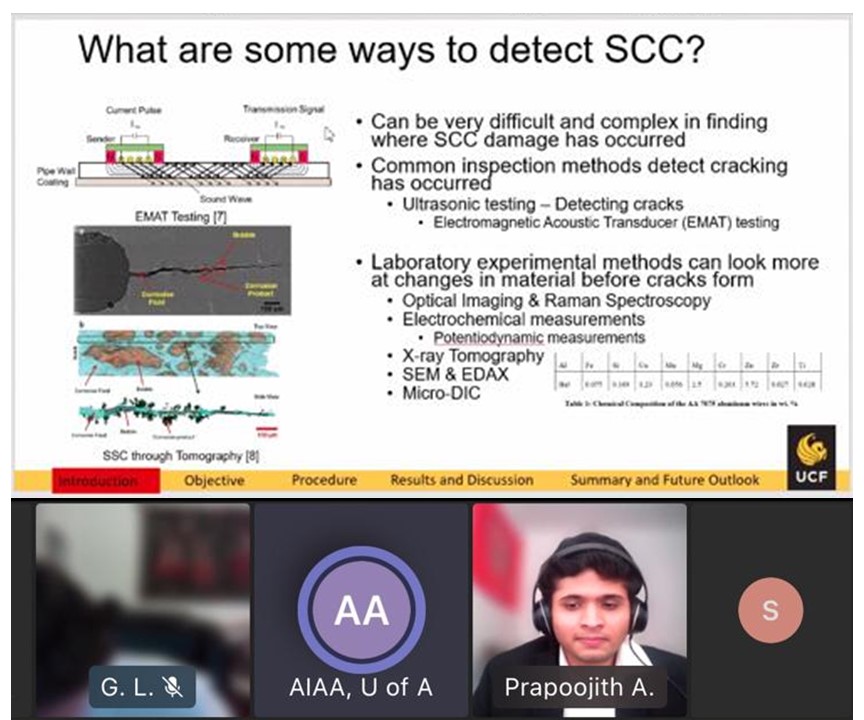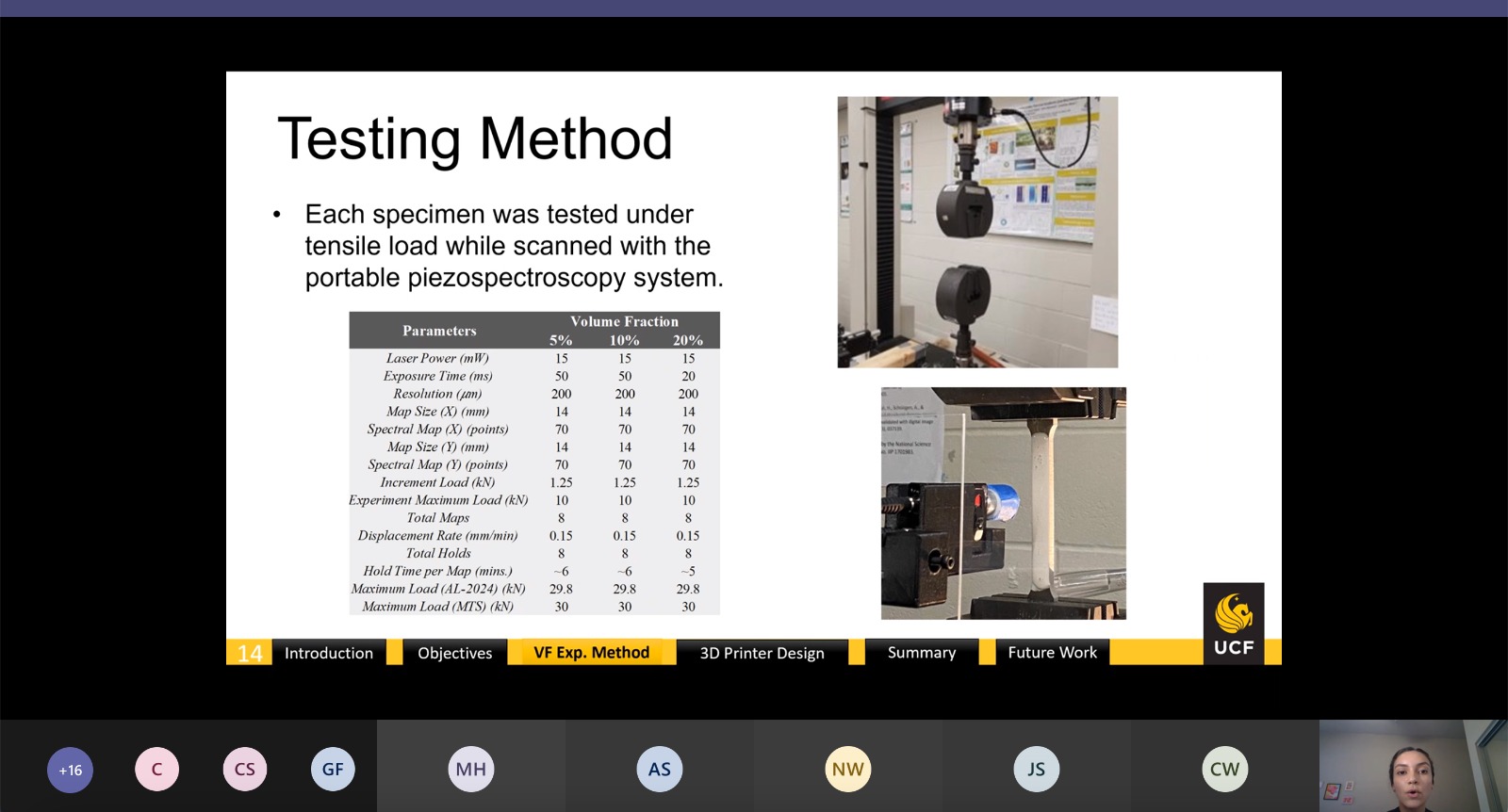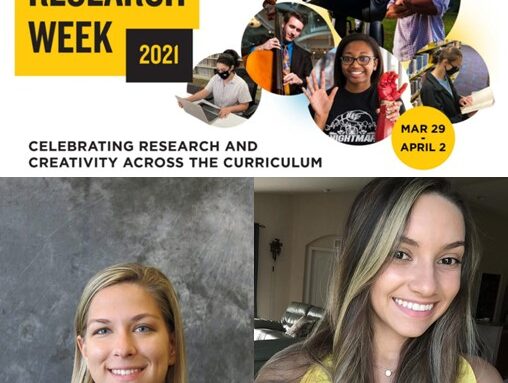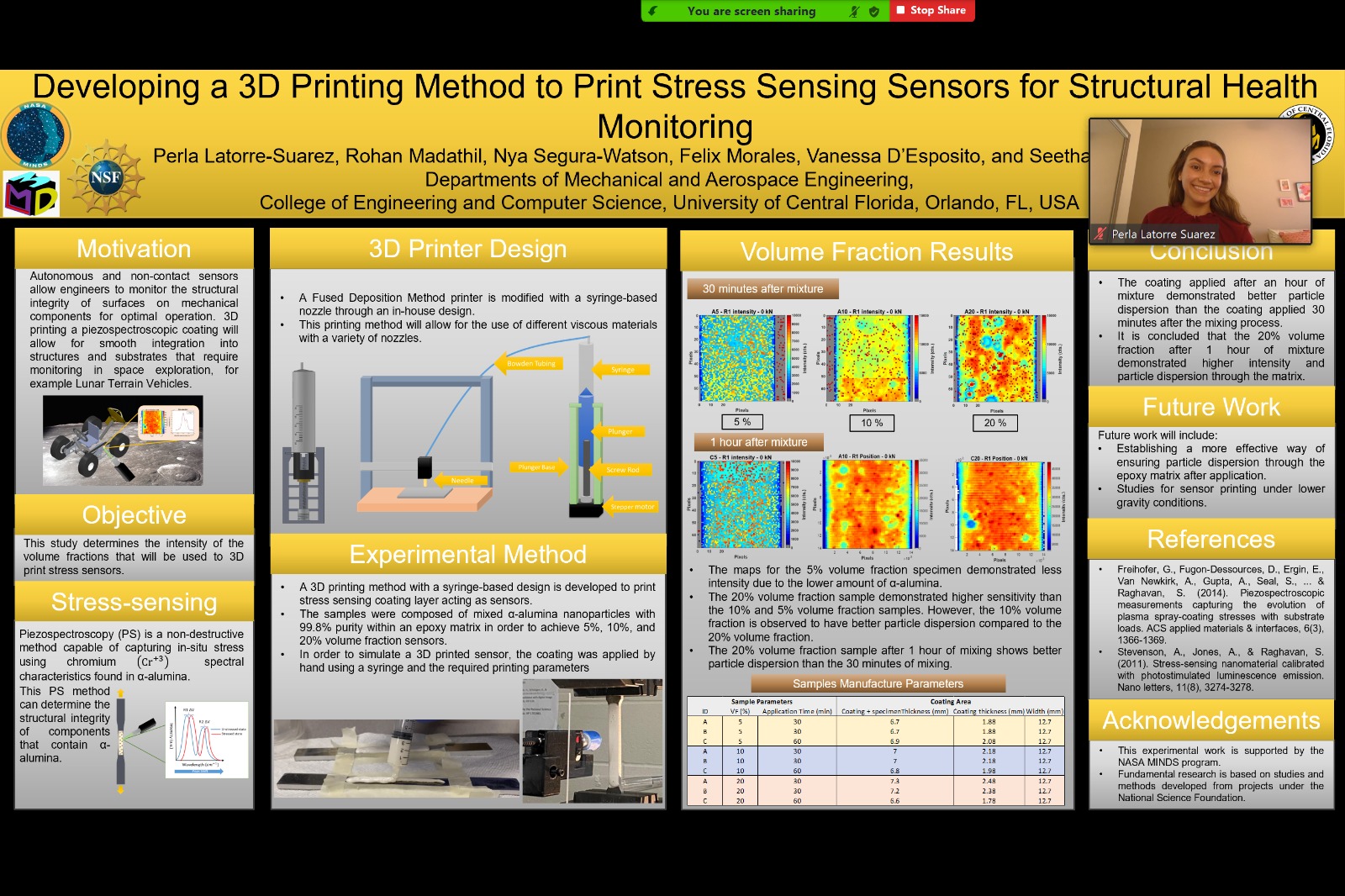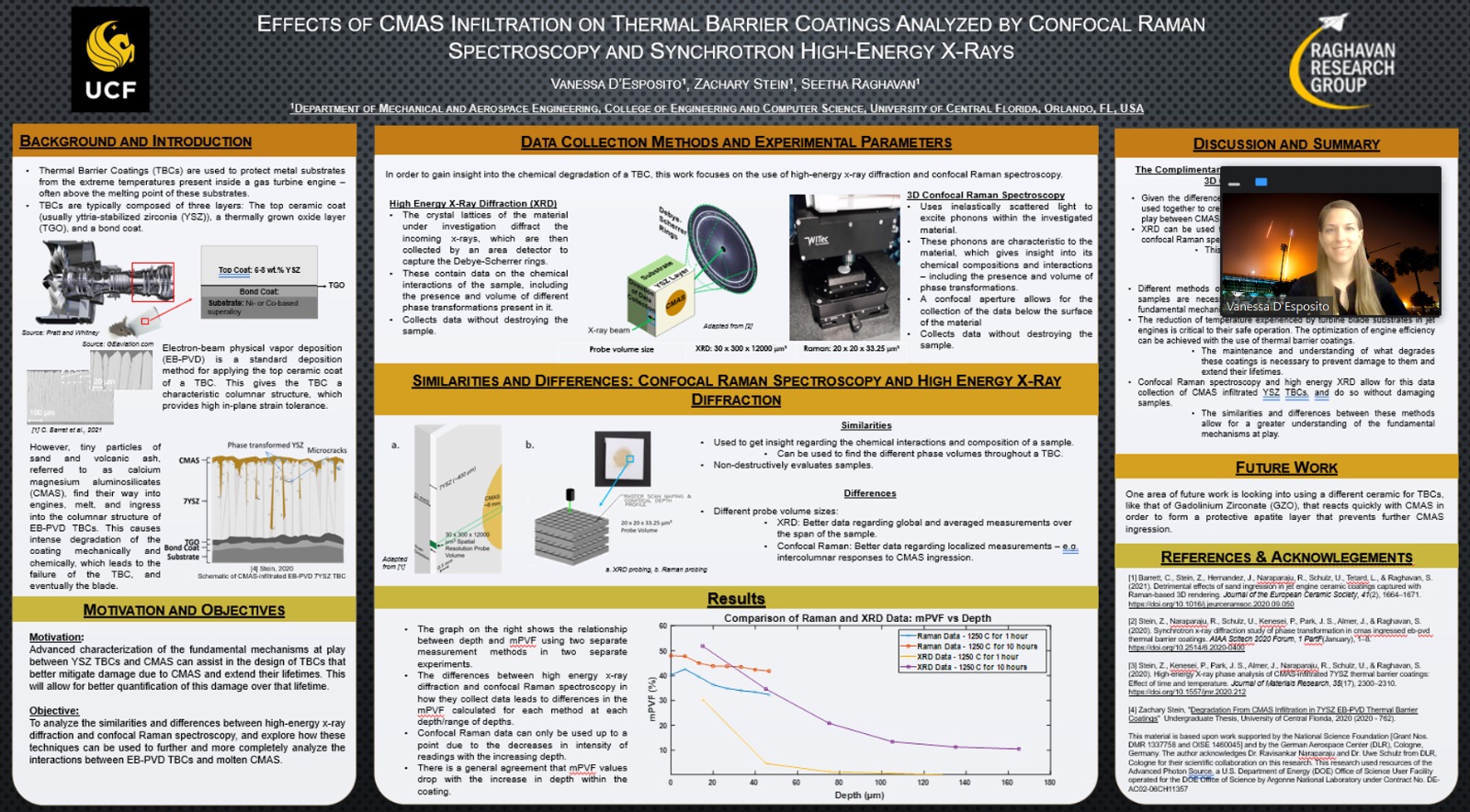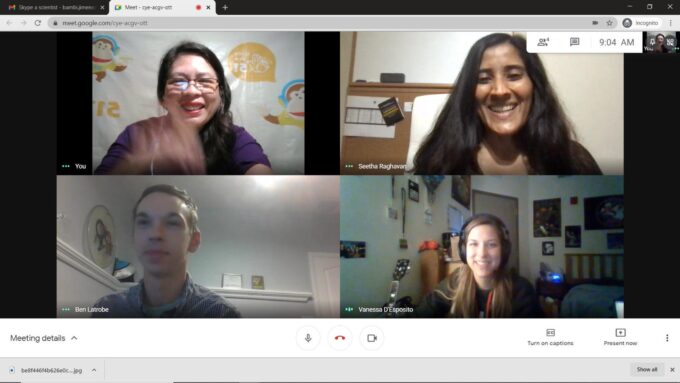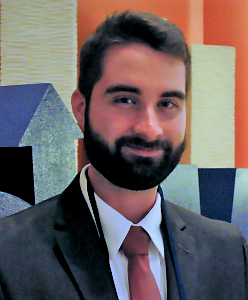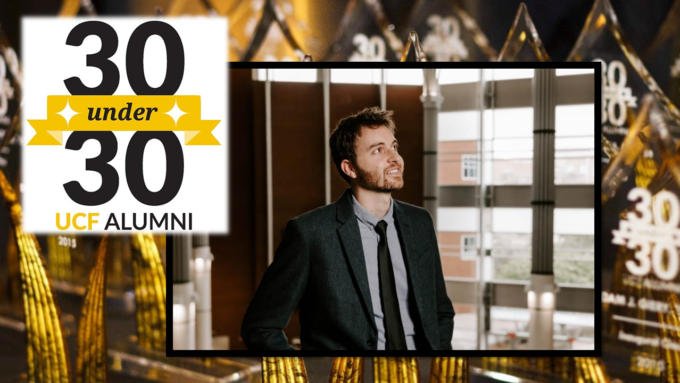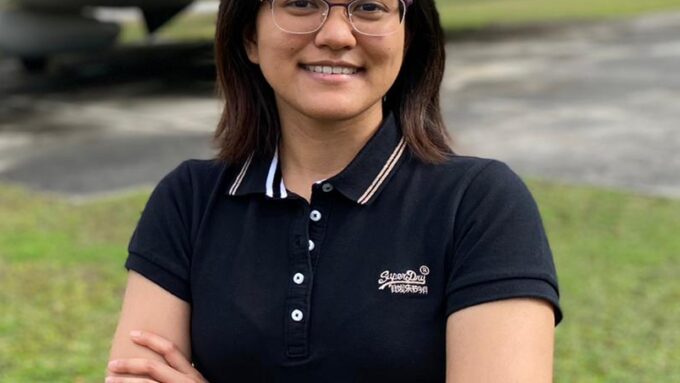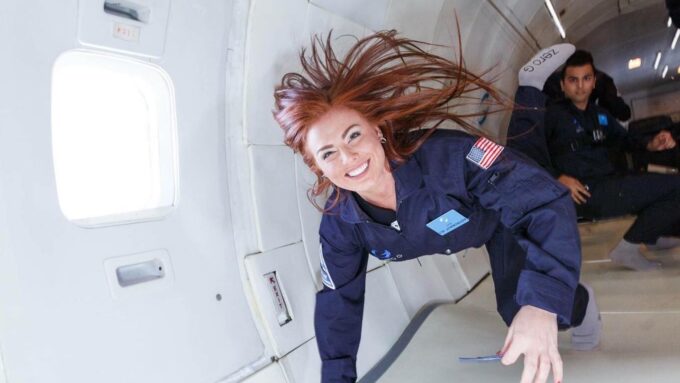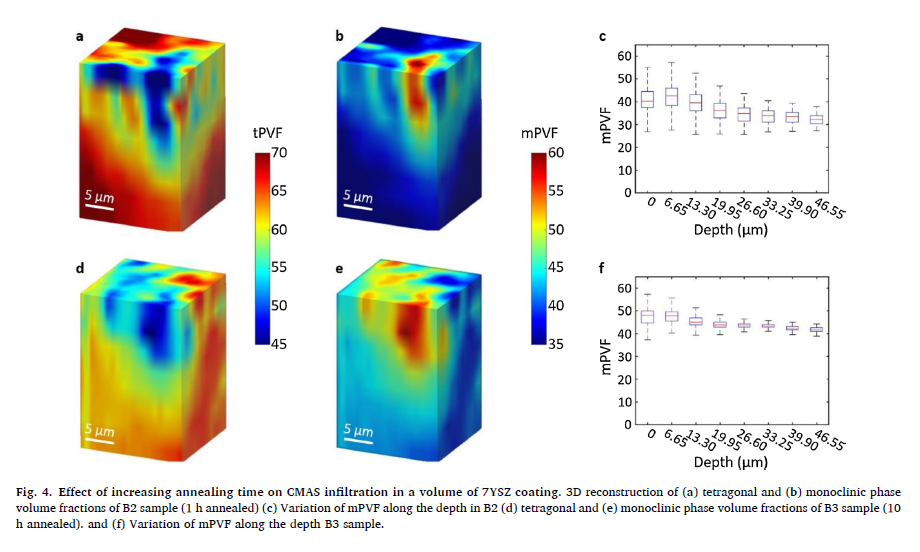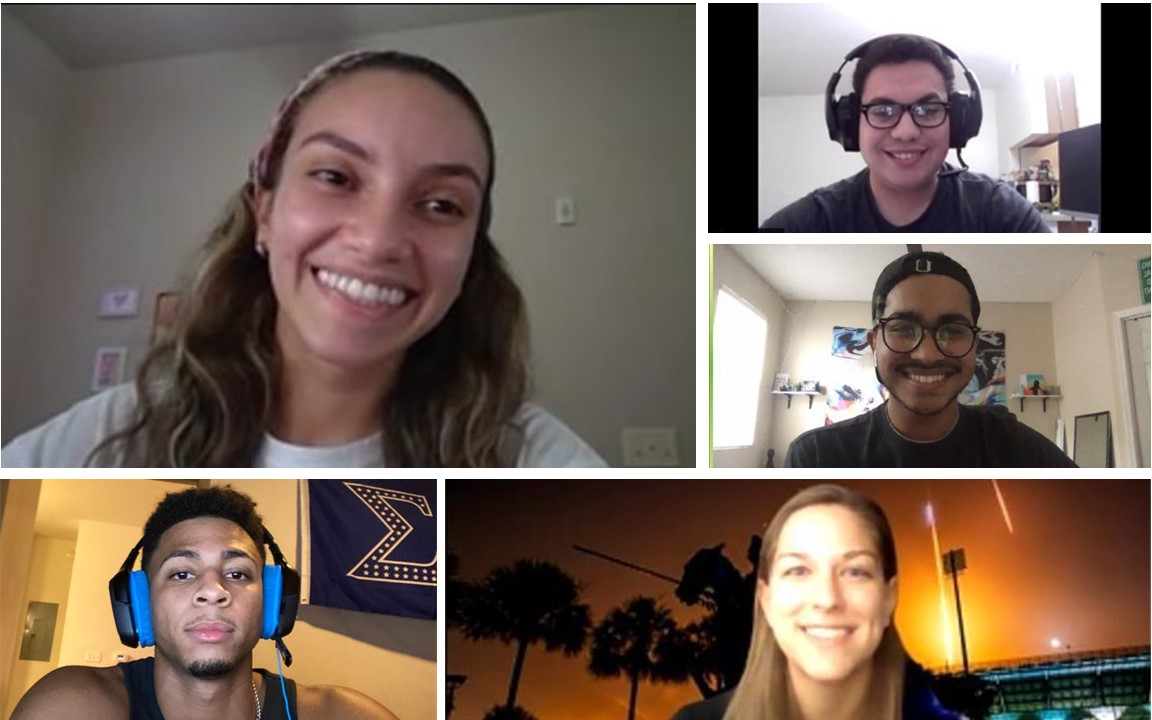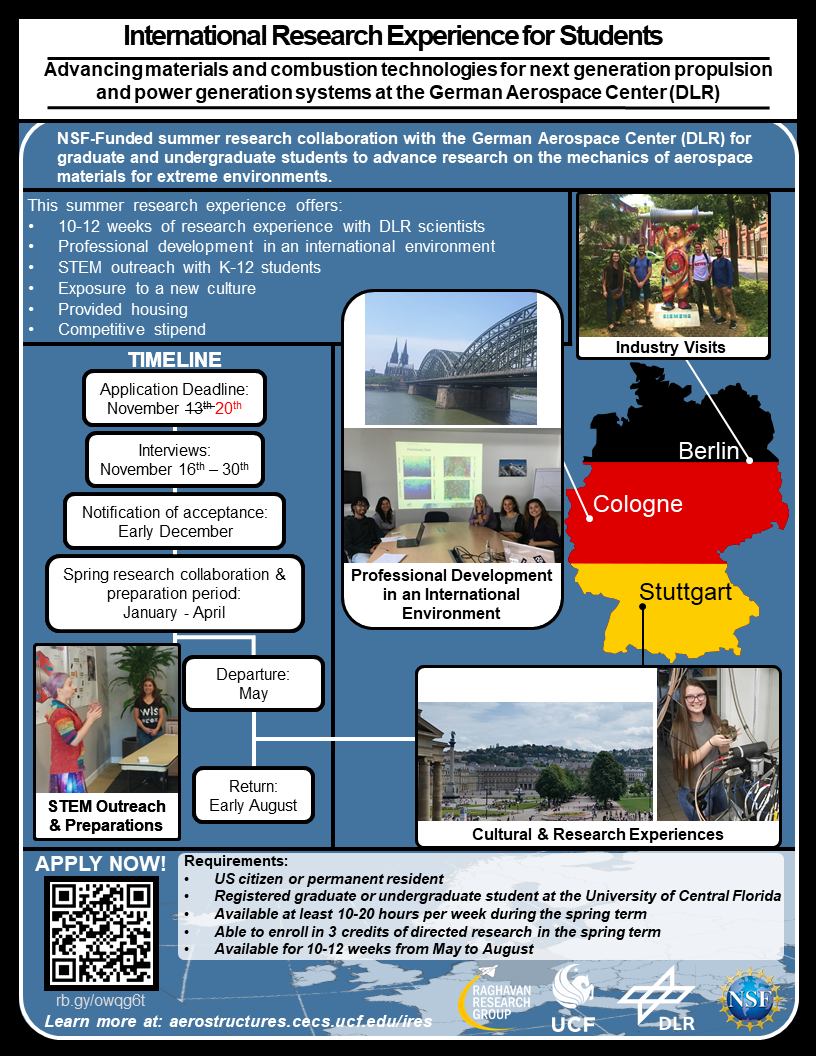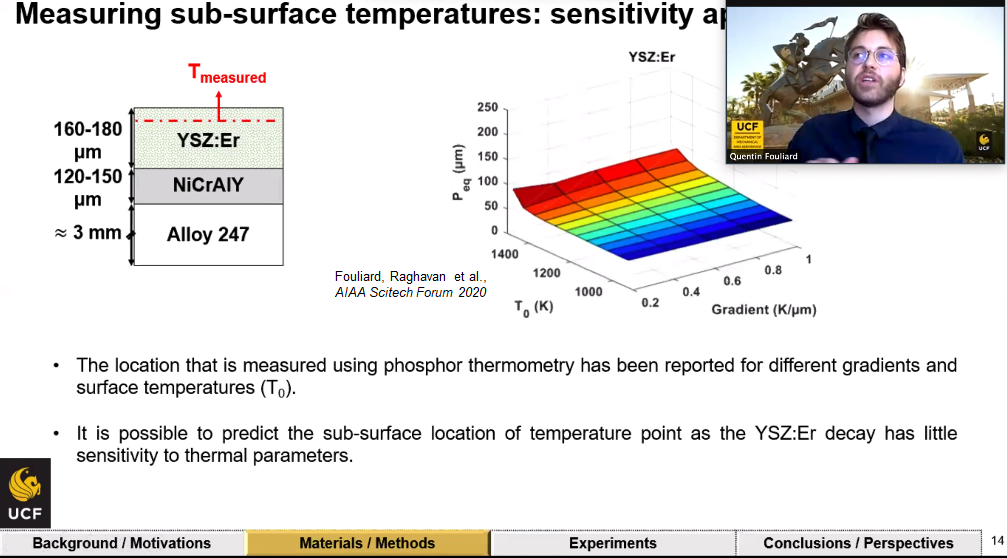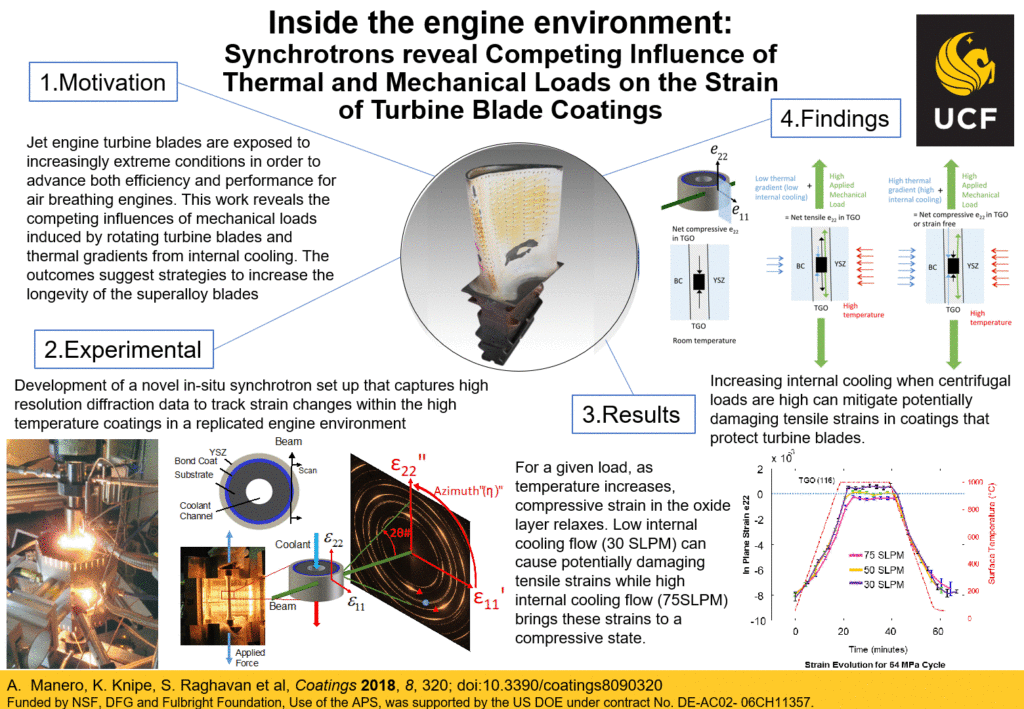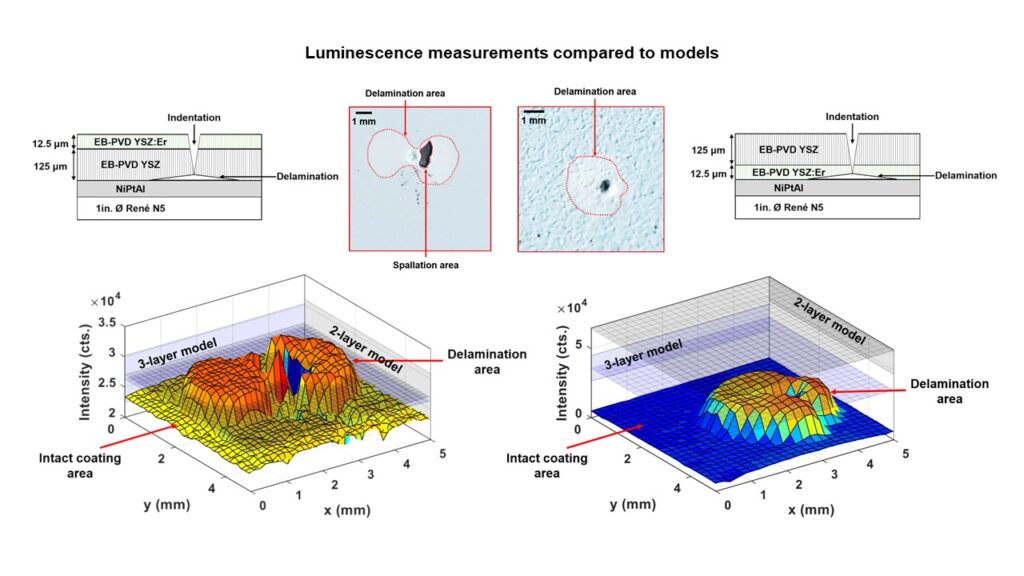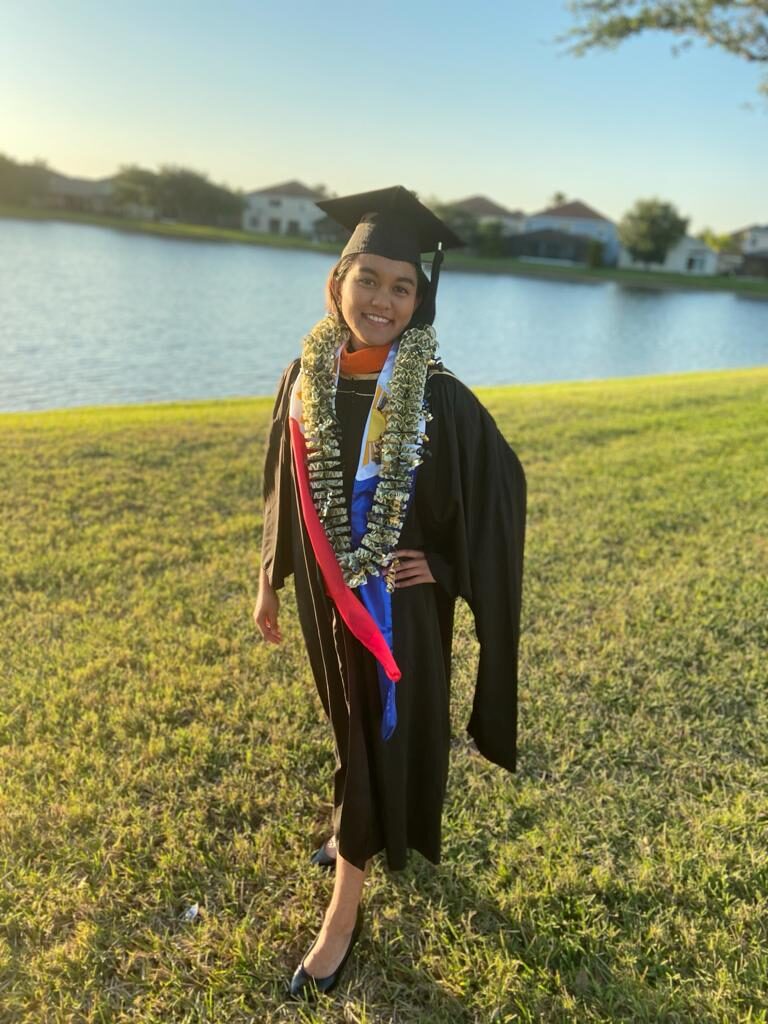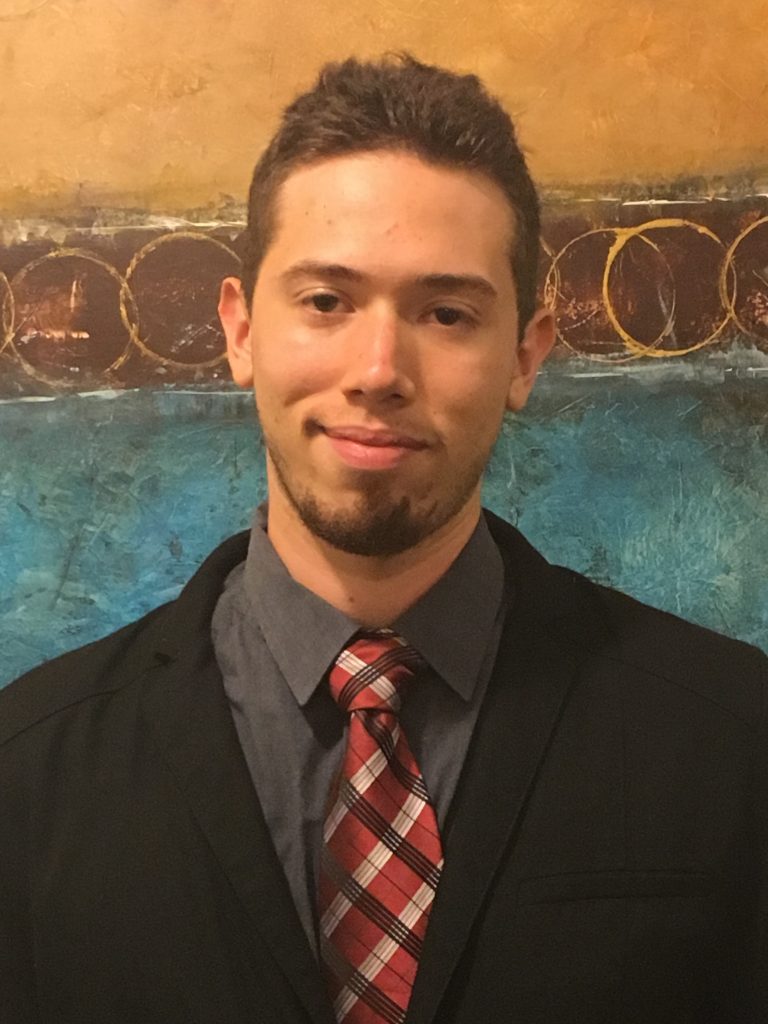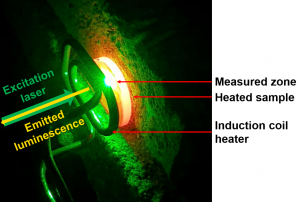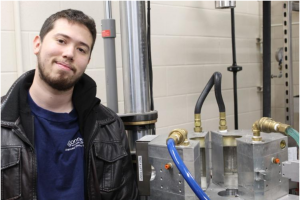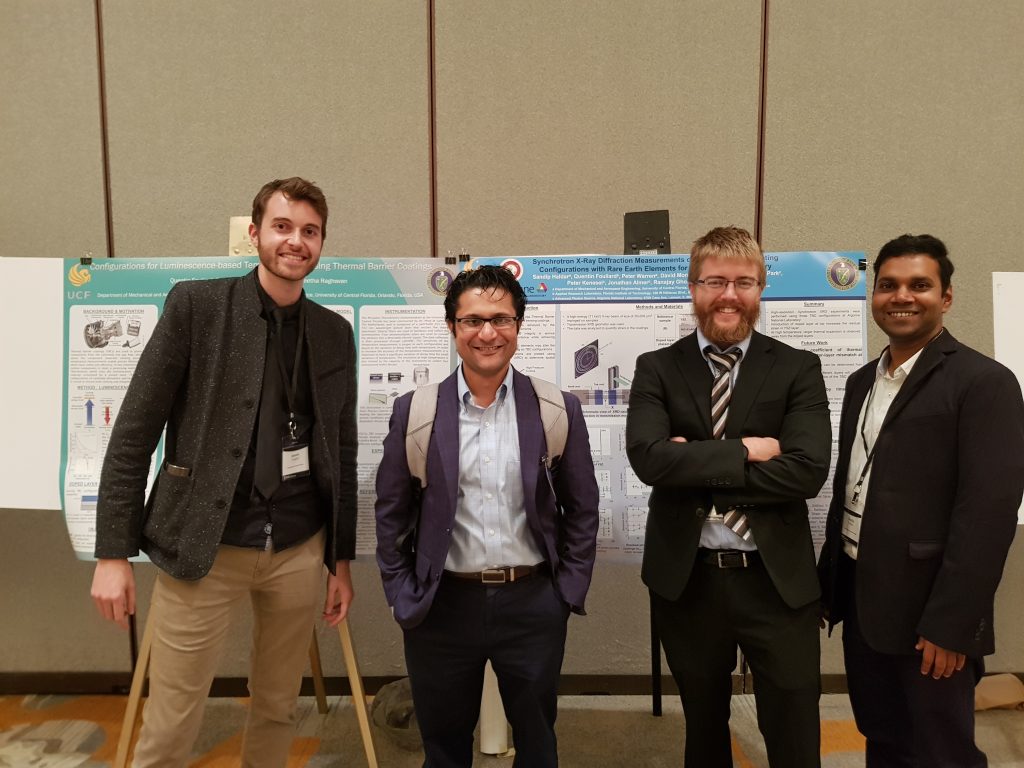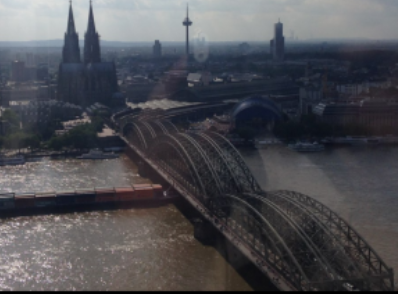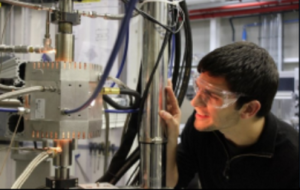Category Archives News
Lab Member Perla Latorre Presented at the 73rd International Astronautical Congress in Paris
Graduate student, Perla Latorre, presented her work “Investigating the Durability of Aluminum Oxide Coatings for Lunar Dust Mitigation” at the 73rd International Astronautical Congress (IAC). This years conference took place in Paris, France from September 18th to the 22nd.
The IAC is a 5-day annual congress that is described as the “one place and time of the year where all global space actors come together”. Over 6,000 participants from countries all over come together to cover all things space. It provides all participants with all the latest space advancements both in academia and industry as well as networking opportunities, contacts and potential partnerships. Each year, the IAC changes country, theme and local organizer, enabling all to learn more about, and be a part of the world space scene.
Perla Latorre-Suarez Named Among Best Aerospace Graduate Students in the World
We are pleased to announce and congratulate lab member Perla Latorre-Suarez as part of Aviation Week’s 20 Twenties Class of 2022. This prestigious annual list is compiled by Aviation Week Network in collaboration with the American Institute of Aeronautics and Astronautics to identify the most promising 20 students with the potential to lead change within the aerospace industry in the near future. Almost 100 students were nominated worldwide, with the winners being selected based on leadership skills, STEM innovation and academic excellence. To read the official announcement of winners by Aviation Week Network, click here.
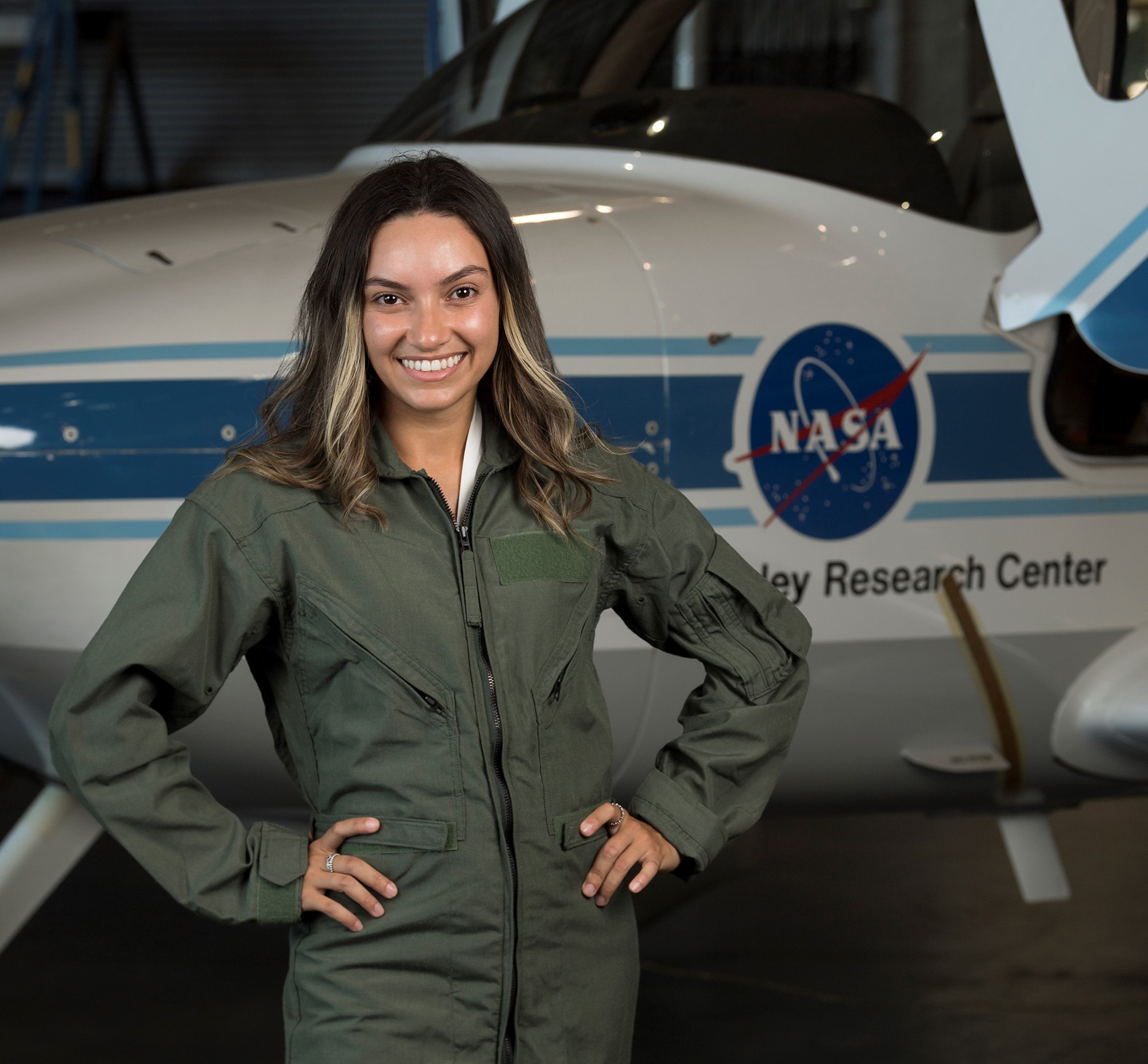 Perla will be honored for all of her hard work during the Aviation Week Network’s 65th Annual Laureate Awards and Dinner in Washington, D.C. later this year. Perla’s award has also been the subject to a UCF Today article, which can be read here.
Perla will be honored for all of her hard work during the Aviation Week Network’s 65th Annual Laureate Awards and Dinner in Washington, D.C. later this year. Perla’s award has also been the subject to a UCF Today article, which can be read here.
The German Aerospace Center (DLR) PhD Student Visits to UCF
Jan Erik Förster, a Ph.D. student under Dr. Ravisankar Naraparaju, from the German Aerospace Center (DLR) visited UCF earlier this month. He presented his work at a UCF Mechanical and Aerospace Engineering Special Seminar. His work, “Influence of Niobium coating on the oxidation behavior of Zr2B2”, focused on characterizing a novel protective overlay coating for ultra-high temperature ceramics for reusable hypersonic vehicle applications. Specifically Erik is investigating and working towards reducing the oxidation behavior of zirconium diboride coatings and their subsequent thermochemical reactions.
While at UCF Erik also toured of the Raghavan Research Group lab, where ongoing projects and collaborations were discussed.
Zachary Stein brings home the Best Poster Award from Germany!
We are pleased to announce that Zachary Stein has won Best Poster Award while representing our laboratory at the Irsee Thermal and Environmental Barrier Coatings VI conference. This conference was held in Irsee, Germany from June 19 – 24, 2022 and occurs once every 4 years. While at the conference, Zac presented his poster titled “Non-Destructively Capturing CMAS Degradation of EB-PVD Thermal Barrier Coatings through 3D Confocal Raman Renderings”. Zac, a former a Fulbright Fellow and current NDSEG fellow, presented research conducted as part of the UCF and DLR (German Aerospace Center) collaboration on high temperature materials funded by a National Science Foundation International Research Experiences for Students (IRES) program.

Zachary Stein with his DLR Collaborators. Left to Right: Dr. Uwe Schulz (DLR Scientist), Zachary Stein, Dr. Ravisankar Naraparaju (DLR Scientist), Cynthia Garcia (PhD Student at DLR), Christoph Mikulla (PhD Student at DLR), Dr. Juan Gomez (Previously PhD Student at DLR, now working at Pratt & Whitney)
This work was result of international collaboration with the German Aerospace Center (DLR) as well as with Dr. Laurene Tetard from the Nanoscience Technology Center at UCF and was made possible through National Science Foundation IRES.
Postdoctoral researcher Quentin Fouliard and Undergraduate Student Henry Bright prepared future experimental setup configurations at Oak Ridge National Laboratory
Last week, our postdoc Quentin Fouliard was present at Oak Ridge National Laboratory to prepare future in-situ high-temperature setups of our upcoming experiments at the neutron diffraction beamline and to give a seminar talk entitled “Increasing the efficiency of gas turbine engines combining novel designs and in-situ monitoring instrumentation”. He worked with Henry Bright, our undergraduate student who currently works at Oak Ridge in a 10-week internship program called Science Undergraduate Laboratory Internships (SULI). They worked on experimental setup designs and planification in close collaboration with Dr. Jeff Bunn, beamline scientist and our host at ORNL.
Our PhD student, Remelisa Esteves is selected as one of the students to participate at the NXS school!
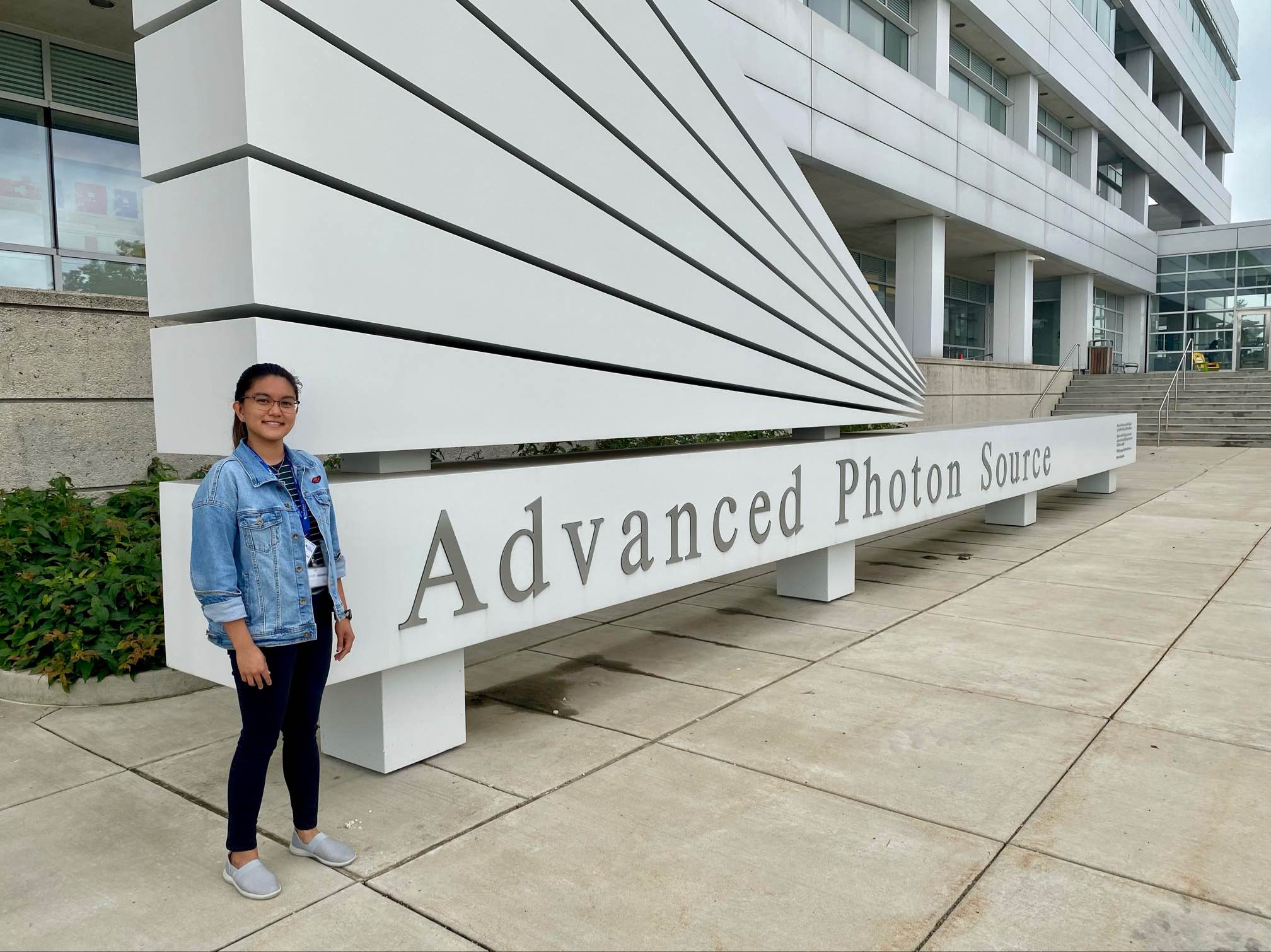 We are pleased to announce that Remelisa Esteves has been accepted into the 24th National School on Neutron and X-Ray Scattering (NXS) this summer! This school is organized by Oak Ridge National Laboratory and Argonne National Laboratory, where Remelisa participated in lectures presented by researchers from academia, industry, and national laboratories. She also performed short experiments to get hands-on experience using neutron and synchrotron sources.
We are pleased to announce that Remelisa Esteves has been accepted into the 24th National School on Neutron and X-Ray Scattering (NXS) this summer! This school is organized by Oak Ridge National Laboratory and Argonne National Laboratory, where Remelisa participated in lectures presented by researchers from academia, industry, and national laboratories. She also performed short experiments to get hands-on experience using neutron and synchrotron sources.
Henry Bright heads to ORNL as a summer intern!
 This summer, Henry Bright is working as an intern for 10 weeks at Oak Ridge National Laboratory (ORNL) as part of the Science Undergraduate Laboratory Internships program. He works within their Neutron Scattering Division and is focused on using neutron diffraction to characterize residual strain and stress within additively manufactured metals. This data is obtained using the High Intensity Diffractometer for Residual stress Analysis (HIDRA) at the High Flux Isotope Reactor (HFIR) at ORNL. Henry is using his time at HFIR to prepare a plan for implementing a furnace onto HIDRA to simulate the high temperature environment of a gas turbine engine. During our next experiment time, this will allow us to characterize residual stresses in two previously prepared Inconel 718 samples to determine the viability of additively manufactured metals for aerospace applications.
This summer, Henry Bright is working as an intern for 10 weeks at Oak Ridge National Laboratory (ORNL) as part of the Science Undergraduate Laboratory Internships program. He works within their Neutron Scattering Division and is focused on using neutron diffraction to characterize residual strain and stress within additively manufactured metals. This data is obtained using the High Intensity Diffractometer for Residual stress Analysis (HIDRA) at the High Flux Isotope Reactor (HFIR) at ORNL. Henry is using his time at HFIR to prepare a plan for implementing a furnace onto HIDRA to simulate the high temperature environment of a gas turbine engine. During our next experiment time, this will allow us to characterize residual stresses in two previously prepared Inconel 718 samples to determine the viability of additively manufactured metals for aerospace applications.
Summer Activities from Our UCF-MSTAR Students
Last August, UCF received a grant to create transformative space technologies by bringing together interdisciplinary teams of faculty and students to work on projects through NASA’s Minority University Research and Education Project (MUREP) Space Technology Artemis Research, or M-STAR, initiative. Our laboratory has 3 MSTAR fellows on summer internships as part of their research efforts.
Perla is a graduate student pursuing a master’s degree in aerospace engineering and is a fellow student of the UCF-MSTAR program. This Summer, Perla is working as an intern at the NASA Langley Research Center in Virginia. Perla is designing a coating to protect the lunar structures from the lunar dust. During her internship, she was introduced to instruments that will help her to perform experiments that will determine the durability of the ceramic coating in the lunar environment. Perla is also studying the adhesion forces of the lunar dust at the surface of the structures used in the lunar environment.
Oneilia Swaby is a recent grad who will be starting her PhD program at the University of Central Florida in the fall. For the past month, Oneilia has had the amazing opportunity to work as a student intern at the NASA Langley Research Center. During her internship she has gained a real interest in metallic materials and how they can be improved for multifunctional aerospace applications. She has also receive numerous training on equipment that will prove beneficial in her future research. She is very excited to take the knowledge gained there and apply it to her future PhD research.
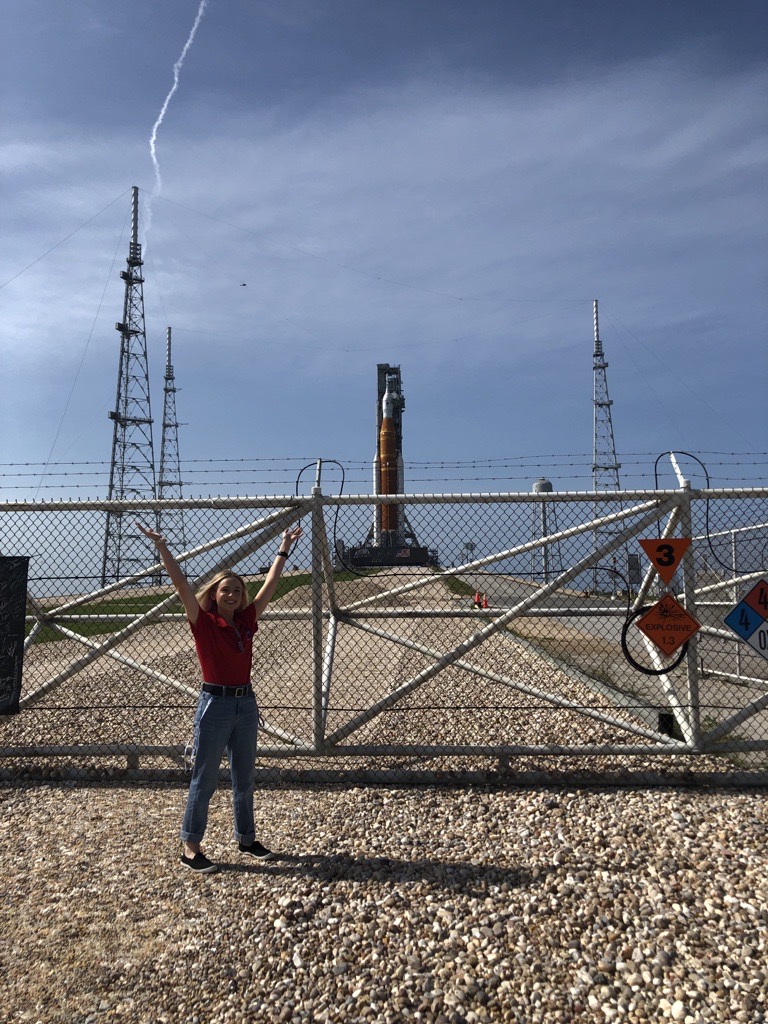 Katrina Gucwa is pursuing her Bachelor of Science in Aerospace Engineering at UCF. Through the MSTAR program and FSGC support, she was chosen to intern at NASA’s John F. Kennedy Space Center this summer. Her internship is based out of Swamp Works, a lab dedicated to developing new methods of in-situ resource utilization with a rapid research and development mindset. Her research centers around two topics: cryovolcanism, and the abrasive and adhesive effects of lunar regolith on various materials.
Katrina Gucwa is pursuing her Bachelor of Science in Aerospace Engineering at UCF. Through the MSTAR program and FSGC support, she was chosen to intern at NASA’s John F. Kennedy Space Center this summer. Her internship is based out of Swamp Works, a lab dedicated to developing new methods of in-situ resource utilization with a rapid research and development mindset. Her research centers around two topics: cryovolcanism, and the abrasive and adhesive effects of lunar regolith on various materials.
Our NASA Minds team recently presented their research at the AIAA Region II Student Conference
Our NASA Minds team presented their research at the AIAA Region II Student Conference. The AIAA Student Conference is a conference that provides students with the chance to present their research in a formal technical meeting atmosphere. Here students are able to exchange ideas and discuss programs with students from other schools in their region.
The NASA Minds Team consisting of Luiz Sotomayor, Lauren Bansberg, Jamie Mihelich, and Isaac Turner presented their work “Variation of Optical Properties of Lunar Regolith with Extraction Location and Manufacturing Process”, which was done with the help of their graduate mentor Perla Latorre.
STEM day Spring 2022
Lab members Luiz Sotomayor and Khanh Vo coordinated the Raghavan Research Group’s STEM Day outreach event with the assistance of other lab members. STEM Day is a free UCF event with the goal of fostering an interest in the exciting fields of science, technology, engineering and mathematics in students K-12. During STEM Day students were exposed to a variety of activities across numerous STEM related fields. The Raghavan Research Group STEM Day event introduced several groups of high schoolers to “The Balancing Act of Tensegrity.” Tensegrity is a principle of design that states that a stable structure can be created through the balancing of isolated compressed components with a continuous tensile force. The high schoolers that participated in the research groups event were given the opportunity to create their own Tensegrity structures. This activity allowed them to learn about the aerospace applications of the Tensegrity principle.
Our NASA Minds team and High Temperature Coating team present at UCF Student Scholar Symposium
Our NASA Minds and High Temperature Coating teams presented posters of their research at the UCF Student Scholar Symposium.
The High Temperature Coating team consisting of Vanessa D’Esposito, Steph Segler and Maximus Schieman presented their work “Evaluating the Effects of Sand Ingression on Novel Thermal Barrier Coatings Using Non-Destructive 3D Confocal Raman Spectroscopy”, which was done with the help of their graduate mentor, Zachary Stein
The NASA Minds Team consisting of Luiz Sotomayor, Lauren Bansberg, Jamie Mihelich, and Isaac Turner presented their work “Variation of Optical Properties on Lunar Regolith with Manufacturing Process”, which was done with the help of their graduate mentor Perla Latorre
To view the poster presentations click here
Oneilia Swaby Receives Prestigious UCF Trustees Doctoral Grant
Congratulations to lab member Oneilia Swaby for being awarded the prestigious University of Central Florida’s Trustees Doctoral Fellowship. This award is given to graduate students who demonstrate the qualities of excellent academic achievement, preparation, and potential for success in UCF graduate studies. Oneilia is currently on her last semester towards her Bachelor of Science in Aerospace Engineering. She is conducting research on Stress sensing coatings and is a current NASA MSTAR fellow collaborating with researchers from NASA Langley. The fellowship enables her to pursue a PhD starting this fall with a research focus on in-space manufacturing.
Lab Members Perla and Oneilia Receive the MSTAR Fellowship
Our very own Perla Latorre Saurez, graduate student, and Oneilia Swaby, undergraduate student, have both been selected as recipients of the NASA MSTAR Fellowship. Perla’s project is focused on developing wear resistant materials to protect structures from lunar dust, while Oneilia’s project will be focused on the processing of materials in microgravity. Their efforts on this fellowship will support NASA’s advancement of technologies needed for exploration of the Moon, Mars and beyond, specifically the Artemis mission.
RRG’s Team of Undergraduates, ‘Dr. Regolith’, is working to contribute to NASA’s Artemis mission
We are pleased to announce that the NASA MINDS proposal completed by our team of Undergraduates lab members, Rohan Madathil, Lauren Bansberg, Jamie Mihelich, Isaac Turner, Luiz Sotomayor Garcia (team lead) and Perla Latorre Suarez (Graduate Mentor) , has been selected for funding. The NASA MINDS design event is a multi-semester opportunity that allows undergraduate students to support NASA’s Artemis mission efforts. NASA MINDS is not a competition but rather a hands-on design and build collegiate learning experience.Teams selected by NASA will receive $1,500 to be used in the build of their design, and their faculty mentor will receive a $1,000 stipend upon successful completion of all requirements. Selected team projects will be reviewed by NASA judges and teams can receive recognition awards up to $5,000. Read more about it here
Zachary Stein Returns from Fulbright Research in DLR Cologne, Germany
RRG welcomes back Aerospace Engineering Doctoral student Zachary Stein from his recent Fulbright Fellowship spent in Germany. He spent the duration of his fellowship working with collaborators at the German Aerospace Center (Deutsches Zentrum für Luft- und Raumfahrt, DLR) on research involving Environmental Barrier Coatings. Zac is currently the leader of the High Temperature Coatings – CMAS research team, and plans to continue his Fulbright research back in the United States with his fellow team members. Welcome back Zac!
Paper on the use of pulsed eddy current thermography for corrosion detection published in the journal Aerospace Science and Technology
We are pleased to announce that our paper titled “Detection of corrosion under insulation on aerospace structure via pulsed eddy current thermography“, by lab members Jonathan Hernandez, Quentin Fouliard and Khanh Vo, has been published in the journal Aerospace Science and Technology. This paper presents results that demonstrate the potential of using pulsed eddy current thermography (PECT) to detect corrosion under insulation (CUI) on aerospace structures.
Dr. Raghavan and Lab Manager Perla Honored at UCF Football Space Game
Lab Member Wins Florida Space Grant Consortium Fellowship
Perla Latorre Suarez, A Graduate Aerospace student at UCF has been awarded with a Florida Space Grant Consortium (FSGC) Fellowship. The FSGC master’s fellowship Program is a one-year fellowship for full-time Master’s students. Perla has proposed the development of autonomous 3D printed sensors that will monitor the structural integrity of the vehicles and components used on other planetary surfaces. The printing method that will be developed to print these sensors provides a non-destructive method that can be used for multiple roles in lunar and planetary exploration.
Our team performs tomography experiments at Argonne National Laboratory
Our post-doctoral researcher Quentin Fouliard and our undergrad student Rohan Madathil got access for experimentation at beamline 2-BM at Argonne National Laboratory. The DARPA-funded project focuses on the mechanics of crack initiation and propagation in stress-corrosion cracking of aluminum 7075. X-ray computed tomography was performed to obtain micron-scale 3D reconstructions of the specimens.
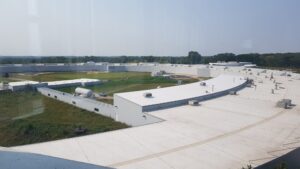
Visiting Lab Member Presents for HYPER Program
To showcase her work this past summer with the lab through the REU HYPER program, Sarah Uddin gave a final presentation on July 27 alongside her 13 colleagues about their aerospace-related research. She presented on ceramic carbides classified as ultra high temperature coatings (UHTCs) that can potentially be used in hypersonic environments, and how their grain geometries and residual strains can be investigated using Raman spectroscopy and high energy x-ray diffraction.

IRES Team Hosts International STARs Conference with DLR
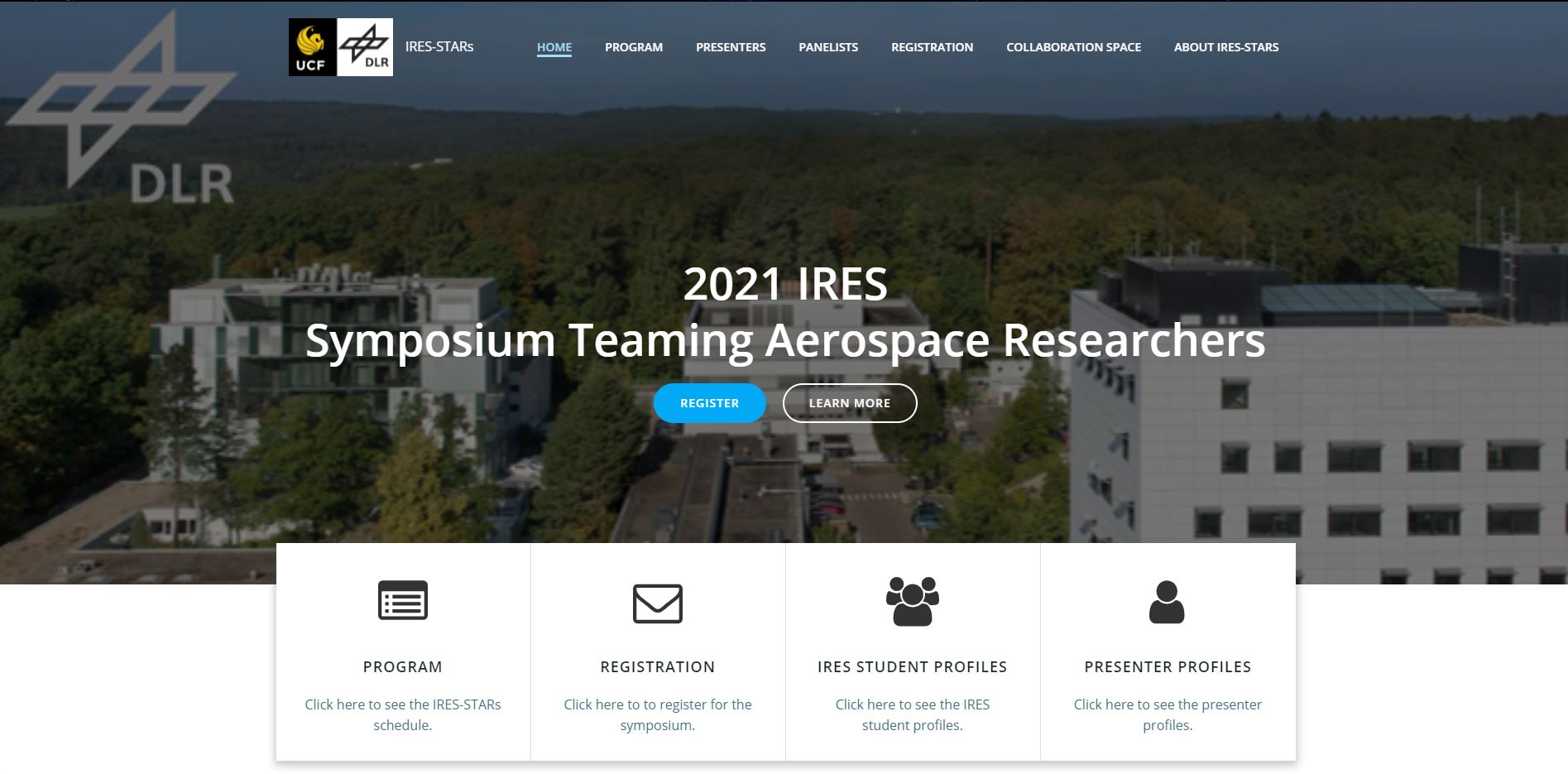 This past July, the 2021 IRES team took advantage of their virtual experience and hosted an international conference featuring UCF and DLR professionals. The Symposium Teaming Aerospace Researchers (STARs) took place over two days, and had panels featuring past IRES students and another with professionals from Argonne National Laboratory and Oak Ridge National Laboratory. The IRES students themselves alongside Dr. Raghavan hosted and moderated the symposium, and developed the website used to communicate the details of it (view the website here). The symposium also featured a collaboration space and a student space for attendees to share their work on, which can also be found on the website.
This past July, the 2021 IRES team took advantage of their virtual experience and hosted an international conference featuring UCF and DLR professionals. The Symposium Teaming Aerospace Researchers (STARs) took place over two days, and had panels featuring past IRES students and another with professionals from Argonne National Laboratory and Oak Ridge National Laboratory. The IRES students themselves alongside Dr. Raghavan hosted and moderated the symposium, and developed the website used to communicate the details of it (view the website here). The symposium also featured a collaboration space and a student space for attendees to share their work on, which can also be found on the website.
Lab Members Remelisa, Johnathan, and Perla are Interning at NREIP, Hermeus and the NSIN This Summer
Three of our lab members landed prestigious internships this summer!
 Remelisa Esteves, who is currently pursuing her PhD in Aerospace Engineering at UCF, was selected to participate in a 10-week long internship at the Fleet Readiness Center Southeast (FRCSE) under the Naval Research Enterprise Internship Program (NREIP). She is working with the F/A-18 Stress Team to perform stress analysis on fasteners with complex configurations.
Remelisa Esteves, who is currently pursuing her PhD in Aerospace Engineering at UCF, was selected to participate in a 10-week long internship at the Fleet Readiness Center Southeast (FRCSE) under the Naval Research Enterprise Internship Program (NREIP). She is working with the F/A-18 Stress Team to perform stress analysis on fasteners with complex configurations.
Remelisa said she “also had the opportunity to tour the hangars and learn what the engineers at FRCSE do to maintain the F/A-18s and typical damage that they deal with on these aircraft.”
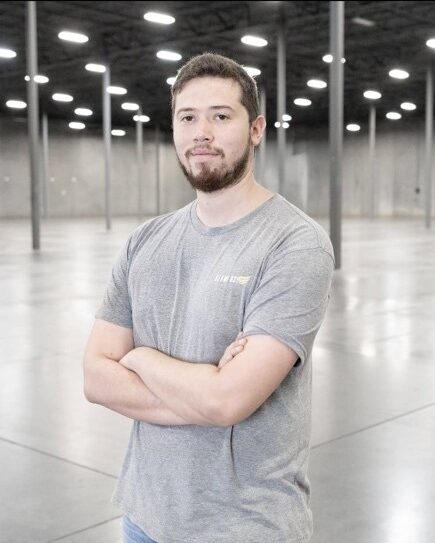
Johnathan Hernandez, who is also pursuing his PhD in Aerospace Engineering at UCF, is working as an Aerothermal Engineer at the Hermeus cooperation. The primary focus of the company is to develop the world’s fastest commercial aircraft! With speeds capable of reaching Mach 5, Hermeus hopes to connect people faster and bring much needed innovation to commercial flight.
“My role is to generate aerothermal databases for vehicles,” Johnathan says, “while generating thermal models for thermal insulation and gradient prediction. I’ve also gained significant hands-on experience with building up the test site.”
Additionally, Johnathan has gained hard skills such as becoming a trained welder and certified forklift operator which as an engineer, are highly applicable to his career path!
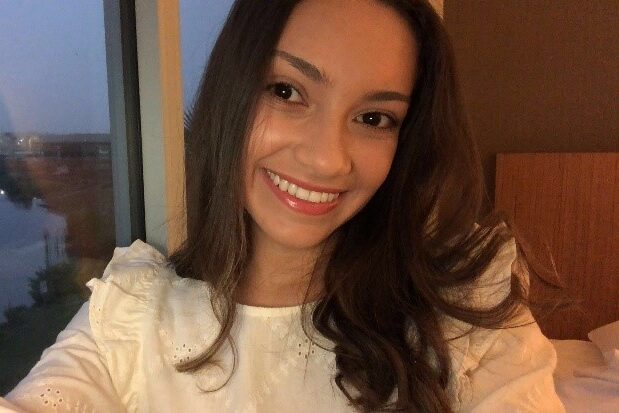 Perla Latorre is an Undergraduate student studying Mechanical Engineering at UCF. This summer, she was awarded a fellowship with the National Security Innovation Network (NSIN). Working with the Army Research Laboratory (ARL), she is responsible for designing electrical and physical connections for multiple drones attached to a single cord to allow them to work for a longer period of time.
Perla Latorre is an Undergraduate student studying Mechanical Engineering at UCF. This summer, she was awarded a fellowship with the National Security Innovation Network (NSIN). Working with the Army Research Laboratory (ARL), she is responsible for designing electrical and physical connections for multiple drones attached to a single cord to allow them to work for a longer period of time.
Lab members awarded a Summer Undergraduate Research Fellowship program at UCF
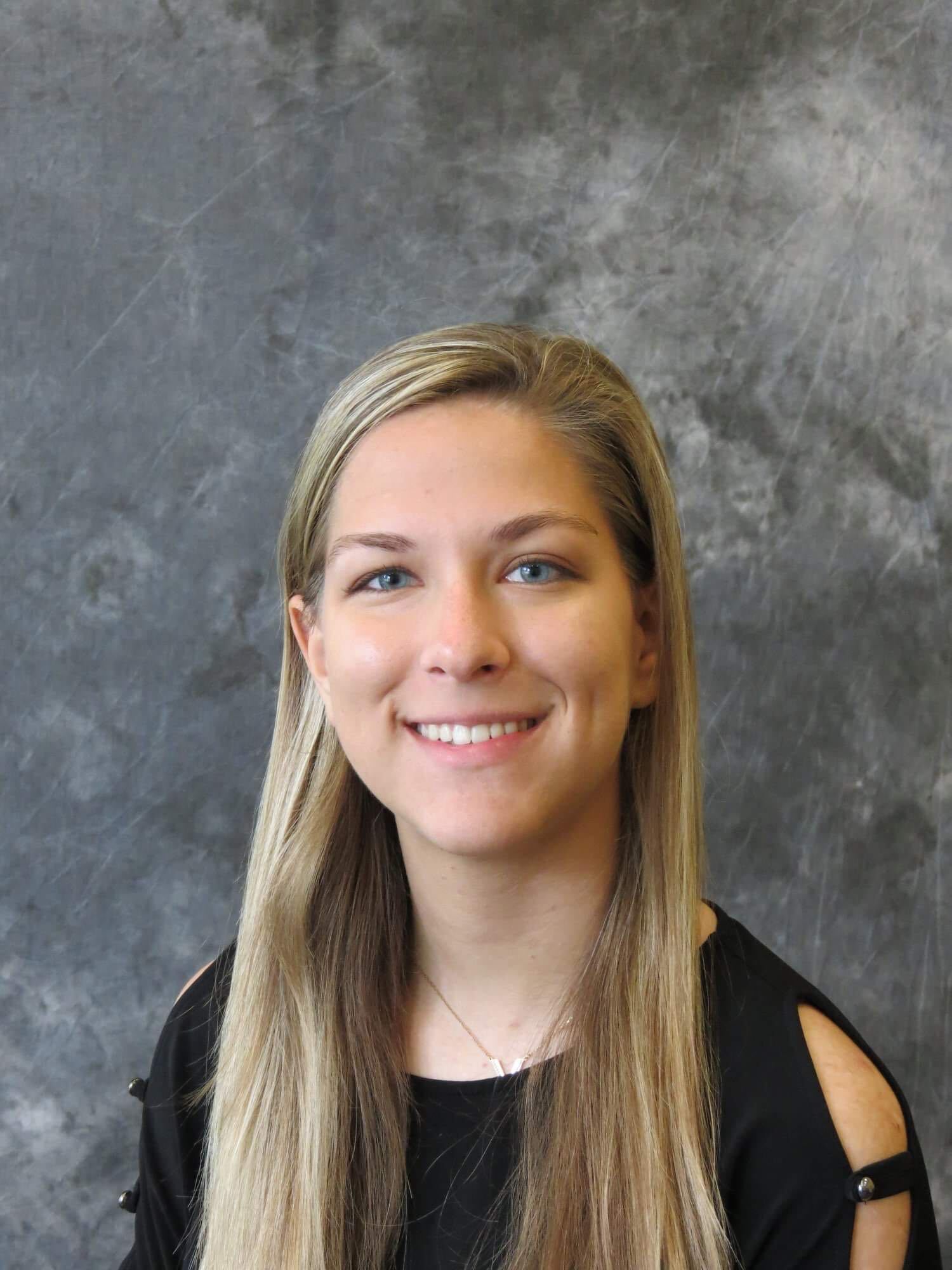

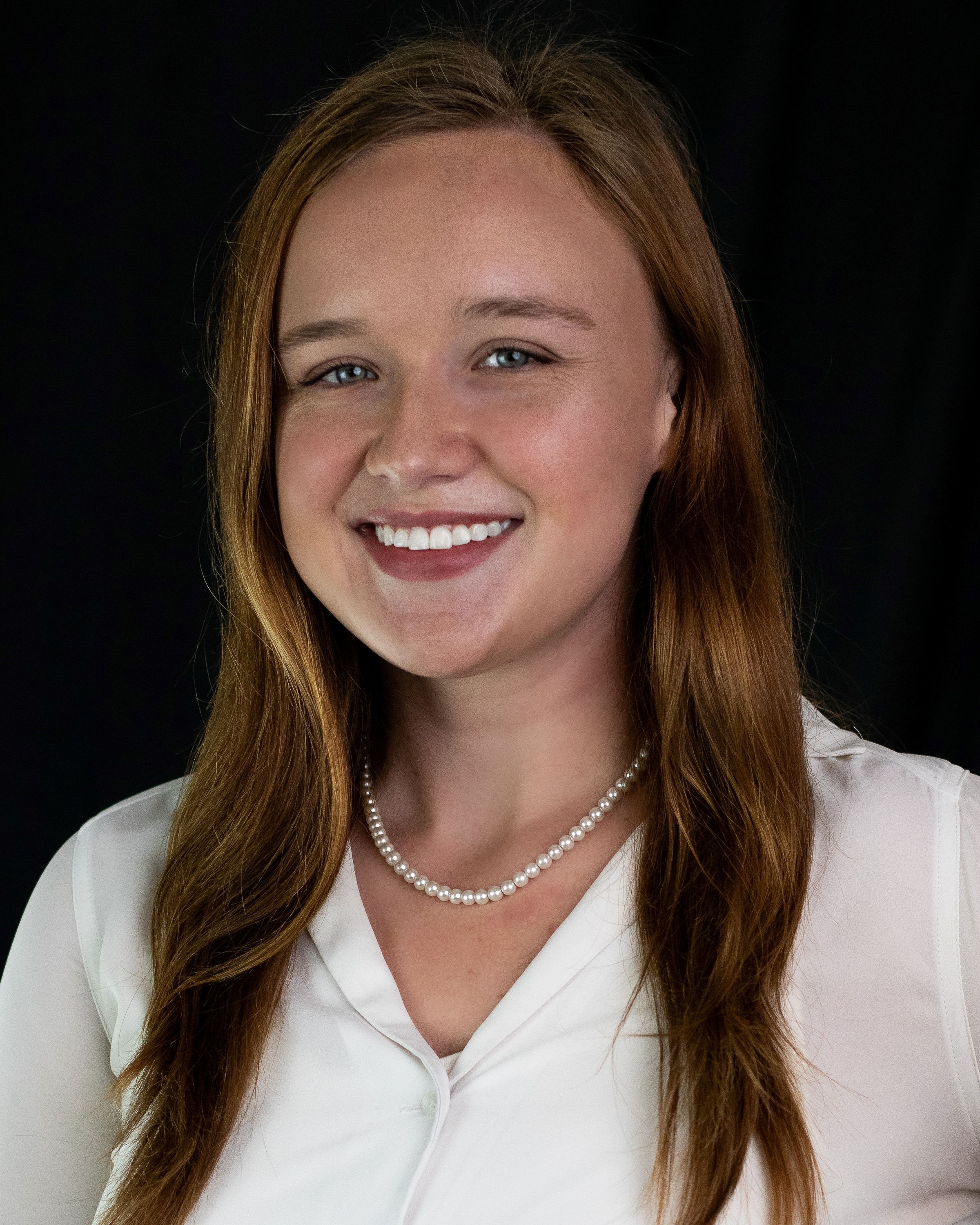
Pictured: Vanessa D’Esposito (left), Rohan Madathil (middle), and Rebecca Vollmann (right).
We are excited to announce that three of our lab members, Vanessa D’Esposito, Rohan Madathil, and Rebecca Vollmann, have been accepted into the Summer Undergraduate Research Fellowship program at UCF. As fellows, they are awarded a $1,500 scholarship as well as a stipend for their work with the Mechanical and Aerospace Engineering department.
Vanessa’s research investigates 3D non-destructive analysis of a reactionary protective layering that inhibits degradation and damage from molten sand infiltration in high temperature ceramic coatings, by use of Confocal Raman spectroscopy. Rohan’s research compares data collection methodologies during mechanical testing of high-temperature nickel-based superalloys and correlates expected outcomes using simulated data. Rebecca’s research explores the thermo-structural optimization of microarchitectural design for leading edges in hypersonic vehicles. She hopes to make space travel more sustainable by creating better structures for aerospace application by increasing their structural integrity and reusability.
They will present their research at the UCF Summer Research Showcase on July 30th, 2021.
Lab Member Quentin Fouliard Presented at the 2021 ASME Turbo Expo
Our postdoctoral researcher Dr. Quentin Fouliard presented at the Turbo Expo 2021: Turbomachinery Technical Conference & Exposition, an event hosted online by the American Society of Mechanical Engineers (ASME) between June 7-11, 2021. During the conference, he presented his paper titled “Synchrotron X-Ray Diffraction To Quantify In-Situ Strain On Rare-Earth Doped Yttria-Stabilized Zirconia Thermal Barrier Coatings” in the symposium on Thermal and Environmental Barrier Coatings. The paper focuses on characterizing the effects of the addition of rare-earth dopants on thermal barrier coating thermomechanical response using synchrotron X-ray diffraction. Dopant addition is very attractive for coating innovation as is allows for online temperature measurements and spectral characterization for coating structural evaluation and delamination monitoring. Monitoring capabilities have large potential to improve engine reliability and efficiency. It was found that 1.5 wt.% addition of Dy/Er dopants in yttria-stabilized zirconia has negligible impact on the coating’s response in engine operation conditions. The findings are therefore promising and encouraging to pursue the study on luminescent coatings as they seem to indicate safety and suitability of sensor coatings.
Postdoctoral researcher Quentin Fouliard received the UCF Alumni 30 Under 30 award
Our postdoctoral researcher, Quentin Fouliard, received the 2021 UCF Alumni 30 Under 30 award in a ceremony that was held online on May 20, 2021 and which recognizes exemplary young alumni. The ceremony congratulated 30 accomplished graduates who were chosen for their great professional success, commitment to helping others and track record of giving back to UCF and their local community. Quentin gained the attention of leaders in the field of Propulsion and Energy, who have cited his work, bringing attention to UCF’s standing in Aerospace Engineering. Quentin continues to exceed expectations as an early career scientist and innovator: he pursues his work on the development of novel materials and instrumentation for smart coatings for gas turbine engines as a postdoctoral researcher and he has filed three patents in collaboration with UCF. He works to elevate both his and UCF’s status as founders in technology that continues to make impact in the field of propulsion and energy. Quentin speaks fluently four languages and has served as a UCF Global Ambassador, volunteering to make the transition and adaptation process for new international students as comfortable as possible.
Our LunarMakes3D team receives multiple awards at NASA MINDS
We are excited to announce that our LunarMakes3D (LM3D) team composed of 5 undergraduate students: Perla Latorre-Suarez (lead), Vanessa D’Esposito, Rohan Madathil, Nya Segura-Watson, and Felix Morales, had the opportunity to present their work at NASA MINDS (MUREP Innovative New Designs for Space) with the objective of generating concepts and assisting NASA with the Artemis mission. On April 30, 2021, the team won the third place in the System Engineering Paper category and Honorable Mention in the Overall Design, Build, and Demonstration category. During this experience, the students had the opportunity to design and develop a 3D printing method that can autonomously print sensors to monitor integrity of space structures.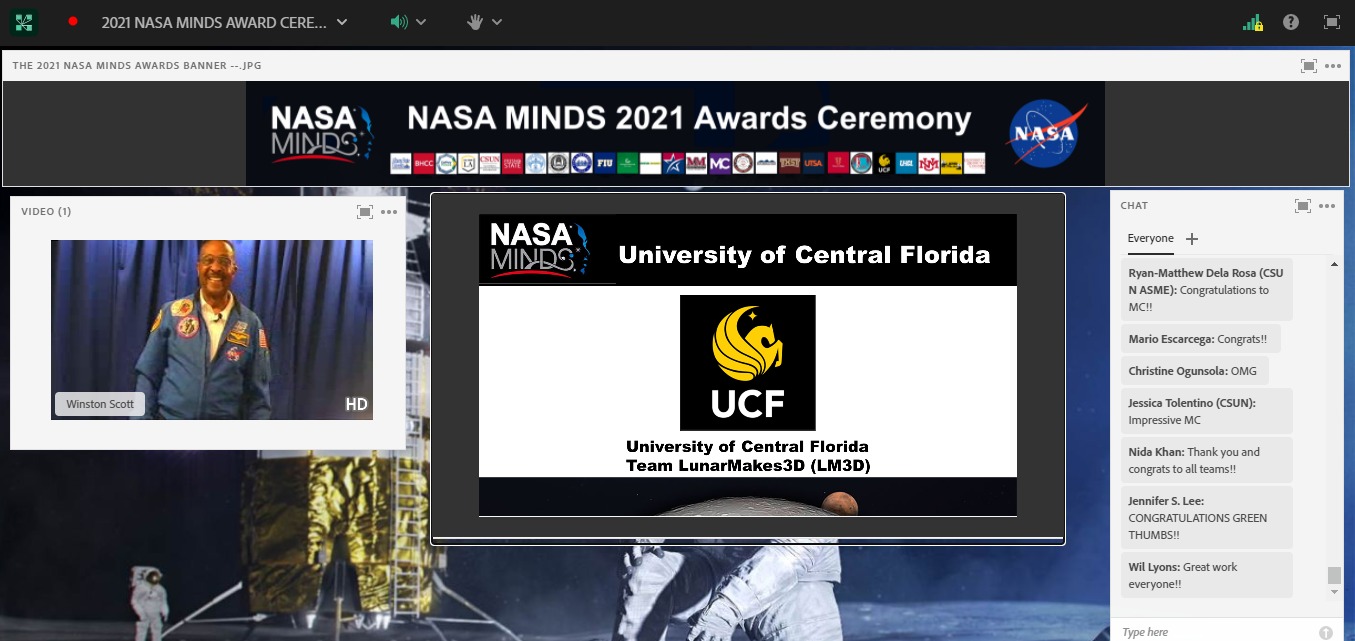
Lab Members Prapoojith, Vanessa, and Perla Present at AIAA 2021 Regional Student Conference, Vanessa Wins Second Place in Undergraduate Category
Our lab members Prapoojith Arcot, Perla Latorre-Suarez, and Vanessa D’Esposito presented their research at the AIAA 2021 Regional Student Conference. We are also delighted to announce that Vanessa won Second Place in the Undergraduate Category!
Prapoojith presented his work “Development of a Stress Corrosion Cracking Test Approach for Multi-Mode Measurements”.
Vanessa presented her work “Comparison of 3D Confocal Raman and High Energy X-ray Diffraction for the Measurement of Molten Sand Infiltration in Turbine Blade Coatings”.
Perla presented her work “3D Printed Stress Sensors for Non-Destructive Evaluation of Space Structures”, which was done with the help of her LM3D team mates Rohan Madathil, Nya Segura-Watson, Felix Morales and Vanessa D’Esposito.
Lab Members Perla and Vanessa Present at UCF Student Scholar Symposium; Perla, Zachary and Dr. Raghavan Win Big
Our lab members Perla Latorre-Suarez and Vanessa D’Esposito presented posters of their research at the UCF Student Scholar Symposium. Perla presented her work “Developing a 3D Printing Method to Print Stress Sensing Sensors for Structural Health Monitoring”, which was done with the help of her LM3D team mates Rohan Madathil, Nya Segura-Watson, Felix Morales and Vanessa D’Esposito. Vanessa presented her work “Effects of CMAS Infiltration on Thermal Barrier Coatings Analyzed by Confocal Raman”, which was done with the help of her graduate mentor, Zachary Stein.
We are also delighted to announce that Dr. Raghavan and two of our lab members won big in this symposium! Dr. Raghavan won the Champion of Undergraduate Research Faculty Award. Zachary won the Undergraduate Research Award. And Perla is recognized as an Undergraduate Presentation Winner.
A full list of winners can be seen here.
Lab Member Zachary Stein Receives NDSEG Fellowship
We would like to congratulate graduate student, Zachary Stein, for receiving the Department of Defense’s National Defense Science and Engineering (NDSEG) Fellowship. This is a program that is designed to increase the number of United States citizens trained in science and engineering disciplines. This program encourages baccalaureate students to enter graduate school and ultimately gain doctorates for future research and development. This fellowship is given to individuals who have demonstrated ability and special aptitude for advanced training in science and engineering. Zachary also received honorable mention for the National Science Foundation Graduate Research Fellowship Program (NSF GRFP), which is a fellowship given to STEM students who are pursuing research-based master’s and doctoral degrees.
Zac will be continuing his doctoral research on high temperature coatings, working with mentors at DLR in Germany and Argonne National Laboratory in the US.
Dr. Raghavan featured in Engineering Gals “Graduate School Advice” Panel
Dr. Seetha Raghavan participated in the Engineering Gals Graduate School Advice Seminar on March 17th. This was a seminar dedicated to helping engineering students, who aspire to attend graduate school or are currently in graduate school, with questions and experiences that can help motivate these students to excel in school. The panelists shared their experiences in joining graduate school and the difficulties that they had to overcome. Engineering Gals is an online community for women engineers whose mission is to share resources and opportunities to inspire the next generation of engineers.
Check out the seminar here!
IRES 2021 Team Did International Outreach in Two Skype-A-Scientist Sessions
The IRES 2021 team presented during two Skype-a-Scientist sessions, speaking to classrooms in Canada and the Philippines! Vanessa, Samantha, Benjamin and Dr. Raghavan shared how engines work with Ms. Laura Genge’s 5th grade class in Toronto and fielded questions by curious students ranging from flight, space, rockets and studying or doing research abroad. Michael took over for Samantha when the IRES team caught up with Ms. Jimenez at Xavier School in the Philippines later that week. Over 60 pre-college students and engineering students joined the session where the IRES team shared details of engine design, testing, high temperature coatings and superalloys. The team and the students also enjoyed discussing research and comparing notes on classes in the U.S. and the Philippines.
Skype-a-Scientist allows thousands of scientists to connect with teachers, classrooms, groups, and the public around the world. It gives students the opportunity to meet real scientists and get answers to their questions from them. You can learn more about this organization here.
RRG Post-Doctoral Researcher, Quentin Fouliard, Featured on UCF MAE News Article
We are excited to announce that our post–doctoral researcher, Quentin Fouliard, Ph.D., has been featured on the UCF Mechanical and Aerospace Engineering (MAE) department’s website, through the Office of Technology Transfer.
The article talks about three of Dr. Fouliard’s projects with RRG from the past four years that he has worked with the lab. These are “rare-earth doped thermal barrier coatings for improved temperature sensing,” “a phosphor thermometry device for simultaneously characterizing two or more luminescence signals,” and “a system for mapping temperature gradients of thermal barrier coatings.”
The article is titled “Post-Doctoral Research Works to Push the Boundaries of Aerospace Materials” and can be found on the UCF MAE website here.
Lab Member Zachary Stein Honored With Founders’ Day Outstanding Honors Undergraduate Thesis Award
We are delighted to announce that lab member Zachary Stein has been honored with the Founders’ Day Outstanding Honors Undergraduate Thesis Award in the category of Engineering and Technology. This award is based on his thesis work focusing on the chemical degradation of high temperature ceramic coatings found within airplane engines from sand infiltration (You can read his thesis here!).
The Founders’ Day Outstanding Thesis Award is awarded to students who has completed an Undergraduate thesis and graduated with their Bachelor’s. Every year, one student is selected from each of four categories of Engineering and Technology; Social Sciences, Business, and Education; Natural Sciences and Health Sciences; and Arts and Humanities. This award is given to theses determined by the Honors Selection Committee based on the originality of ideas as well as the thesis’ contribution to their discipline and its significance to the field through comprehensive and insightful research.
Zac, along with the other recipients, will be honored during the Founder’s Day Convocation Ceremony scheduled to be held on April 7th, 2021. To read more about the award and its requirements, click here.
Lab Member Quentin Fouliard Named One of UCF’s 30 Under 30
We are excited to announce that Quentin Fouliard has been named one of UCF’s 30 Under 30 Alumni Award Winners! This program recognizes outstanding young alumni who continue to “Reach for the Stars” in their professional and personal lives since graduating from the University of Central Florida. Quentin is a post-doctoral researcher leading a DoE UTSR project that focuses on the advancement of instrumentation methods for temperature and stress monitoring in extreme environments.
The official list of honorees was announced February 22nd, and the award recipients are scheduled to be honored in a celebratory event on May 22nd. To read the complete list of winners and to learn more, check out this article.
Dr. Raghavan Featured in Space Champion Interview
We are delighted to announce that Dr. Seetha Raghavan was featured in Space Champion Interview, a YouTube channel by IgnitedThinkers where space champions and their diverse space careers are showcased to encourage the future rocketeers. In this interview, Dr. Raghavan discusses about her research, obstacles, advice, and job experiences.
Check out the interview here!
Lab Member Remelisa Esteves Awarded A Summer Internship Under NREIP
We would like to congratulate Remelisa Esteves for being awarded a summer internship opportunity under the Naval Research Enterprise Internship Program (NREIP). This is a ten-week summer internship program, which provides opportunities for both graduate and undergraduate college students to participate in conducting research at a Department of Navy laboratory under the guidance of a research mentor. We wish Remelisa all the best on this very exciting opportunity!
Learn more about NREIP here.
Lab Member Jillian Gloria Featured on UCF Today
We are delighted to announce that one of our newest lab members, Jillian Gloria, was featured on UCF Today. The article mentions about her accomplishments, research, outreach, and her dream to become an astronaut. See the article here: A UCF Aerospace Engineering Student Has Out-of-This World Dreams.
Jillian is a member of our Hypersonics Materials team and was selected to be a member of this year’s IRES team (Read more about that here: 2021 IRES Team Announcement). Read the UCF Today article to learn more about it and the other projects that she has worked on!
Lab Member Remelisa Esteves’s Work on Smart Coatings Featured on AIAA Aerospace America 2020 Year In Review
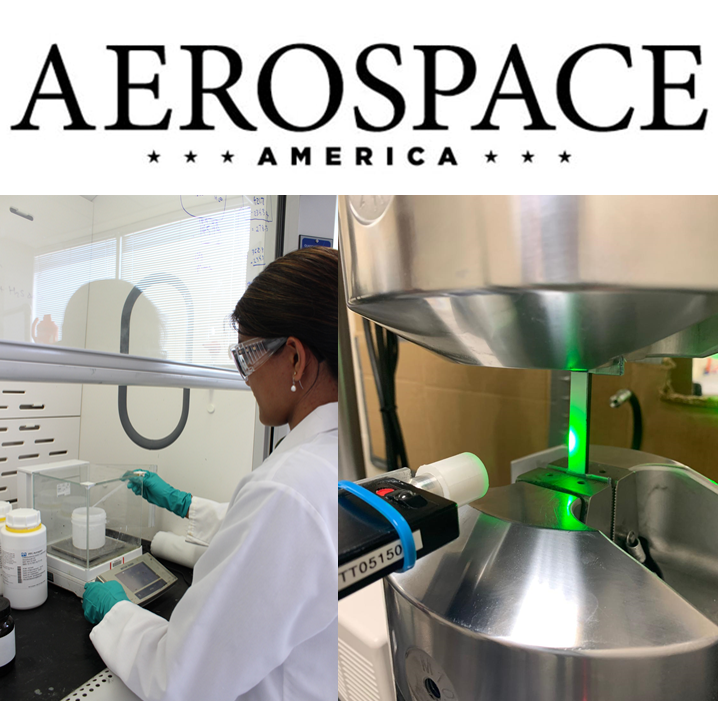 We are delighted to announce that Remelisa Esteves‘s work on smart coatings was featured in AIAA’s Aerospace America 2020 Year in Review under Aerospace Design and Structures! The Year in Review article mentions about her internship, sponsored by the NSF INTERN program, where she was working on creating tailorable, smart polymer-based coatings with embedded photo-luminescent and ceramic nanoparticles that act as stress sensors. The article can be viewed here.
We are delighted to announce that Remelisa Esteves‘s work on smart coatings was featured in AIAA’s Aerospace America 2020 Year in Review under Aerospace Design and Structures! The Year in Review article mentions about her internship, sponsored by the NSF INTERN program, where she was working on creating tailorable, smart polymer-based coatings with embedded photo-luminescent and ceramic nanoparticles that act as stress sensors. The article can be viewed here.
Aerospace America is the magazine of AIAA that presents the latest information and analysis of industry issues and technologies. It also features breaking news that affect the aerospace technology, industry, and profession.
2021 IRES Team Announcement
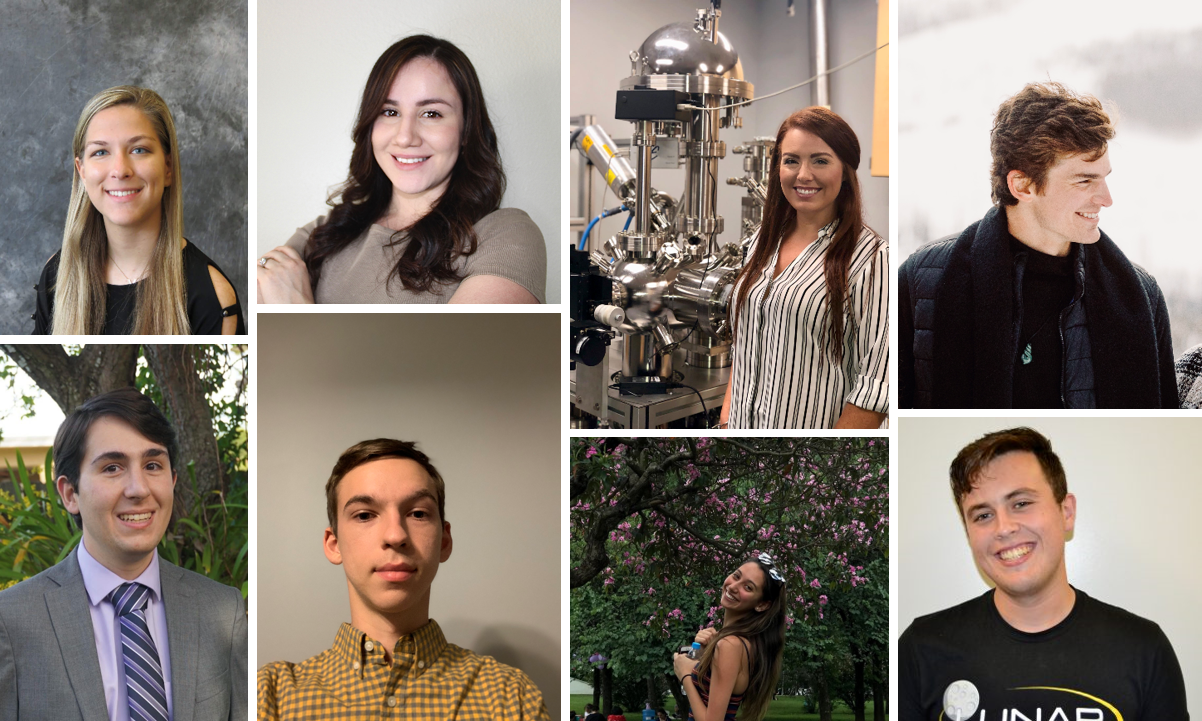
IRES 2021 Team top row, left to right: Vanessa D’Esposito, Rosa Olivera, Jillian Gloria, and Andrew Vigne; bottom row, left to right: Michael Tonarely, Benjamin Latrobe, Samantha DeNicola, and Max Fortin.
The 2021 International Research Experience for Students (IRES) team has been selected! Jillian Gloria, Max Fortin, Rosa Olivera, Samantha DeNicola, Michael Tonarely, Andrew Vigne, Benjamin Latrobe and Vanessa D’Esposito will join a vibrant and growing collaboration among UCF researchers and DLR scientists in advancing the research and education of combustion and materials technologies. They are a cross-disciplinary team of mechanical and aerospace engineers at both undergraduate and graduate levels whose research specialties include combustion, propulsion, materials, computational fluids, aerodynamics, and more. These students will spend the summer conducting research under the mentorship of scientists from UCF and the German Aerospace Center (DLR). To learn more about the program, click here. Learn more about the IRES students here and keep up with them through their blog page.
Dr. Raghavan and UCF MAE Faculty Hosted Two-Part “Catalyzing New Space Technologies” Virtual Workshop
Dr. Raghavan, Dr. Vasu, and Dr. Terracciano hosted a two-part, virtual workshop called “Catalyzing New Space Technologies”, which is aimed at developing a stronger partnership with NASA for future space-related research. The first part of the workshop occurred on November 20, 2020, and the second part occurred on January 8, 2021.
Part I of the workshop gathered internal UCF faculty members, who are interested in the space-related research, to create a discussion-friendly environment to gather ideas in the hopes of helping students become more involved and acquainted with the space industry during their undergraduate careers. Some prominent topics of discussions included coming up with better marketing strategies to make UCF a good prospect school for students interested in space, how faculty members could create partnerships between students and UCF alumni in the field, and how to aid project funding. Members of the workshop were later split into different breakout rooms to facilitate further discussion. Here, faculty members were asked to investigate NASA’s technology taxonomies to see where their research could fit in.
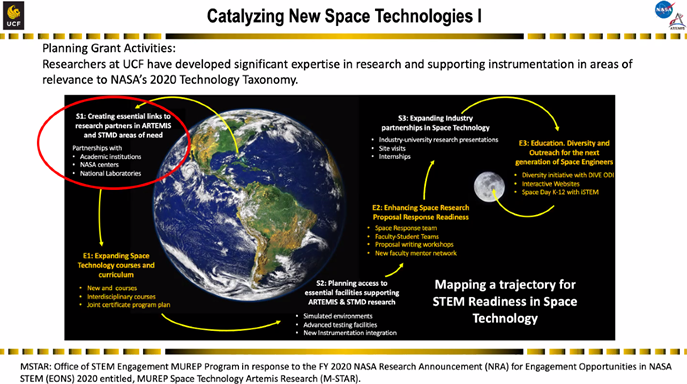 Part II of the workshop featured two panel sessions with invited guests from industry, NASA centers, and consortiums to foster connections between industry and university with the aim to enhance competitiveness and readiness for NASA opportunities. This workshop is in response to UCF’s recent winning of a NASA planning grant awarded to UCF, “Mapping a Trajectory for STEM Readiness in Space Technology”, with the goal to facilitate industry and university collaborations to bring about innovative technologies for the Artemis Program and future missions.
Part II of the workshop featured two panel sessions with invited guests from industry, NASA centers, and consortiums to foster connections between industry and university with the aim to enhance competitiveness and readiness for NASA opportunities. This workshop is in response to UCF’s recent winning of a NASA planning grant awarded to UCF, “Mapping a Trajectory for STEM Readiness in Space Technology”, with the goal to facilitate industry and university collaborations to bring about innovative technologies for the Artemis Program and future missions.
2021 AIAA SciTech forum presentations
We are excited to announce that our lab members Quentin Fouliard and Johnathan Hernandez presented their research outcomes at the 2021 AIAA SciTech forum in the symposium Structural Health Monitoring and Prognosis II, held virtually today, on January 12. Their presentations discussed the results published in their papers “Delamination of Electron-Beam Physical-Vapor Deposition Thermal Barrier Coatings using Luminescent Layers” and “Characterization of corrosive defects through pulsed eddy current thermography for aircraft panels”.

Lab Member Jose Mayi-Rivas Presented at the MS&T 2020 Conference
We are excited to announce that lab member Jose Mayi-Rivas presented his work as an invited speaker at the virtual MS&T 2020 conference, held earlier this month. In this study, a novel modeling method that enables fast predictions on residual stresses which depend on additive manufacturing parameters was showcased. The potential benefits of this modeling suite are tremendous as they would allow optimization of manufacturing processes, providing significant means for the improvement of mechanical designs of additively manufactured components. The talk was given in the symposium: Additive Manufacturing Modeling and Simulation: AM Materials, Processes, and Mechanics — Additive Manufacturing Modeling and Simulation – Residual Stress, Fatigue Property, and Thermal Property. Aside from his research in our lab, Jose is a Design and Analysis Engineer at NASA at Kennedy Space Center. Jose benefits from this industry viewpoint to further develop attractive modeling solutions in this research that can satisfy current and future industry challenges in this field.
Lab Member Quentin Fouliard Presented at the 2020 University Turbine Systems Research Project Review Meeting
We are excited to announce that our post–doctoral researcher, Quentin Fouliard, has presented recent outcomes and progress on our project funded by the Department of Energy named “In-situ Optical Monitoring of Operating Gas Turbine Blade Coatings Under Extreme Environments” at the 2020 University Turbine Systems Research Project Review Meeting, held on November 19. This presentation provided updates on the project tasks and showcased some of the accomplishments, including this year’s publications on the phosphor thermometry instrumentation and on thermal barrier coating damage monitoring.
Our Team Manufactured Thermal Barrier Coatings for Wireless Dielectric Sensing at FIT
Last week, lab members Quentin Fouliard and Johnathan Hernandez went to the Center for Advanced Coatings at the Applied Research Laboratory of the Florida Institute of Technology (FIT) in Melbourne, Florida. Our team manufactured thermal barrier coating configurations via air plasma spray that will allow to advance wireless dielectric measurements for non-contact temperature monitoring inside gas turbine engines. This novel approach is a joint effort between UCF faculty including our group and the research firm CREARE, and funded by STTR DoE. During thermal spray deposition, substrate temperature was recorded using infrared cameras and these results will support modeling efforts for stress predictions in as-deposited coatings.
Paper on Thermochemical Evolution of CMAS-Infiltrated TBCs Published to Journal of the European Ceramic Society
We are pleased to announce that our paper titled “Detrimental effects of sand ingression in jet engine ceramic coatings captured with Raman-based 3D rendering”, by lab member Zachary Stein, has been published in the Journal of the European Ceramic Society. The work presented in this paper was done in collaboration with the German Aerospace Center (DLR) through the NSF International Research Experience for Students (IRES) program. The results were obtained using 3D confocal Raman spectroscopy to map the thermochemical evolution of monoclinic phase volume fraction in standard EB-PVD TBC coatings infiltrated with CMAS. This provided a method for quantitatively and non-destructively characterizing the degradation of coatings as a result of CMAS infiltration.
RRG’s Team of Undergraduates, LunarMakes3D, Set to Contribute to Moon Research with NASA
We are excited to announce that the NASA MINDS proposal from our team of undergraduate students, led by Perla Latorre Suarez, has been accepted. This team, called LunarMakes3D, includes Rohan Madathil, Nya Segura-Watson, Vanessa D’Esposito, and Felix Morales.
The team members of LunarMakes3D will learn more about the Artemis mission. To contribute to this mission, they will develop autonomous 3D printed nanomaterial sensors. During the first semester, the team will be doing research and creating a plan that includes a preliminary design review form. Following the review of the preliminary report, the team may be selected for the second semester to focus on developing the printing method, printing the sensors, and testing them.
 NASA MINDS is a multi-semester, undergraduate level opportunity that will support NASA’s Artemis mission and their Human Exploration and Operations Mission Directorate. The skills, creativity, and innovation of the student teams are challenged as they are asked to design and build technologies needed for NASA’s Artemis mission, with the support of their faculty mentors. Teams selected by NASA will receive $1,500 to be used in the build of their design, and their faculty mentor will receive a $1,000 stipend upon successful completion of all requirements. Selected team projects will be reviewed by NASA judges and teams can receive recognition awards up to $5,000.
NASA MINDS is a multi-semester, undergraduate level opportunity that will support NASA’s Artemis mission and their Human Exploration and Operations Mission Directorate. The skills, creativity, and innovation of the student teams are challenged as they are asked to design and build technologies needed for NASA’s Artemis mission, with the support of their faculty mentors. Teams selected by NASA will receive $1,500 to be used in the build of their design, and their faculty mentor will receive a $1,000 stipend upon successful completion of all requirements. Selected team projects will be reviewed by NASA judges and teams can receive recognition awards up to $5,000.
Dr. Ghosh and Dr. Raghavan Receive DARPA Grant to Study the Initiation of Stress-Corrosion Cracking in Aircraft Components
The Defense Advanced Research Projects Agency (DARPA) has awarded Dr. Ghosh and Dr. Raghavan $100,000 to study the initiation and early incubation of stress-corrosion cracking (SCC) in aircraft components, and develop computer models to pinpoint these stages. The goal is that once these computer models are developed, the creation of physical models, and eventually SCC early detection systems, will begin development.
They were featured in UCF Today and UCF MAE, where you can learn more about their project.


The students currently working on the project are Doctoral student Zachary Stein (lead), and Undergraduate researcher Vanessa D’Esposito. They will be working with techniques such as in situ testing with high energy X-Ray diffraction and Raman Spectroscopy, both of which will provide insightful information regarding the team’s samples throughout the project.
The team will benefit from the expertise of postdoctoral scholar Dr. Quentin Foulard and graduate student Johnathan Hernandez, and the in situ testing instrumentation and methods developed in their research.


IRES 2021 Applications Are Now Open
Through the IRES program, graduate and undergraduate students can participate in a research collaboration with the German Aerospace Center (DLR) in Cologne, Germany to conduct research on advancing materials and combustion technologies for next generation propulsion and power generation systems. Applicant requirements include being enrolled at UCF, being enrolled in directed research during the Spring and Summer 2021 terms, and participating in research activities 10-20 hours a week. Students who are accepted will have the opportunity to work with leading scientists at a state-of-the-art facility as well as be able to participate in industrial visits and cultural activities. Housing and a competitive stipend are provided. The deadline to apply is November 20th, 2020.
Click here to learn more about the IRES program.
Quantifying thermal barrier coating delamination through luminescence modeling
Read our paper in Surface and Coatings Technology
Abstract:
Thermal barrier coatings (TBCs) are widely used in the hot sections of gas turbine systems as they are remarkably efficient in insulating the underlying superalloys, leading to higher operating temperatures and therefore enhancing the performance of the engines. However, this benefit is only possible if the integrity of the TBC under aggressive thermo-mechanical environments is ensured. Delamination is a common but hard to detect failure mode. We present, in this work, supported by experimentation, the implementation of a modeling approach applying the Kubelka-Munk theory to provide numerical quantification of luminescence contrast and intensity due to top coat delamination in TBCs. The method relies on the drastic change in reflectivity when a delamination forms, exploiting it for high-contrast luminescence mapping. Two distinct TBC configurations containing an erbium-doped yttria-stabilized zirconia (YSZ:Er3+) layer for delamination sensing were used to validate this model. A delamination zone induced by Rockwell indentation was successfully tracked by measuring an increase of the intensity of the erbium emission line at 562 nm. Luminescence-based methods for delamination detection can provide a revolutionary non-invasive technique, with potential for both off-line and on-line engine monitoring.
To view more posts like this, check out the Highlights page here.
You can also hear about Quentin’s paper in the All Audio Posts page here.
High-energy X-ray phase analysis of CMAS-infiltrated 7YSZ thermal barrier coatings: Effect of time and temperature
Read our paper in Journal of Materials Research
Abstract:
Calcium–magnesium–alumino-silicate (CMAS) particulates enter the aero-engine in a sandy environment, melt and infiltrate into 7 wt% yttria-stabilized zirconia (7YSZ) thermal barrier coatings (TBCs), reducing their lifetime. This leads to chemical degradation in 7YSZ accompanied by tetragonal to monoclinic phase transformation upon cooling. In this work, electron-beam physical vapor deposition coatings were infiltrated with a synthetic CMAS. Synchrotron X-ray diffraction measurements show that CMAS infiltration at 1250 °C has about 43% higher monoclinic phase volume fraction (PVF) at the coating surface compared to 1225 °C and remains consistently higher throughout the coating depth. Additionally, the increase in annealing time from 1 to 10 h results in a 31% higher monoclinic phase at the surface. Scanning electron microscopy revealed the presence of globular monoclinic phases corresponding spatially with the above findings. These results resolve the impact of time and temperature on CMAS infiltration kinetics which is important for mitigation.
To view more posts like this, check out the Highlights page here.
You can also hear about Zachary’s paper in the All Audio Posts page here.
Paper on the Impact of Time and Temperature of CMAS on TBCs Published to Journal of Materials Research
We are pleased to announce that our paper titled “High-energy X-ray phase analysis of CMAS-infiltrated 7YSZ thermal barrier coatings: Effect of time and temperature” by lab member, Zachary Stein, has been published in Journal of Materials Research. This paper presents results that show the impact of time and temperature on calcium–magnesium–alumino-silicate (CMAS) infiltration into thermal barrier coatings.
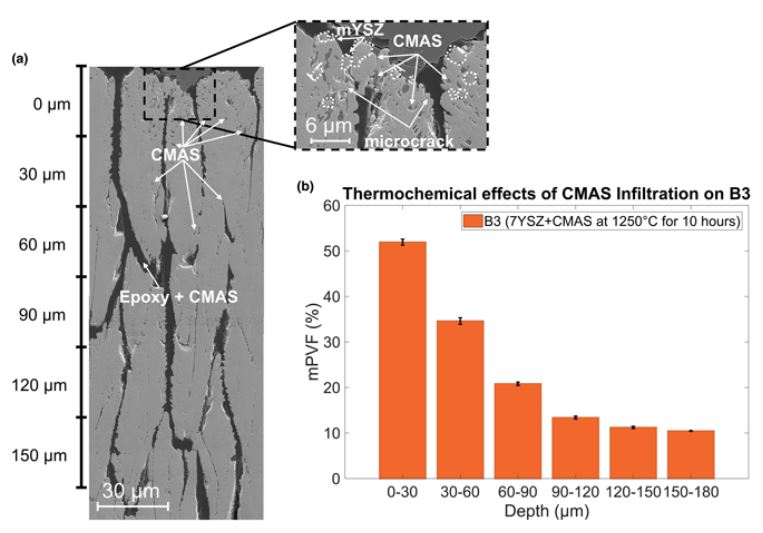 You can learn more about Zachary’s paper in the Highlights page here and in the All Audio Posts page here.
You can learn more about Zachary’s paper in the Highlights page here and in the All Audio Posts page here.
Dr. Raghavan Featured in Science Off Camera Podcast
We are excited to announce that Dr. Seetha Raghavan was featured in Science Off Camera, a podcast series where Teledyne Princeton Instruments interviews scientific imaging experts from around the world. There, she talked about what drove her towards her passion in aerospace engineering and her research on sensing materials.
Check out this podcast at: https://anchor.fm/science-off-camera
Lab member Quentin Fouliard presented at the 2020 Sensors and Controls Project Review Meeting
We are excited to announce that, today, August 26, 2020, our post–doctoral researcher, Quentin Fouliard, has presented the most recent results of the Department of Energy funded project “In-situ Optical Monitoring of Operating Gas Turbine Blade Coatings Under Extreme Environments” at the 2020 Sensors and Controls Project Review Meeting. This conference was a great opportunity to highlight major project accomplishments and show the capabilities of the technologies developed in this project such as the phosphor thermometry instrumentation or thermal barrier coating damage monitoring models and methods.
Lab Member Quentin Fouliard presented his research at ICPT 2020
We are excited to announce that our post–doctoral researcher, Quentin Fouliard, has participated in the 2nd International Conference on Phosphor Thermometry (ICPT 2020) today, July 27, 2020. Quentin previously participated at the inaugural edition of this conference in 2018 in Glasgow, Scotland. The conference regroups the experts of the growing phosphor thermometry community and had about 100 attendees for today’s online presentation. Quentin presented his ongoing work on the measurement of thermal barrier coating temperature gradients using the luminescence decay method.
Phosphor thermometry instrumentation for synchronized acquisition of luminescence lifetime decay and intensity on thermal barrier coatings
Read our paper in Measurement Science and Technology
Abstract:
Thermal barrier coatings (TBCs) are used to protect turbine components from extreme environments and to allow for the turbine system to operate at temperatures beyond the melting point of the underlying superalloy blade. Existing in situ temperature measurement methods for high temperature evaluation have inherent uncertainties that impose important safety margins. Improving the accuracy of temperature measurements on the materials in operating conditions is key for more reliable lifetime predictions and to increase turbine system efficiencies. For this objective, phosphor thermometry shows great potential for non-invasive high temperature measurements on luminescent coatings. In this work, a phosphor thermometry instrument has been developed to collect two emission peaks simultaneously of an erbium and europium co-doped yttria-stabilized zirconia TBC, enabling an extended temperature range and high precision of the in situ temperature assessment. The luminescence lifetime decays and the intensity variations of both dopants were captured by the instrument, testing its high sensitivity and extended temperature range capabilities for accurate measurements, up to operating temperatures for turbine engines. The results open the way for the applicability of portable phosphor thermometry instrumentation to perform effective temperature monitoring on turbine engine materials and support the advancement of innovative sensing coatings.
To view more posts like this, check out the Highlights page here.
You can also hear about Quentin’s paper in the All Audio Posts page here.
Poster Presentations in AVS 2020 International Twitter Competition
We are excited to announce that Dr. Seetha Raghavan and our post doctoral researcher, Quentin Fouliard, have participated in the American Vacuum Society (AVS) 2020 International Twitter Competition on July 8, 2020. It is a new online venue where people can share their research with a global audience, connect with the research community, and meet new colleagues. Dr. Raghavan presented her poster titled Inside the engine environment: Synchrotrons reveal Competing Influence of Thermal and Mechanical Loads on the Strain of Turbine Blade Coatings. Quentin presented his poster titled Thermal Barrier Coating Delamination Evaluation using Luminescence Modeling.
Paper on Characterizing Thermal Barrier Coating Delamination Using Photoluminescence Spectroscopy Published to Surface and Coatings Technology
We are pleased to announce that our paper titled “Quantifying Thermal Barrier Coating Delamination Through Luminescence Modeling” by post doctoral researcher, Quentin Fouliard, has been published in the journal Surface and Coatings Technology. This paper presents a unique approach to characterize thermal barrier coating delamination using photoluminescence spectroscopy. It introduces the very first modeling effort for accurate predictions of luminescence contrast and intensity on sensing EB-PVD coatings, accounting for their characteristic microstructure and through-the-depth anisotropy.
You can learn more about Quentin’s paper in the Highlights page here and in the All Audio Posts page here.
Lab member receives Fulbright Scholarship and DURA
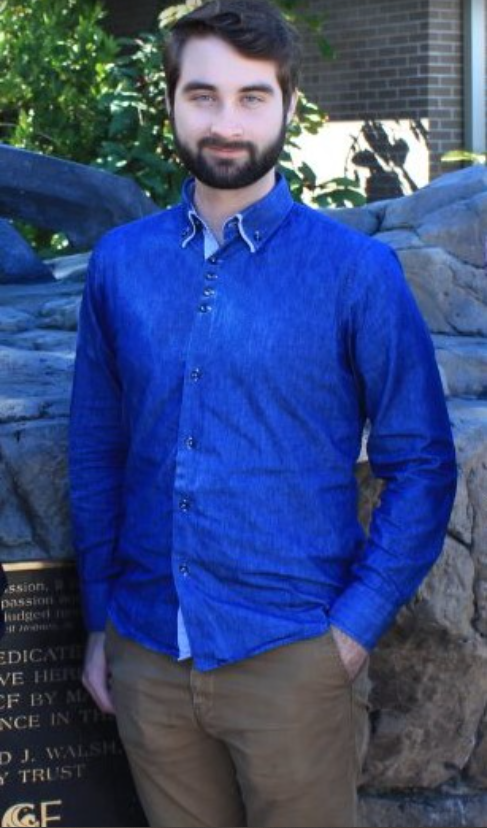 We are very proud of Zachary Stein for receiving the Fulbright Scholarship and the Distinguished Undergraduate Researcher Award (DURA). Zac has been awarded the Fulbright Scholarship to Germany and will be conducting research on aircraft engines at the German Aerospace Center (DLR). Zachary has also been mentioned in the UCF’s Burnett Honors College spotlight, which you can see here.
We are very proud of Zachary Stein for receiving the Fulbright Scholarship and the Distinguished Undergraduate Researcher Award (DURA). Zac has been awarded the Fulbright Scholarship to Germany and will be conducting research on aircraft engines at the German Aerospace Center (DLR). Zachary has also been mentioned in the UCF’s Burnett Honors College spotlight, which you can see here.
He is one of nine students at UCF to receive the Fulbright Scholarship this year (Click here to learn more). The Fulbright U.S. Student Program offers research, study and teaching opportunities in over 140 countries to recent graduates and graduate students. Learn more at https://us.fulbrightonline.org/.
Each month DURA recognizes outstanding academic research by undergraduates at the University of Central Florida and Zachary was nominated for the month of July 2020. Students receive a scholarship, certificate, and recognition. For more information, go to https://our.ucf.edu/current/award-programs/.
Measurements for stress sensing of composites using tailored piezospectroscopic coatings
Read our paper in AIP Advances
Abstract:
Chromium-doped alpha-alumina is naturally photo-luminescent with spectral properties that are characterized by R-lines with two distinct peaks known as R1 and R2. When the material is subjected to stress, shifts in the R-lines occur, which is known as the piezospectroscopic (PS) effect. Recent work has shown that improved sensitivity of the technique can be achieved through a configuration of nanoparticles within a polymer matrix, which can be applied to a structure as a stress-sensing coating. This study demonstrates the capability of PS coatings in mechanical tests and investigates the effect of nanoparticle volume fraction on sensing performance. Here, measurements of spectral shifts that capture variation in stress of the coating during mechanical testing and in the region of substrate damage showed that stress contours are more noticeable on a soft laminate than hard laminate. It was found that the 20 % volume fraction PS coating showed the most distinct features of all the coatings tested with the highest signal-to-noise ratio and volume fraction of alpha-alumina. Post failure assessment of the PS coatings verified that the coatings were intact and peak shifts observed during mechanical testing were due to the stress in the substrate. The results suggest the ability to design and tailor the “sensing” capability of these nanoparticles and correlate the measured stress variations with the presence of stress and damage in underlying structures. This study is relevant to nondestructive evaluation in the aerospace industry, where monitoring signs of damage is of significance for testing of new materials, quality control in manufacturing and inspections during maintenance.
To view more posts like this, check out the Highlights page here.
You can also hear about Remelisa’s paper in the All Audio Posts page here.
Congrats to Our Recent Graduates of Spring 2020
Despite the difficulties presented by COVID-19, we are delighted to present the perseverance of lab members Khanh Vo, Johnathan Hernandez, Nicholas Reed, Remelisa Esteves, and Zachary Stein on successfully graduating from the University of Central Florida. Johnathan and Remelisa graduated with a Masters in Aerospace Engineering, Nicholas and Zachary graduated with a Bachelors in Aerospace Engineering, and Khanh graduated with a Bachelors in Mechanical Engineering with a minor in Materials Science. For the Master’s, Remelisa presented her thesis on Piezospectroscopic Sensing Systems – Multi-Scale and In-Situ Sensing Technology for Structural Integrity, and Johnathan presented his thesis on Experimentation and Simulation of Pulsed Eddy Current Thermography of Subsurface Aircraft Corrosive Defects. Zachary presented his thesis on Degradation From CMAS Infiltration in 7YSZ EB-PVD Thermal Barrier Coatings for his Honors in the Major thesis.
Lab Member Participated at 2020 Southeast Grad Symposium of the Society for Experimental Mechanics
Quentin Fouliard presented at the symposium his work on Thermal Barrier Coating Delamination Monitoring via Luminescence Sensing for the session named “This is Why I’m Hot: Thermal Studies” at the 2020 Southeast Grad Symposium of the Society for Experimental Mechanics (SEM) on June 15th, 2020. Quentin also served as chair for the session on fracture mechanics a.k.a. “Achy Breaky Parts” and as a panelist to provide guidance to graduate students attending the event. The panelists discussed their personal experience through graduate school and tips to lead successful research and to start a career oriented towards engineering and academia. SEM is a professional organization for engineers and scientists in academia, government and industry that focuses on experimental methods for characterization of materials, structures and systems.
Raghavan Research Group Introduction
As part of UCF College of Engineering and Computer Science Virtual Faculty Research Talks, Dr Raghavan gives a brief introduction to the lab. She explains our motivations, various projects such as high temperature coatings, and where RRG is headed in the future.
Click here to watch the video.
New Lab Members Introduction and UCF Research Restart
UCF has opened its doors for the continuation of research amid campus closure due to COVID-19. Following CDC guidelines and new university policies, the Raghavan Research Group are cautiously resuming lab activities that require physical use of the lab.
We are also happy to announce the newest additions to our research team:
Felix Morales (Undergraduate, Aerospace Eng., minor in Material Science Eng. and Mathematics)
Vanessa D’Esposito (Undergraduate, Aerospace Eng., minor in Computer Science and Mathematics)
Rohan Madathil (Undergraduate, mechanical Eng., minor in Computer Science and Mathematics)
Terrence Edwards (Undergraduate, Aerospace Eng.)
Click here to view the newest members of our Team.
Modeling luminescence behavior for phosphor thermometry applied to doped thermal barrier coating configurations
Read our paper in Applied Optics
Abstract:
Phosphor thermometry is a promising non-destructive method for accurate temperature measurement using phosphor elements that emit temperature-dependent luminescence. The method relies on the intensity and decay of luminescence arising from the phosphor elements upon excitation by an incident laser. In this work, the classical Kubelka–Munk model has been utilized and modified to model the luminescence emitted from phosphor elements that are added into thermal barrier coatings (TBCs) to enable temperature sensing using phosphor thermometry. The collectible luminescence and its time-decay behavior emerging from a tailorable multilayer TBC configuration have been predicted for different rare-earth dopants: Dy, Er, and Sm within an yttria-stabilized zirconia (YSZ) host, and with an operational gradient of temperature acting through its depth. The configurations have been designed by varying the position and thickness of the doped layer into the coating. The decay constant of the collectible luminescence has been used to determine the position in the coating from where the luminescence decay is the same as the decay of the collectible signal. This subsurface position indicates the location at which the temperature measurement is performed using phosphor thermometry under realistic operating conditions. It has been determined that YSZ:Dy provides the highest intensity of the collectible luminescence among the three dopant materials. In the TBC configuration with a fully doped coating, using YSZ:Er as a sensor enables temperature measurement from a more in-depth position in the coating. It has been shown that this position can be tailored by adjusting the geometrical configuration of the TBCs, varying the position and thickness of the doped layer. Due to the sensitivity of the dopants to temperature, the decay behavior of the emerging luminescence is demonstrated to change for different TBC configurations. The model can be used in screening the dopants to design multilayered TBCs for their suitability in temperature sensing by phosphor thermometry.
To view more posts like this, check out the Highlights page here.
You can also hear about Quentin’s paper in the All Audio Posts page here.
Our research lab at UCF’s Burnett Honors College’s Research Match Day
Raghavan Research Group displayed some of its projects at the Burnett Honors College’s second Research Match Day, held this week at UCF to encourage top undergraduate students to become young researchers in our group. Lab members Khanh Vo, Johnathan Hernandez and Quentin Fouliard presented some of our team’s most recent research work such as the development of our novel Phosphor thermometry instrumentation for synchronized acquisition of luminescence lifetime decay and intensity on thermal barrier coatings, the methods for the Investigation of TGO stress in thermally cycled plasma-spray physical vapor deposition and electron-beam physical vapor deposition thermal barrier coatings via photoluminescence spectroscopy or the Measurements for stress sensing of composites using tailored piezospectroscopic coatings.
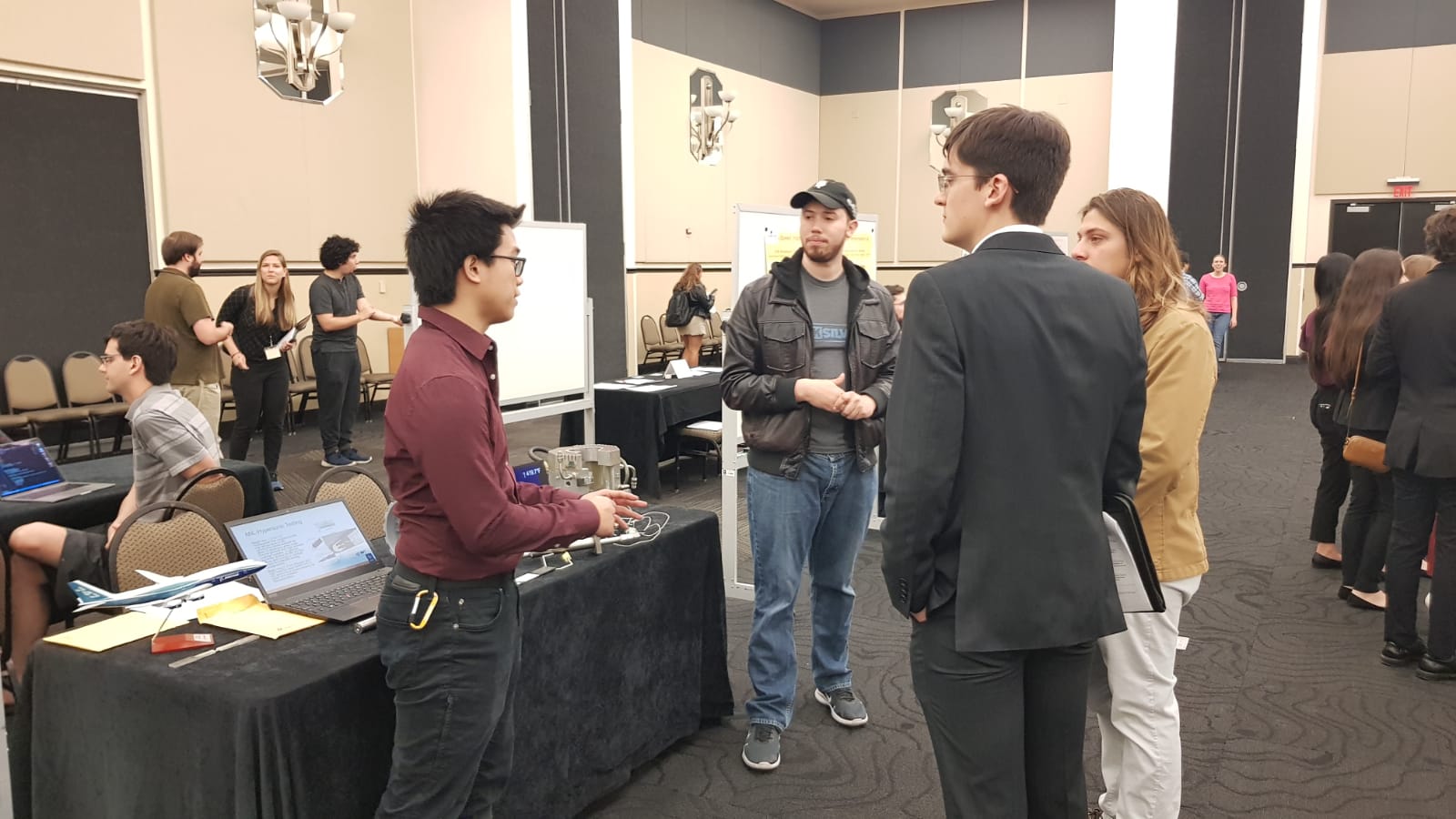
Lab Members Khanh Vo (left) and Johnathan Hernandez (middle) discussing our research at UCF’s Burnett Honors College’s Research Match Day.
Our new Measurement Science and Technology article is published
We are glad to announce that our new article written in collaboration with Dr. Bauke Heeg (Lumium) is now published and available in Measurement Science and Technology under the special feature on Instrumentation for Gas Turbine Engines! This work was led by lab members Quentin Fouliard and Johnathan Hernandez and focuses on the development of a novel Phosphor Thermometry instrumentation setup which enables higher precision of temperature measurements as well as extended temperature ranges in turbine engine environments using luminescent erbium-europium co-doped yttria-stabilized zirconia coatings.
Lab member featured in Nicholson Student Media
We are excited to announce that the University of Central Florida online newspaper Nicholson Student Media featured lab member Johnathan Hernandez in NSM Today on his visions for future hypersonic flight using materials and technologies that we are currently implementing in our lab. The article focuses on his research work and aspiration to pursue the development of hypersonic leading edge thermal protection technologies to enable reusable hypersonic vehicle applications.
Lab member featured in the Florida High Tech Corridor

Quentin Fouliard setting up the acquisition parameters for Phosphor Thermometry experimentation on rare-earth doped Thermal Barrier Coatings.
We are thrilled to announce that the Florida High Tech Corridor online magazine featured lab member Quentin Fouliard in its Aerospace & Aviation section as he became the first UCF’s Aerospace Engineering Doctoral Graduate as a result of his successful research work in our group over the past few years, under the project funded by the US Department of Energy and aimed to the advancement of instrumentation for temperature measurements in turbine engine environments.
The German Aerospace Center (DLR) visited UCF
Dr. Ravisankar Naraparaju, Dr. Peter Mechnich and Christoph Mikulla from the German Aerospace Center (DLR) visited UCF last week. Dr. Naraparaju presented his work in a Distinguished Speaker Series seminar on the “Development of Thermal Barrier Coatings that are resistant to CMAS/Volcanic Ash attack in aero-engines” hosted by the department of Mechanical and Aerospace Engineering at UCF. The seminar explored the dangers posed by CMAS and volcanic ash ingression in TBCs and highlighted the importance of tailoring TBC microstructure to prevent crack propagation which can lead to engine catastrophic failure.

Dr. Naraparaju’s Ph.D. Student Christoph Mikulla (DLR) and Zachary Stein (UCF) discussing CMAS ingression in a TBC sample through microscopy.

The German Aerospace Center (DLR) visits our lab. (From left to right) Dr. Seetha Raghavan (UCF), Dr. Ravi Naraparaju (DLR), Christoph Mikulla (DLR), Dr. Quentin Fouliard (UCF), Dr. Peter Mechnich (DLR), Zachary Stein (UCF), Alexander Olvera (UCF).
The DLR team also visited the Mechanical and Aerospace Engineering Department at UCF. A tour of the Raghavan Research Group lab was then given where ongoing projects and collaborations were discussed.
AIAA Scitech 2020
Lab members Johnathan Hernandez, Zachary Stein, and Matthew Northam presented papers at the AIAA Scitech 2020 forum at the Hyatt Regency Hotel in Orlando, Florida from January 6th to 10th. The AIAA Scitech forum is an aerospace conference that invites engineers and researchers from all over the globe to present their work and observe findings from other researchers. Innovations in the fields of aerospace transportation and defense are often showcased at the conference as well.

(Pictured from L to R) Alexander Olvera, Zachary Stein, Seetha Raghavan, Johnathan Hernandez, Matthew Northam, and Remelisa Esteves.
Johnathan presented his work on corrosion detection through his paper “Simulation and Experimentation of Pulsed Eddy Current Thermography for Corrosion Detection Under Insulation.” Zachary presented his work on CMAS Infiltration through his paper “Synchrotron X-Ray Diffraction Study of Phase Transformation in CMAS Ingressed EB-PVD Thermal Barrier Coatings.” Matthew presented his work on PS-PVD through the paper “Comparison of thermally cycled PS-PVD and EB-PVD thermal barrier coatings’ depth-resolved monoclinic phase evolution via synchrotron X-ray diffraction” and Quentin Fouliard’s work on Temperature Measurements using Phosphor Thermometry through Quentin’s Paper “Doped 8% Yttria Stabilized Zirconia for Temperature Measurements on Thermal Barrier Coatings using Phosphor Thermometry.”
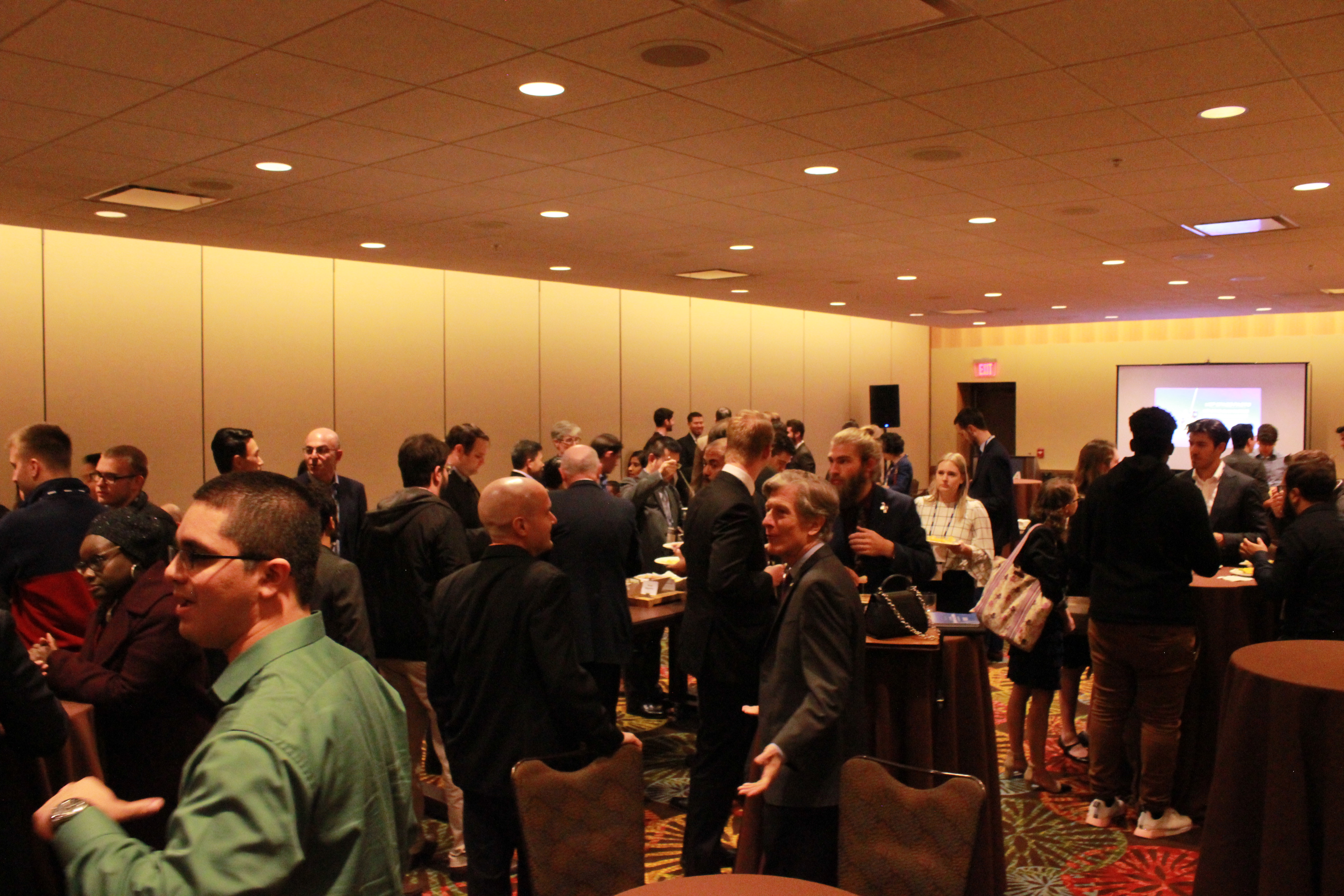
UCF Scitech Reception held on January 6th at the Hyatt Regency Hotel in Orlando.

(Pictured from L to R) Zachary Stein, Matthew Northam, Imad Hanhan, and Johnathan Hernandez
The University of Central Florida held a reception for Scitech on January 6th hosted by Dr. Seetha Raghavan introducing UCF to various conference attendees from both academia and industry. The reception also introduced the birth of the Aerospace Engineering Doctoral Program at UCF. At this reception, the lab members met many new and old faces such as lab alumni Imad HanHan and Dr. Raghavan’s advisor Dr. Imbrie.
Congrats to our Aerospace Engineering Graduates
We are happy to announce that lab members Quentin Fouliard and Matthew Northam graduated from the University of Central Florida this past December. Matthew Northam graduated with a Master’s degree in Aerospace Engineering and Quentin Fouliard became the very first student at UCF to graduate with a Ph.D. in Aerospace Engineering. After graduation Matthew plans on pursuing a career in the aerospace industry, while Quentin plans to extend his research in the Raghavan Research Group at UCF as a post doctoral researcher to pursue his passion for aerospace materials. We would like to congratulate these two lab members for their hard work and dedication, and we wish them the best in the next chapter of their life.
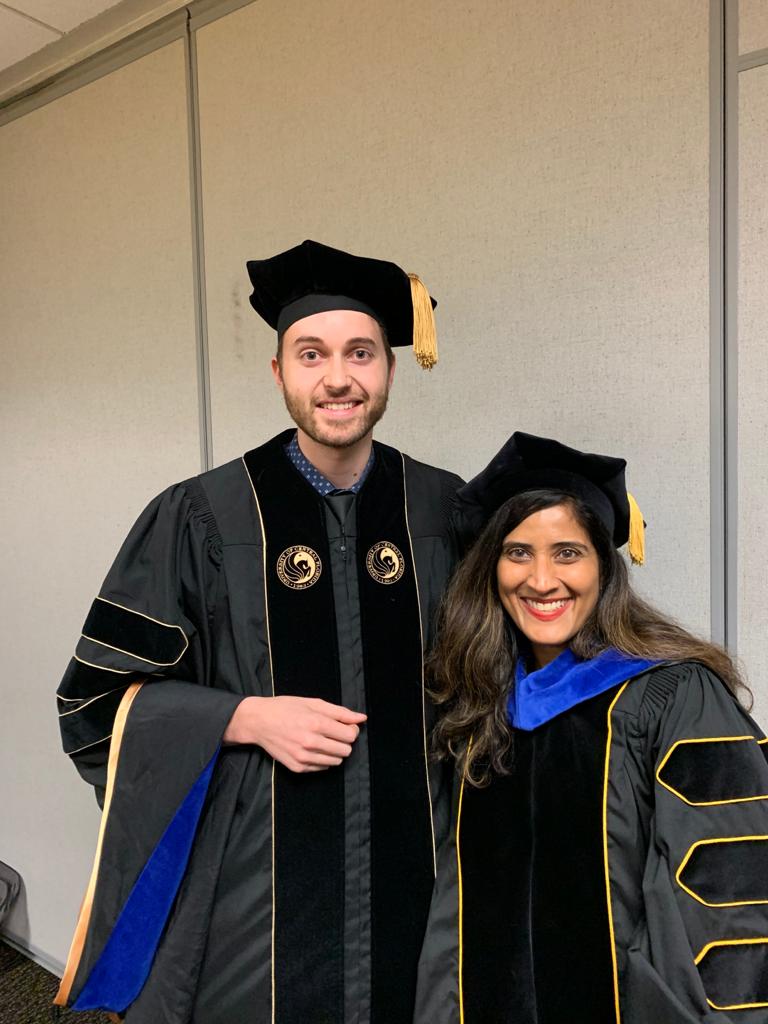
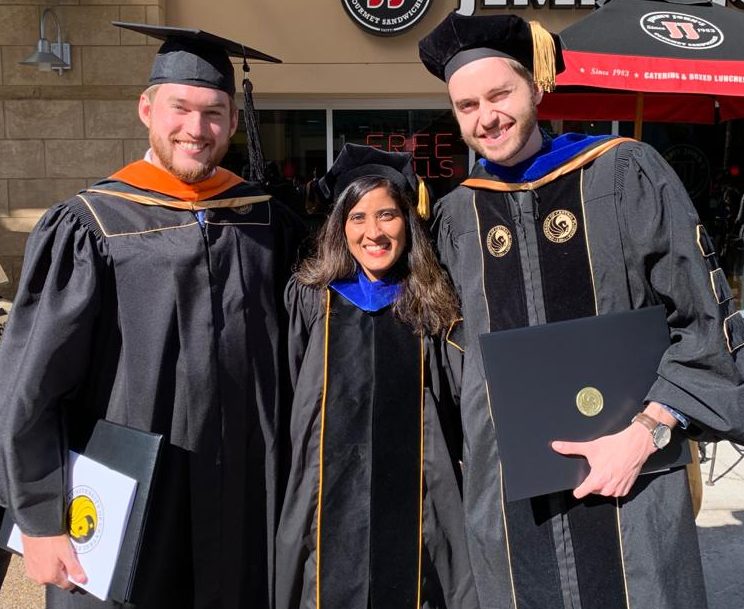
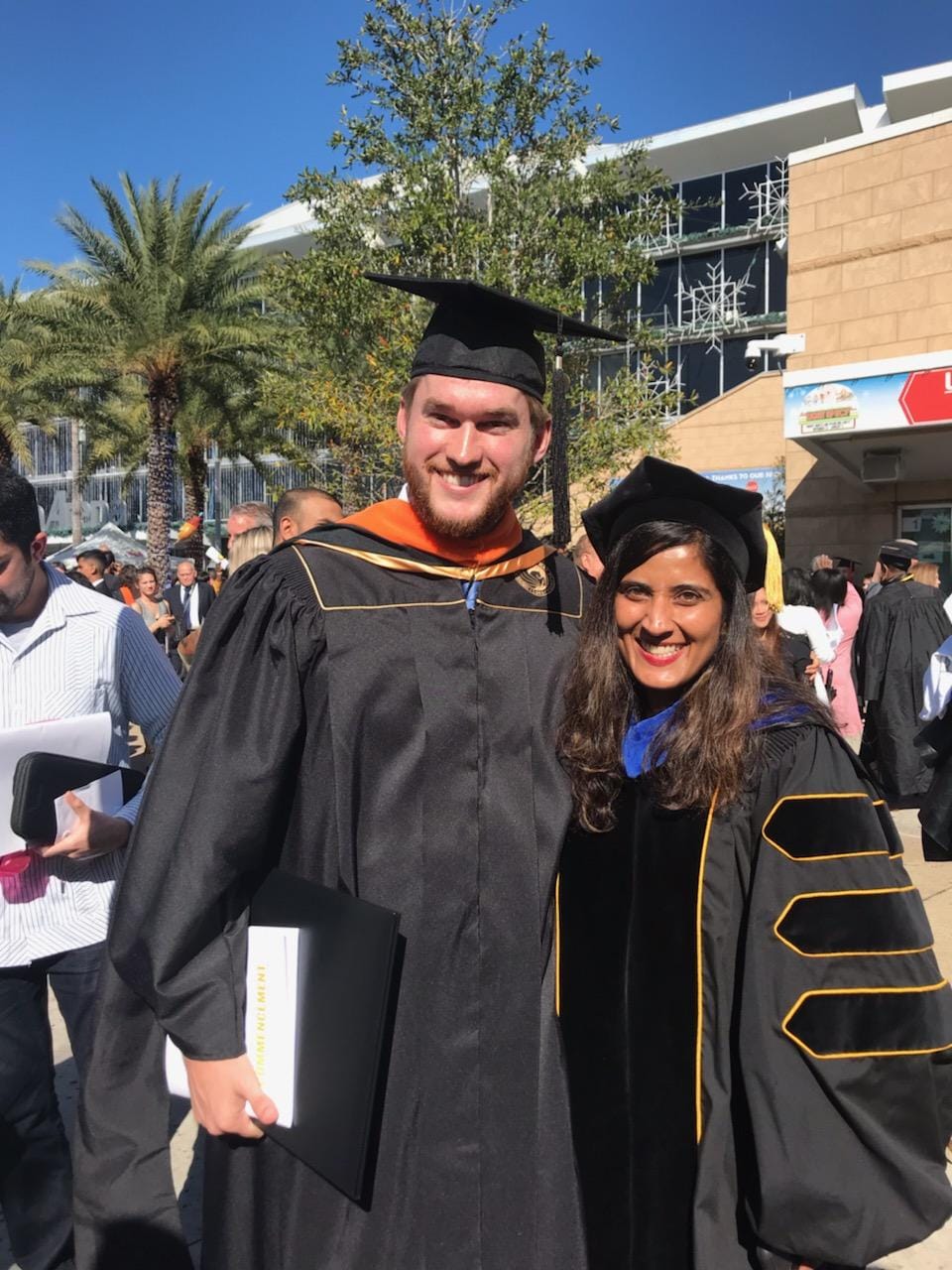
UTSR Conference
Lab members Quentin Fouliard, Matthew Northam, and Johnathan Hernandez attended the 2019 University Turbine Systems Research Conference in Orlando, Florida from November 5th through 7th. Quentin conducted a conference presentation titled “Advanced Instrumentation: In-Situ Optical Monitoring of Gas Turbine Blade Coatings Under Operational Extreme Environment.” In addition to the presentation, Quentin presented posters along with Matthew and Johnathan.
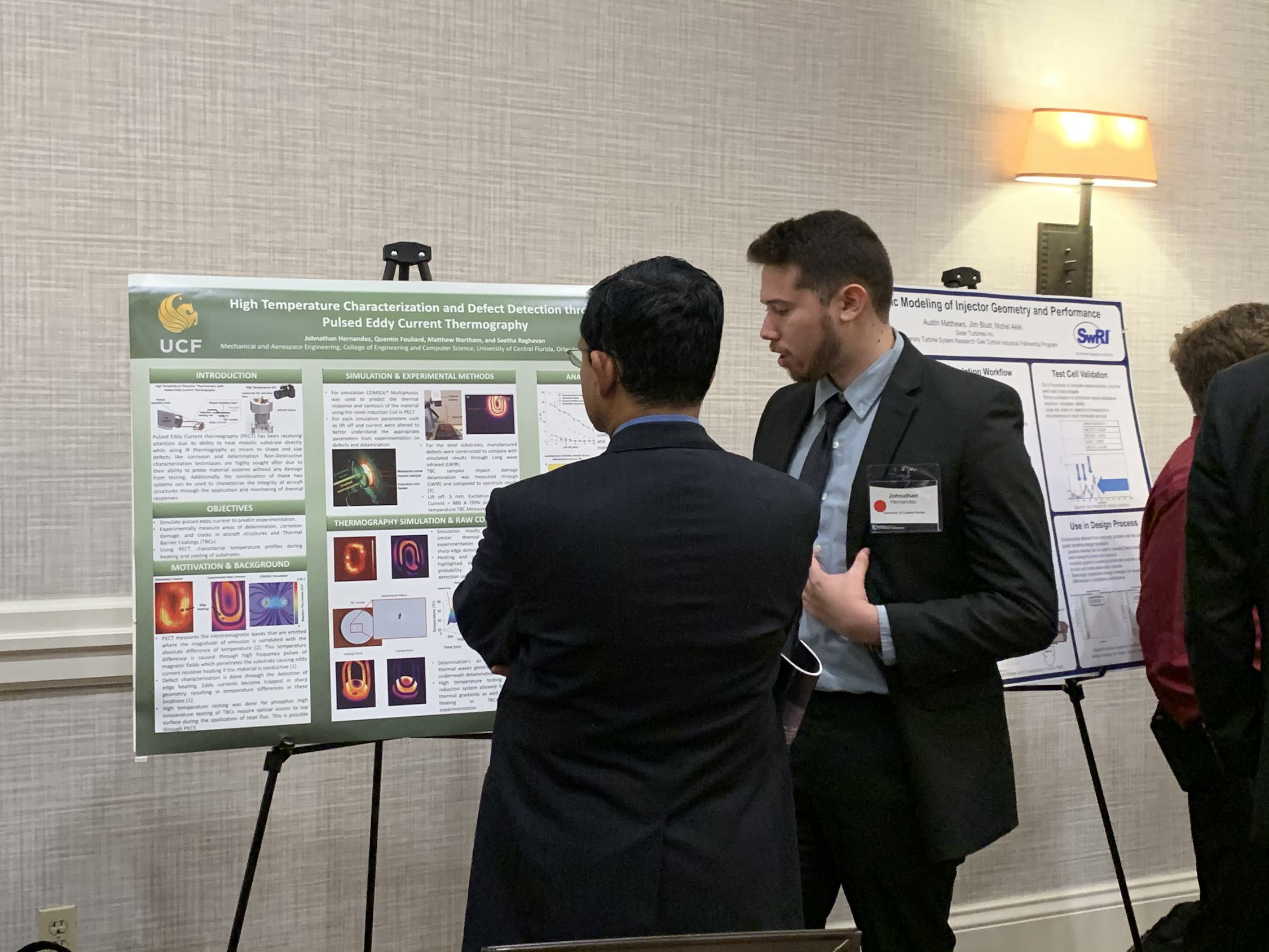
Johnathan presenting his poster on Pulsed Eddy Current Thermography.
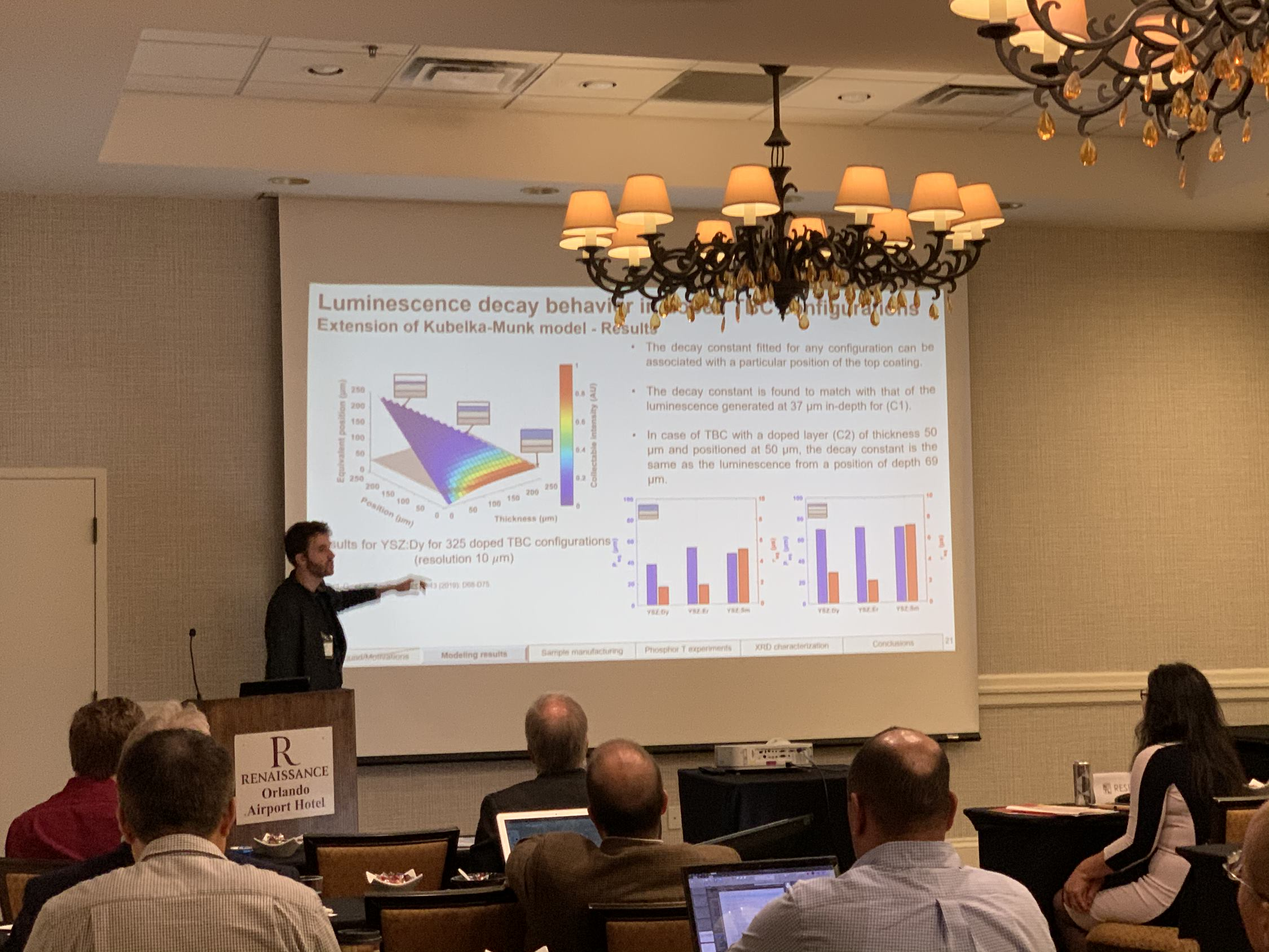
Quentin presenting his work at the UTSR Conference.
Educator of the year award
We are delighted to announce that Dr. Raghavan was named the Aerospace Educator of the Year by Women in Aerospace. Women in Aerospace is a professional organization for the expansion of opportunities for women in aerospace fields. She was selected by UCF for the nomination of the 2019 Aerospace Educator Award. Every year, leaders in the aerospace field are chosen who represent women’s excellence and contribution to a variety of aerospace fields.

Stephen Kitay (left) presenting the award to Seetha Raghavan (right).
STEM Day Fall 2019
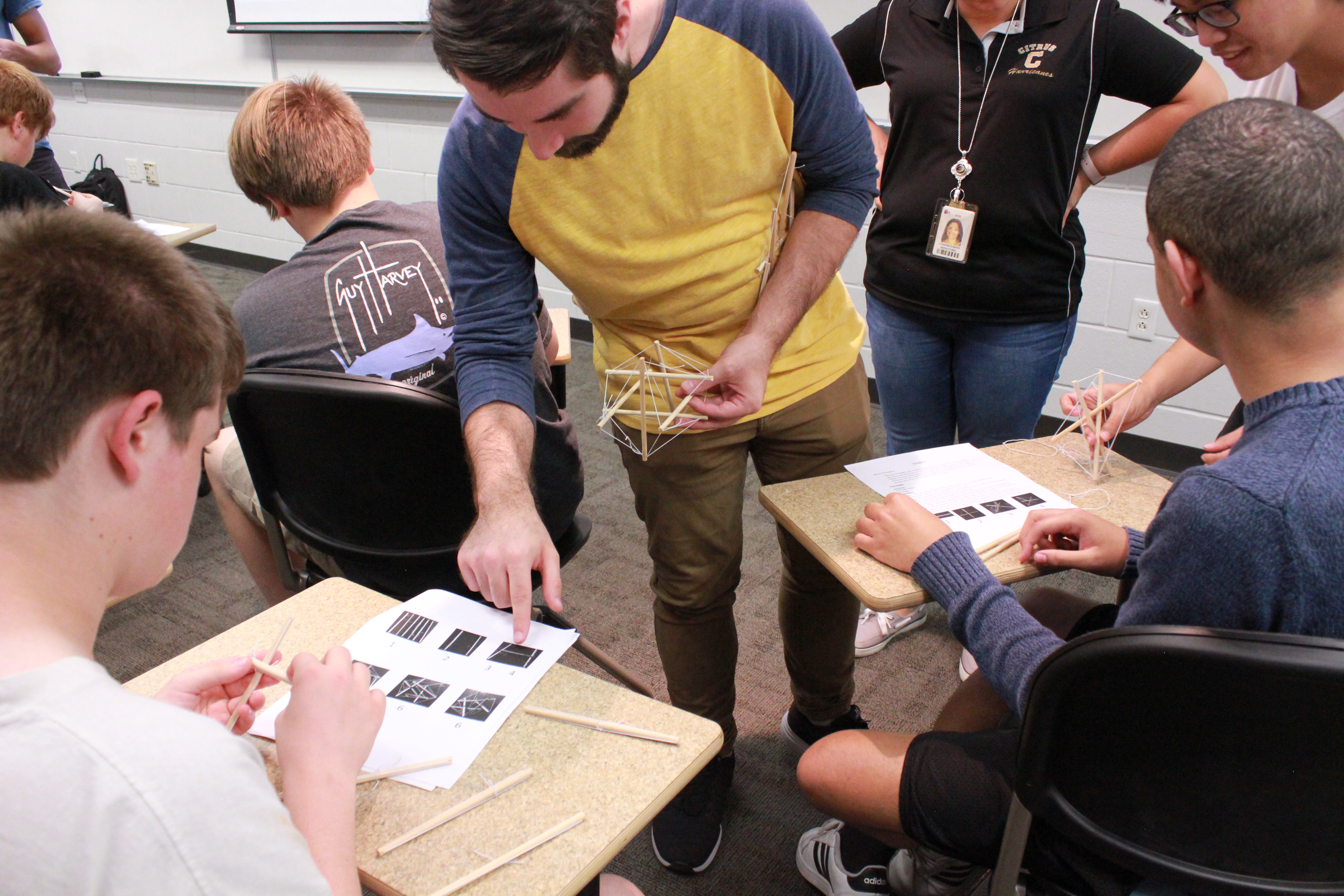
Zachary Stein assisting a student with their tensegrity structure.
Lab members Perla Latorre and Armando Carrasquillo led the outreach event, STEM Day at the University of Central Florida, with the help of other lab members. STEM day is an event where elementary through high school students visit UCF to learn about the various STEM fields through the participation in STEM-related activities. The activity shared with 25 high school students was titled “The Balancing Act of Tensegrity.” Tensegrity is a structural principle based on the use of isolated components in compression inside a net of continuous tension. The participating students had the opportunity to create their own tensegrity structure. From this activity, students were able to learn about Tensegrity and its various aerospace applications.
Paper accepted to Surface Coatings and Technology
We are pleased to announce that our paper titled “Investigation of TGO stress in thermally cycled plasma-spray physical vapor deposition and electron-beam physical vapor deposition thermal barrier coatings via photoluminescence spectroscopy” by lab alumni Lin Rossmann, and lab members Matthew Northam and Brooke Sarley has been published in the journal Surface Coatings and Technology. The paper elaborates on the residual stresses found in the TGO of PS-PVD and EB-PVD coated TBCs during their lifetimes.
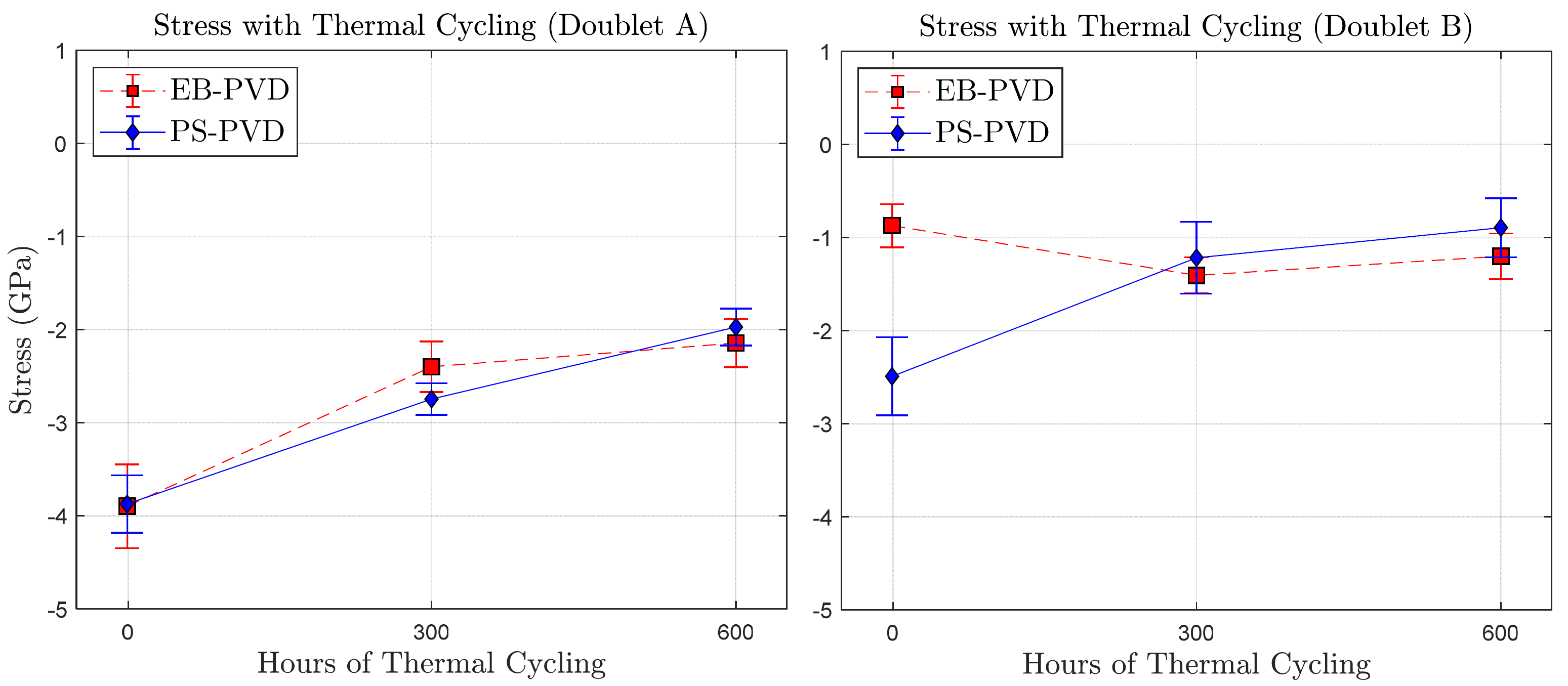
Residual TGO stress of EB-PVD and PS-PVD coatings over their given lifetimes.
MS&T Conference 2019
Dr. Raghavan and Quentin Fouliard participated at the MS&T19 conference held in Portland, OR. They attended great presentations on the current progress of cutting-edge research on Thermal Barrier Coatings. Dr. Raghavan gave a presentation on High Resolution Non-invasive Characterization of Calcium-magnesium alumino-silicate Infiltration in Thermal Barrier Coatings, a work in collaboration with the German Aerospace Center (DLR). Quentin presented his work on Luminescence characterization of temperature sensitive phosphor doped Thermal Barrier Coatings, a UTSR project funded by the NETL, Department of Energy.
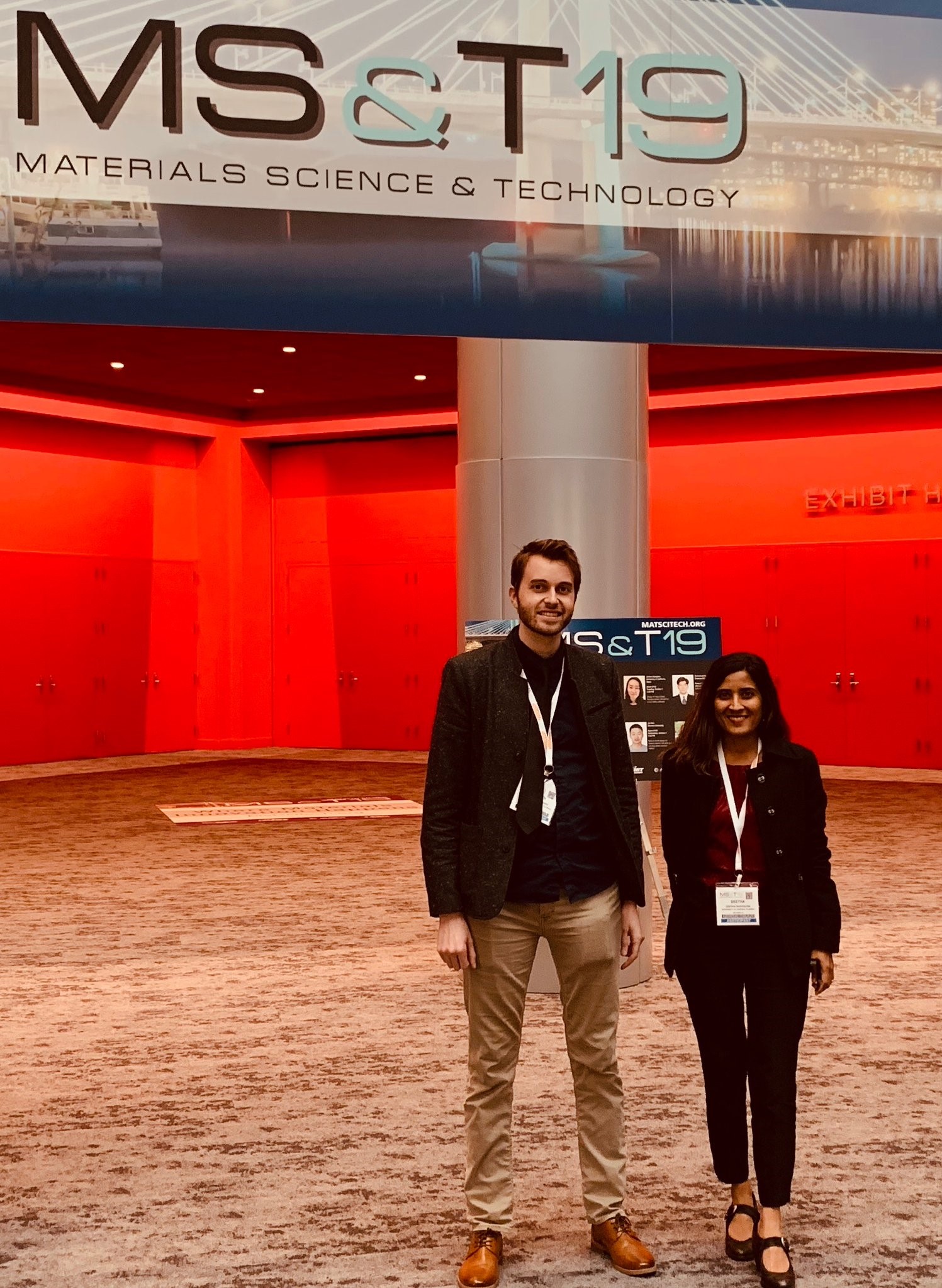
Quentin Fouliard and Dr. Raghavan at the Materials Science and Technology Conference in Oregon.
Launch of the Aerospace PhD at UCF
Lab members Quentin Fouliard, Johnathan Hernandez, and Alexander Olvera attended the Aerospace PhD Launch Party. The UCF Aerospace PhD began this semester with a welcome party where new students could familiarize themselves with the aerospace professors, as well as, each other. This launch party included some guest speakers including Dr. Jeffrey Kauffman, an aerospace professor at UCF and Dr. Gregory Freihofer, our laboratory alumnus with a PhD in mechanical engineering working at Northrop Grumman. The panel were asked questions such as their decisions as to why they wanted to obtain a PhD, what’s it like in the industry for doctoral graduates, and advice for students.

The new Aerospace PhD students at the Launch Party.
Made in Space visit to UCF
Dr. Patrick Flowers from Made in Space visited UCF on September 13 and presented some of his work and about the company Made in Space. Made is Space is located in Jacksonville, and it is a company that focuses on 3D printing in space. They have partnerships with NASA and SpaceX. In his presentation, he discussed a project that Made in Space is currently working on, a 3D printer that can build multiple structural components for a satellite in space.

Dr. Patrick Flowers presenting his 3D printing work.
Lab member Quentin Fouliard wins the award for the best experimental performance at the 1st North American Summer School on Photonic Materials
We are pleased to announce that lab member Quentin Fouliard won the award for the best experimental performance during his participation at the 1st North American Summer School on Photonic Materials held at COPL (Centre d’Optique, Photonique et Laser), Université Laval, in Quebec City, Canada. He has worked on the development and construction of a high power Erbium doped Silica fiber laser that can find applications for optical communications, metal engraving, trace gas detection or fiber pumping. The obtained laser output reached 5W at 1582 nm. Its thermal behavior and upconversion luminescence (visible in the photo) have been characterized.
Our acknowledgments to the National Science Foundation (NSF) that supported Quentin for his participation at this event.

Lab member Quentin Fouliard (third position from the left) receiving the award with his team for the best experimental performance at NASSPM.

Lab member Quentin Fouliard (center of the picture) at the fiber laser lab of the COPL – Université Laval during experimentation.
Lab members volunteer at Camp Connect 2019
Lab member Perla Latorre and Khanh Vo led an outreach event, Camp Connect II. Camp Connect II is a summer camp for high school and middle school students. They are exposed to different engineering activities that encourage them to pursue careers in STEM. “The Balancing Act of Tensegrity” was the topic discussed with the students which introduced them to the term tensegrity – a stable structure consisting of members under tension and compression, where the members in tension are contiguous while the members in compression are not. Later the students had the opportunity to create their own structure with the help of our lab members. It is was a fun morning for everyone.
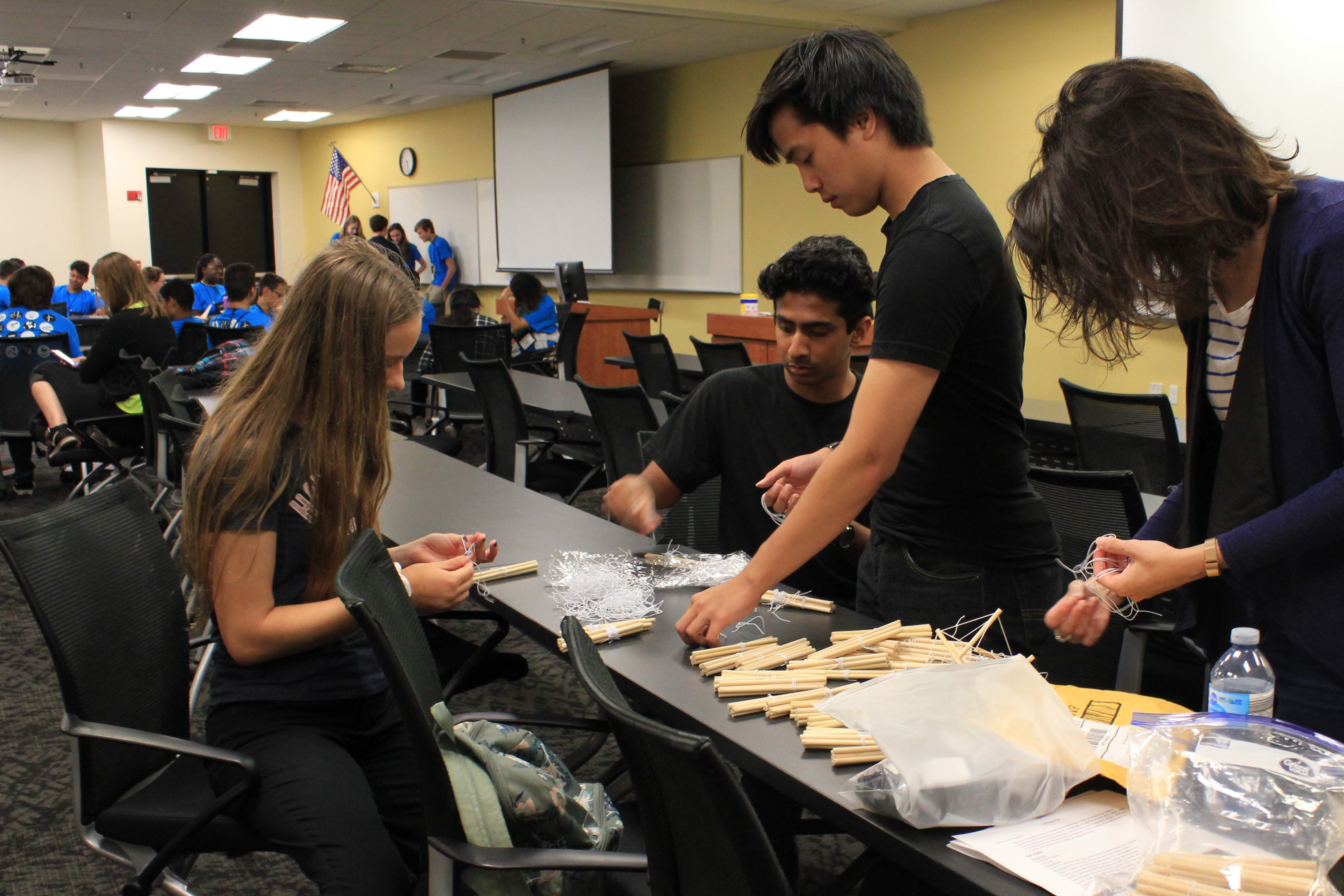
Lab members preparing the activity for the Camp Connect students

Perla assisting a student with their tensegrity model

Students working on the tensegrity models
Agathe’s research experience with RRG
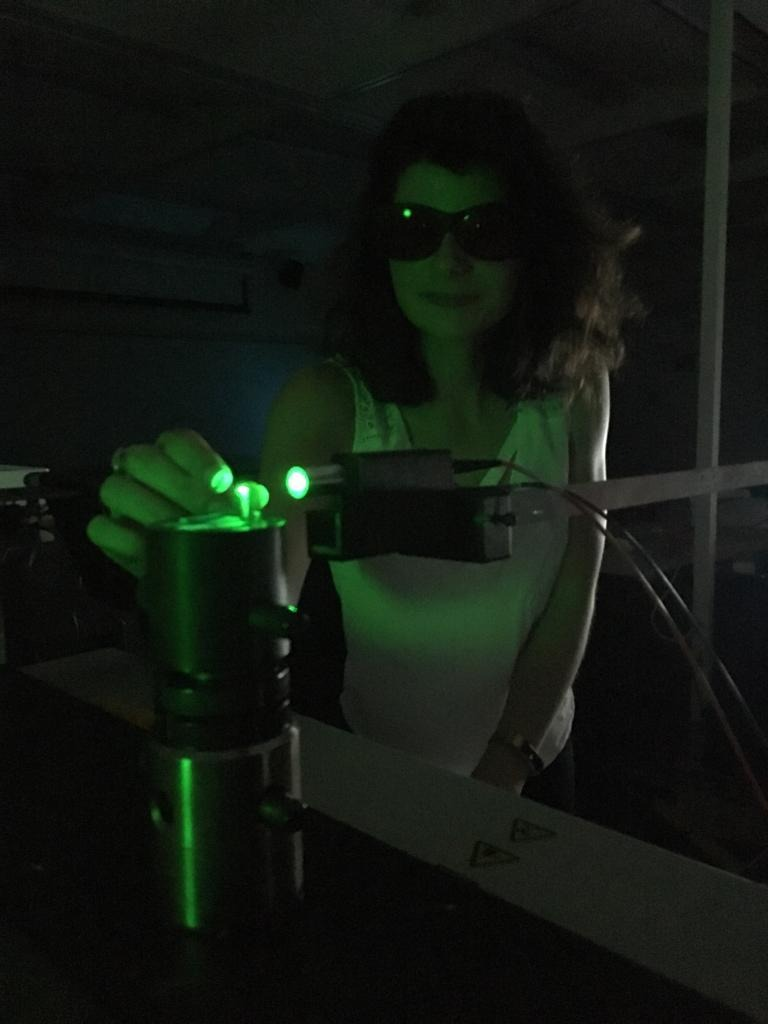
Agathe performing experiments with the PPS
Hello everyone,
I am from the Ecole Polytechnique de l’Université de Nantes in France, and 4 weeks ago I crossed the Atlantic ocean to join the ALOX team for a 3-month internship. I want to become an engineer in the field of aeronautics or aerospace, so this is a huge opportunity for me to increase my knowledge and skills in this field. After days of research and discussion with the team, I was able to understand their work and the importance of it. The goal is to design a coating with enhanced sensing capability from the photoluminescence characteristics of alumina while maintaining the capacity of improving mechanical properties, namely fracture toughness. The team is also developing systems using piezospectroscopy to observe the dispersion of alumina, which is essential. In the future, the coating will be used to check the state of structures in order to make planes even safer. The ALOX team trained me on the calibration of the Portable Piezospectroscopy System (PPS), developed in-house, the positioning of the laser beam on the samples and the control of the data collected. They also taught me how to use MATLAB to create intensity maps of the studied samples. So now I am able to help them in every step of the PLPS experiment and the analysis of the results. I also have the chance to help Remelisa, Alex, and Ryan in the development of the Photoluminescent Hyperspectral Imaging system (PHI). Each day we try new things for the system, and the team shares ideas to improve the system. I particularly like this project because it is the first time I feel like I am a part of something never done before. I already learned a lot thanks to the team, and I am sure that this is just the beginning.
Article Written by Agathe Demay
The art and zen of Hypersonic Flight
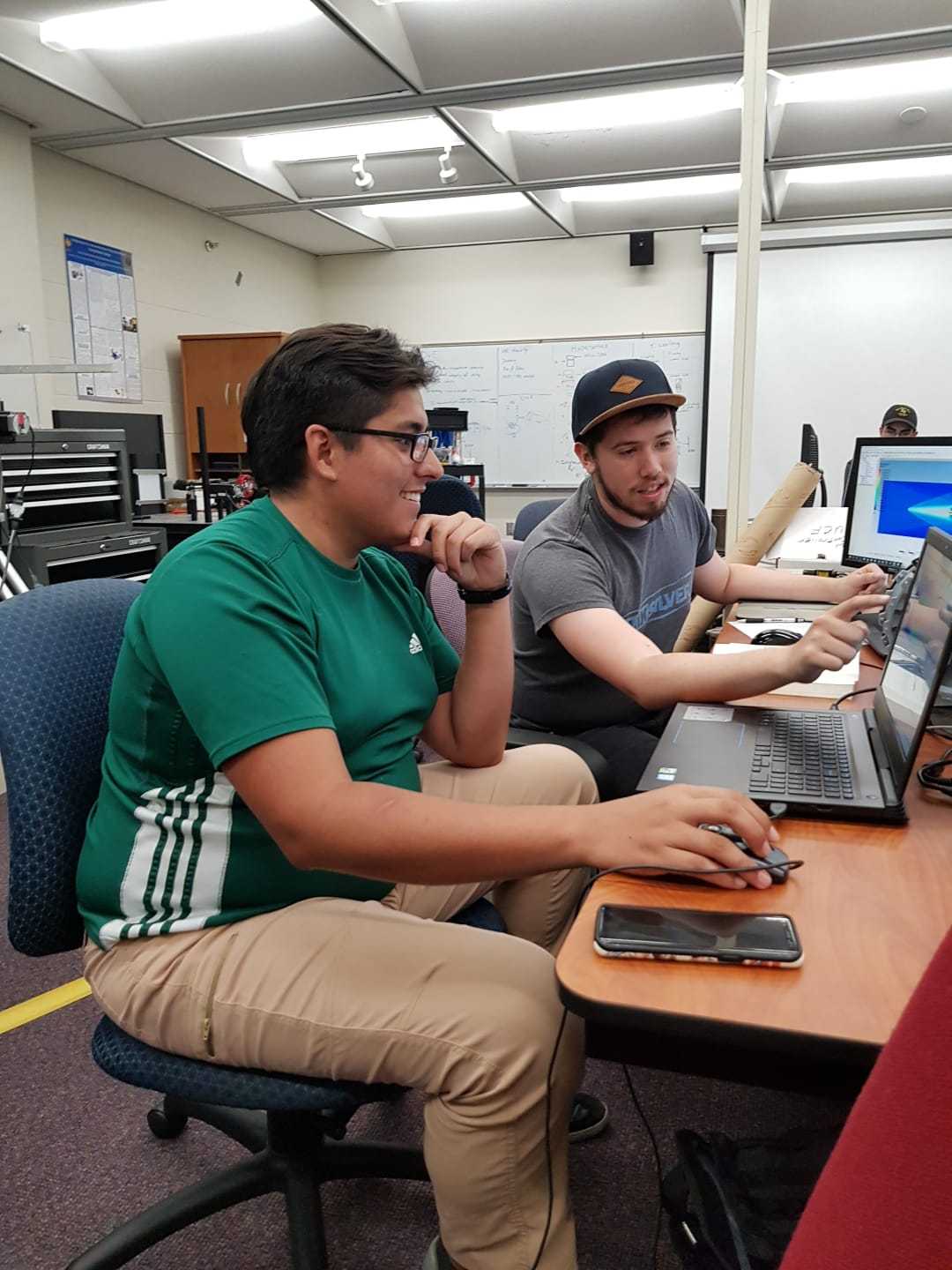
Dyllian (Left) and Johnathan (Right) working on Ansys simulations.
This summer I have an amazing opportunity provided to me by the Mechanical Engineering department at UCF. This program, entitled the Research Experience for Undergrads: HYpersonic, Propulsive, Energetic, and Reusable Platforms, or REU HYPER for short, pairs students with professors and graduate students who seek to apply each intern’s unique abilities to further research into hypersonic travel. As a part of this program we not only get to perform hands on research tasks in laboratory environments, but also prepare for grad school with the help of the UCF graduate center. Activities offered by the program include backstage industry tours where we can see how professionals in our field work day to day, resume and skill building workshops that cover the details of building a robust CV or using industry programs, and, of course, extracurricular events to some of Orlando’s most exciting attractions. Thanks to the contributions of professors and staff at UCF, this summer program will provide me with the skills and experience I need to pursue my future career in the field of Aerospace Engineering!
Article Written by Dyllian
Lab member Lin Rossmann presents research at the International Conference on Metallurgical Coatings and Thin Films
Lin Rossmann gave a technical presentation at the 46th annual International Conference on Metallurgical Coatings and Thin Films (ICMCTF) held May 19-24 in San Diego, CA. Her talk, entitled “Investigation of TGO stress in thermally cycled PS-PVD and EB-PVD thermal barrier coatings via photoluminescence spectroscopy”, presents research comparing thermal barrier coatings (TBCs) made by two different deposition techniques. TBCs are important components in aircraft engines, protecting engine parts from the extreme temperatures of combustion. The work was in collaboration with NASA Glenn Research Center, the German Aerospace Center, and Praxair Surface Technologies.
As a bonus, Lin was able to meet a previous collaborator. Vincent Maurel, a researcher at MINES ParisTech, is a co-author on work that Lin presented at SciTech in 2018; while they had communicated by email previously, this was their first opportunity to meet in person.
To read more about ICMCTF, click here.
Lab member Sandip Haldar presents research at the NETL conference

Sandip (pictured) presented during the Optical and Wireless Sensors session of the conference.
Sandip Haldar participated in the 2019 Annual Project Review Meeting for Crosscutting, Rare Earth Elements, Gasification and Transformative Power Generation held at Pittsburgh, PA on 9-11 April, 2019. Sandip presented the updates on the DoE-UTSR project “In-situ optical monitoring of gas turbine blade coatings under operational extreme environments” led by Dr Raghavan and Dr Ghosh. Sandip presented under the Crosscutting Research section which promotes the advancement of technologies in modeling and simulation, cybersecurity, and high performance materials.
NETL or National Energy Technology Laboratory is a laboratory of the U.S. Department of Energy which strives to create solutions to the energy problems facing the country. This is done through the promotion of research and technology development.
Lab members publish paper in Applied Optics
We are pleased to announce that our new paper is published: “Modeling Luminescence Behavior For Phosphor Thermometry Applied To Doped Thermal Barrier Coating Configurations” in Applied Optics.

Lab members Quentin Fouliard and Sandip Haldar worked on a model to predict the luminescence behavior of rare-earth doped Thermal Barrier Coatings. These temperature sensitive coatings can be used for non-destructive characterization using Phosphor Thermometry. The modeling approach presented in the paper allows for savings in manufacturing costs by downselecting the optimized material configurations. In addition, the model paves the way to increasing the accuracy of Phosphor Thermometry measurements in extreme environments by providing the precise locations in the depth of the coating where temperature measurements are made.
Watch the video discussion for this publication!
Five undergraduate lab members present research posters at SURE
Five lab members, Perla Latorre, Nicholas Reed, Maxwell Smith, Zachary Stein, and Khanh Vo, presented four posters at the 2019 Showcase for Undergraduate Research Excellence (SURE) at the University of Central Florida. SURE is an event in which undergraduates from all disciplines gain experience presenting their research and results to the students and faculty at UCF. SURE has been an invaluable opportunity as the undergraduates analyzed data, produced results and gained a deeper understanding of the scope and progress of their research.
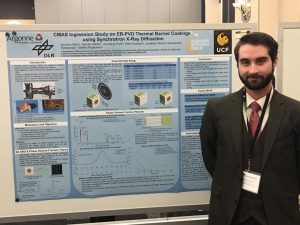
Zachary Stein with his poster.

Khanh Vo (left) and Zachary Stein with their poster.
Zachary Stein presented “CMAS Ingression Study on EB-PVD Thermal Barrier Coatings Using Synchrotron X-Ray Diffraction”; he and Khanh Vo presented “3D Printed Stress Sensing Coating on Composite Materials”. Both were assisted by their graduate mentors Sandip Haldar and Remelisa Esteves, respectively.

Maxwell Smith with his poster.
Maxwell Smith presented “Phase Volume Fraction Compared Between PS-PVD & EB-PVD After Thermal Cycling Via X-Ray Diffraction”. Maxwell was mentored by graduate researchers Matthew Northam and Lin Rossmann.

Nicholas Reed and Perla Latorre with their poster.
Nicholas Reed and Perla Latorre both presented “Stress Sensing of Alumina-Epoxy Coatings with Varying Volume Fractions of Alumina Nanoparticles”. Both were mentored by Remelisa Esteves.
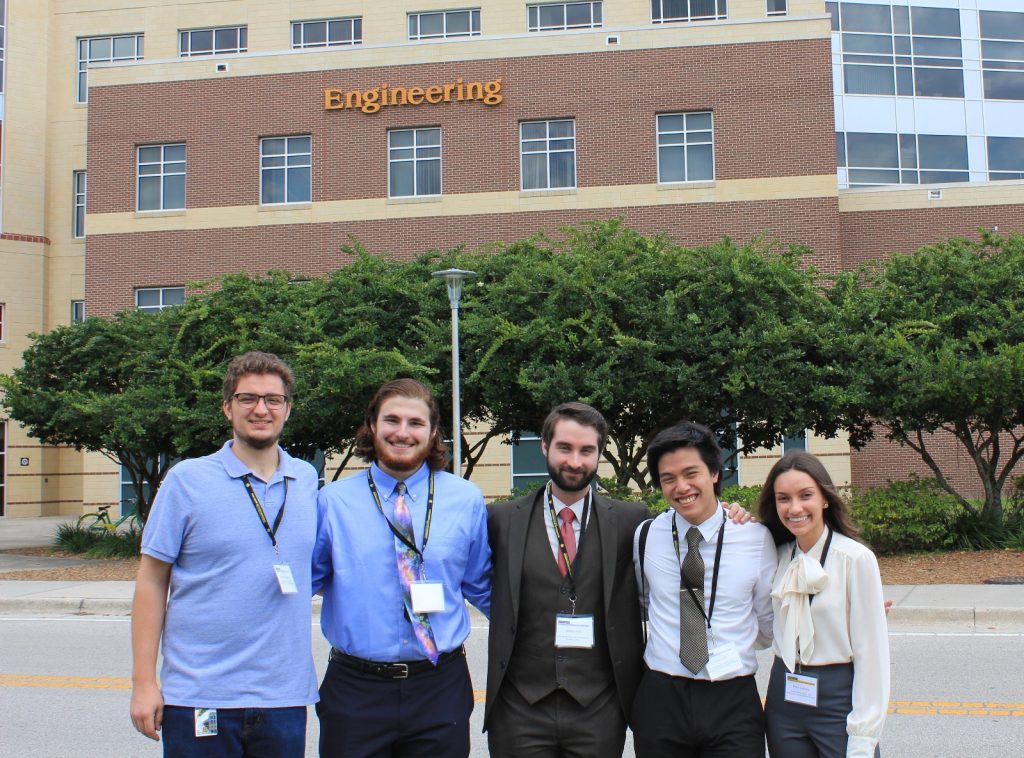
Congratulations to our poster presenters! Left to right: Maxwell Smith, Nicholas Reed, Zachary Stein, Khanh Vo, and Perla Latorre.
Lab member Quentin Fouliard presents poster at CREOL Affiliates Symposium
Lab member Quentin Fouliard participated in a poster session at the “Advances in Optics and Photonics: Industry Affiliates Symposium” hosted by the College of Optics & Photonics at the University of Central Florida on March 14. Quentin presented results on a model that describes the luminescence behavior of temperature-sensitive thermal barrier coatings.

Lab member Lin Rossmann honored at Aviation Week Network’s 62nd Annual Laureate Awards
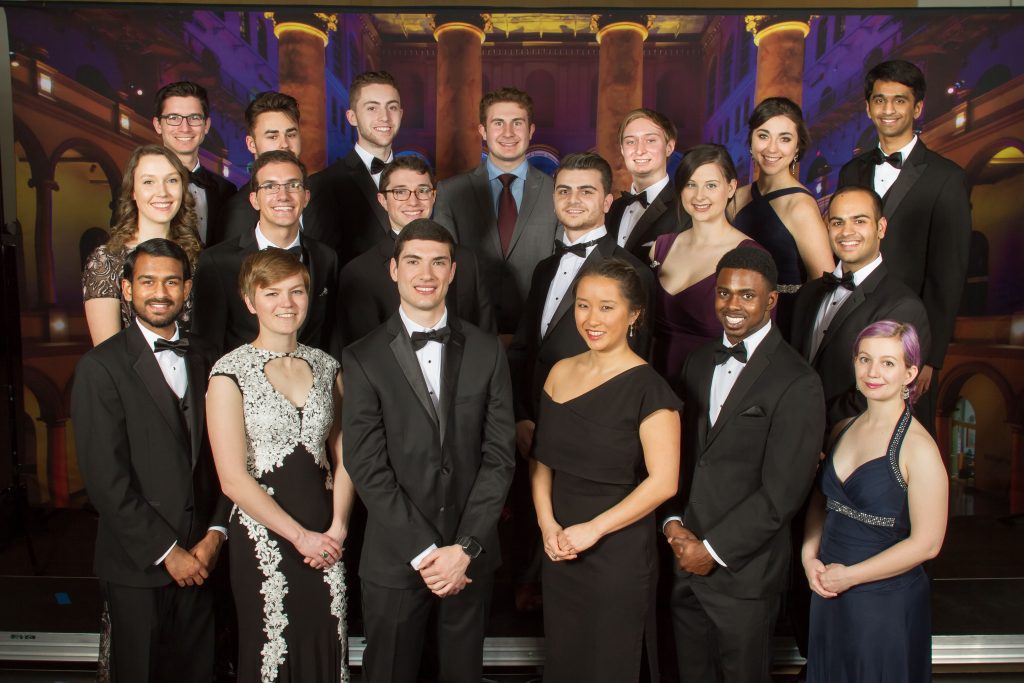
Lin Rossmann, front right, with the other 20 Twenties winners at the Laureate Awards.
Lab member Lin Rossmann, along with the other 19 winners of Aviation Week Network and AIAA’s 20 Twenties awards, was honored at Aviation Week’s annual awards ceremony in Washington, D.C. The Laureate Awards honor extraordinary achievements in aerospace, aviation, and defense. Learn more about the Laureate Awards here.
The 20 Twenties, awarded by Aviation Week and the American Institute of Aeronautics and Astronautics (AIAA), honors 20 students in their twenties for their academic and research accomplishments and their record of giving back to the community. Former lab member Estefania Bohorquez was a 20 Twenties honoree in 2018.
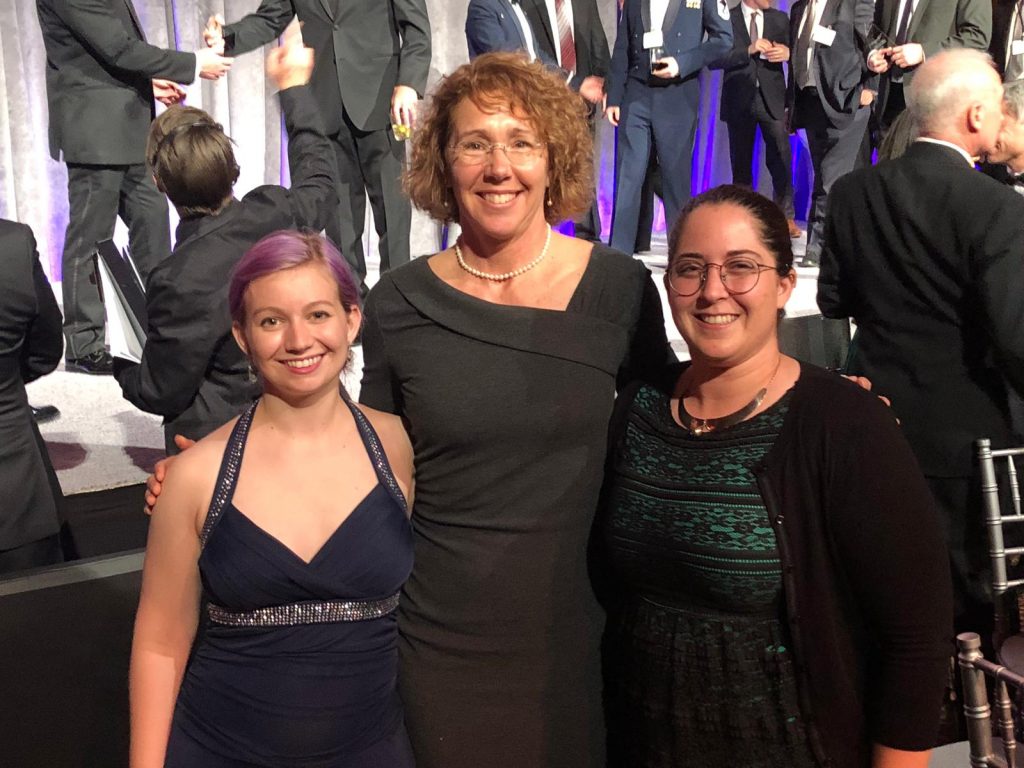
Lin Rossmann (left) and fellow lab member Brooke Sarley (right), her guest to the event, with Sandy Magnus, former astronaut (STS-112 Atlantis, STS-126 Endeavour, STS-119 Discovery, and STS-135 Atlantis, the final space shuttle mission) and former executive director of AIAA.
2019 IRES Team Announced

IRES 2019 team members, left to right: Andrew Laich, Jessica Baker, Zachary Stein, and Matthew Northam.
The 2019 International Research Experience for Students (IRES) team has been selected! Raghavan Research Group lab members Zachary Stein and Matthew Northam along with Vasu Lab members Andrew Laich and Jessica Baker have been chosen to participate in the IRES US-Germany collaboration. These students will spend the summer conducting research at the German Aerospace Center (DLR) facilities in Cologne and Stuttgart. To learn more about the program, click here. Keep up with the IRES students through their blog page.
Lab member Lin Rossmann named one of AIAA’s 20 Twenties
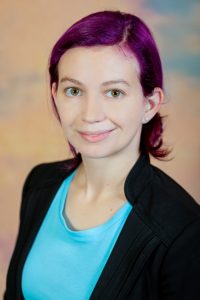
Lin Rossmann graduated with a bachelor’s degree in mechanical engineering in 2017 and is now pursuing her master’s degree in materials science.
We are pleased to announce that lab member Lin Rossmann is a winner of the “Tomorrow’s Technology Leaders: The 20 Twenties” awards for 2019, which recognizes students based on their academic performance, civic contribution, and research. The twenty winners will be honored at Aviation Week’s 62nd Annual Laureates Awards in Washington, D.C. in March.
Her award is the subject of a UCF Today article, which can be read here.
The 20 Twenties, held by Aviation Week Network in collaboration with the American Institute of Aeronautics and Astronautics, are meant to recognize and honor the twenty most promising future leaders in the aerospace industry. To read the official announcement of winners, click here.
Remelisa Spends Summer and Fall Semesters at Boeing St. Louis As Part of NSF INTERN Program

Pictured from left to right: Samuel Tucker, Remelisa Esteves and Dr. Seetha Raghavan
Remelisa spent the summer and fall semesters interning at Boeing St. Louis, where she worked with researchers to optimize the piezospectroscopic method for commericial viability. Her work is part of the NSF funded INTERN program, which allows her to perform research outside of the academic lab setting while acquiring professional development experience. Faculty mentor, Dr. Seetha Raghavan, paid a visit to the site and met the researchers there. Thanks goes to Remelisa’s manager, Samuel Tucker, for his guidance, as well as Boeing collaborators, Hong Tat and Joseph Schaefer, for their support on this project.
Update from Fulbright research in Germany
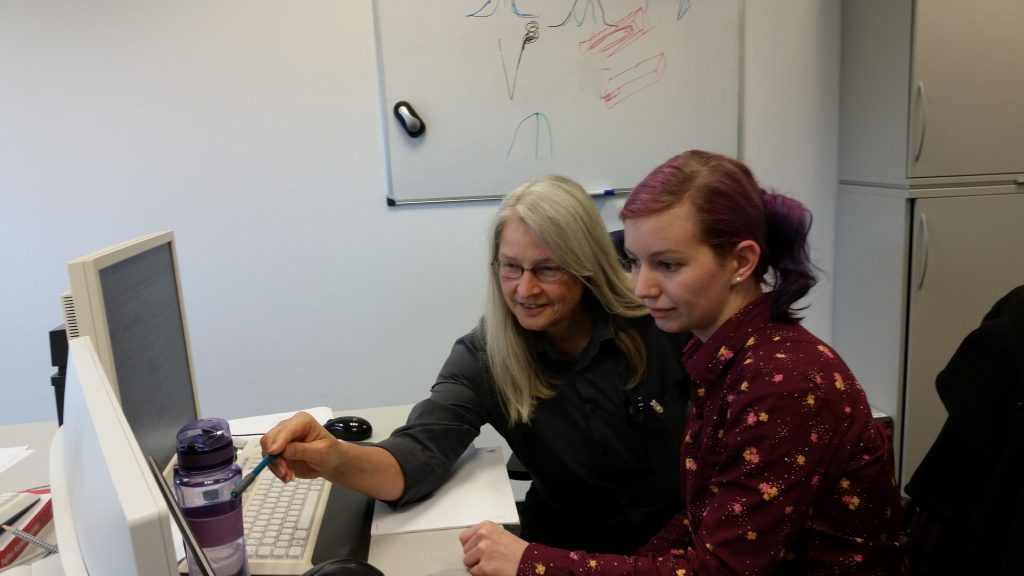
Dr. Bartsch and I discussing my work.
Hello all,
Thanks to winning a Fulbright student grant, I’ve been in Cologne, Germany since mid-September, conducting research for my masters’ thesis at the German Aerospace Center (DLR). I’m studying thermal barrier coatings (TBCs), which are coating systems used to protect the components in the hot section of gas turbine engines used for aircraft propulsion and power generation. I’m comparing two methods of depositing the ceramic top coat. Electron-beam physical vapor deposition (EB-PVD) is the industry standard method for producing the high-quality coatings used on the most critical hot-section components of aero-engines. The process involves vaporizing a solid ceramic target in a high vacuum, and the ceramic vapor condenses onto the part, which gives it a characteristic microstructure that is “strain tolerant” – less likely to crack with the repeated expansion and contraction associated with thermal cycles. Because the vapor must diffuse onto the coating, the process is slow, and the high vacuum requirement makes the process more difficult and expensive. The second process is plasma-spray physical vapor deposition (PS-PVD), which is a newer process that is faster, cheaper, and promises greater flexibility than EB-PVD. In this process, ceramic powder is injected into a plasma plume, where it is either melted or vaporized, depending on the process parameters. Because the plasma plume carries the ceramic to the part at high speed, the coating rate is much higher, and there is some non-line-of-sight capability, which will enable more complex part geometries or even multiple parts to be coated at once. Changing the process parameters also controls the resulting microstructure, which is relevant to applications beyond TBCs in engines – for example, gas-sending membranes or ion transport layers in fuel cells. Before PS-PVD TBCs can be adopted commercially, their properties and response to service conditions must be compared to EB-PVD TBCs. My work compares samples of both times, which have received varying amounts of thermal cycling to simulate low-, mid-, and high-lifetime coatings.
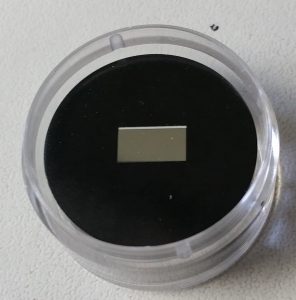
Embedded cross section of my dummy EB-PVD sample. That thin white layer is the TBC. The temperature drop across it can be as great as 200 °C (nearly 400 °F)!
I’ve been busy analyzing spectroscopy data that I’ve collected on my samples. Photoluminescent piezospectroscopy (PLPS) and Raman spectroscopy are non-destructive optical methods that provide information on the residual stress state of the coatings, which indicates remaining lifetime. Even more exciting, I’m planning my further testing with my mentor, Dr. Bartsch, here at DLR.
I’ll be imaging my samples with scanning electron microscopy and energy-dispersive x-ray spectroscopy. These techniques are time-consuming, expensive, and highly dependent on good quality sample preparation, so it’s critical to plan carefully and know what you’re looking for before you start. I’ll be using these techniques to support and explain my conclusions from my spectroscopy results. Dr. Bartsch has kindly provided me with some “dummy” samples similar to my own, for me to train and practice on. You don’t want to do a technique for the first time on your valuable samples, especially when it’s destructive!
I started by cutting a small piece from one of the dummy samples, embedding it in conductive mounting material, and polishing the cross section. The quality of surface finish is extremely important for good images. I took a few optical microscope images of the dummy, to check the surface finish and practice using the microscope. More surface preparation will be needed before I can image it with the electron microscope.
DLR is home to experts in the world of TBCs, and it’s a privilege to get their advice and feedback on my work. It’s a little surreal to have scientific conversations with some of the authors of papers I’ve read! Dr. Bartsch has a lot of expertise to share, not only on TBCs but also on the sample preparation and testing I’ll be doing. (Bonus: she’s the nicest lady you’ll ever meet.) At DLR, I also have access to a caliber of equipment that I wouldn’t have back at UCF, along with expert technicians and scientists to help me get the most out of it. And of course, the experience of living in another country and experiencing another culture is irreplaceable.
More updates later,
Lin Rossmann
Lab Member Remelisa Esteves Featured on National Science Foundation’s INTERN Program Video
Lab member Remelisa Esteves is currently interning with Boeing at St. Louis, Missouri from June 2018 to December 2018, where she is working alongside professional engineers to optimize the piezospectroscopic method for nondestructive testing of aerospace structures and commercial viability. We are proud to announce that Remelisa has been featured in the National Science Foundation’s (NSF’s) INTERN program video! Dr. Seetha Raghavan makes a cameo in this video as well.
Lab members attend and present posters at DOE UTSR Conference 2018
Lab members Dr. Sandip Haldar, Quentin Fouliard, and Matthew Northam participated at the 2018 Department of Energy University Turbine Systems Research Program Conference held at Daytona Beach, FL from October 30- November 1, 2018. Matthew and Dr. Haldar presented 2D X-ray diffraction experiment results obtained at the Argonne National Laboratory in June of 2018 and Quentin presented his results on the optimization of temperature sensing coatings. These graduate students attended multiple talks over the three day conference relating to RDEs, TBC/EBCs, and turbine heat exchangers among others from experts in their respective fields.

Lab members (left to right) Matthew Northam, Quentin Fouliard, and DrSandip Haldar present there posters at the USTR Conference in Daytona Beach, FL.
Both Quentin and Dr. Haldar presented findings in collaboration with Dr. Ranajay Ghosh and his graduate student, Peter Warren shown in the below picture. Additionally, the results from this collaboration were also presented by Dr. Raghavan in a talk held on the second day of the conference.
IRES 2017 team interviewed on “Lend me your Engineers” podcast
Last year, the dynamic IRES 2017 team gave a podcast interview featured on our UCF MAE department website:
http://mae.ucf.edu/lend-me-your-engineers-podcast-episode-5/
Tune in and listen to their thoughts and adventures. Learn about how a summer of research in Germany can change your life.
The IRES applications for 2019 “US Germany collaboration in Materials for Extreme Environments” is open.
Read about previous participants and their adventures in their blog
https://aerostructures.cecs.ucf.edu/ires/blog/
Apply to be part of the next research adventure here:
https://aerostructures.cecs.ucf.edu/ires/apply/
Research Team Now Accepting IRES Applications
Through a research collaboration with German Aerospace Center(DLR) in Cologne, Germany, both graduate and undergraduates have the opportunity to conduct research on the mechanics of aerospace materials. Requirements for applicants include being enrolled at UCF, and being able to enroll in directed research during the Spring and Summer 2019 terms as well as participating in research activities 10-20 hours a week. Students who are accepted will have the opportunity to work with leading scientists at a state of the art facility and be able to participate in industrial visits and cultural activities. Housing and a competitive stipend are provided. The deadline to apply is November 14th.
Lab members attend and volunteer at AIAA Space Forum 2018
Graduate students Quentin Fouliard and Johnathan Hernandez participated at the 22nd AIAA International Space Planes and Hypersonic Systems and Technologies conference held in Orlando, FL from September 17-19, 2018. They attended talks related to hypersonics and took the opportunity to network with renowned experts in the field present at the event. In addition, they collaborated with AIAA UCF and NASA to set up interactive booths for the Generation STEM event which was part of the conference’s program.

Johnathan Hernandez (left) and Quentin Fouliard (right)
Lab members Khanh Vo, Sandip Haldar, Kyle Rushton, and Alexander Olvera volunteered at Generation STEM hosted by Lockheed Martin to engage and stimulate middle school students’ interest in the field of aerospace engineering. They worked with Asst Chief Engineer Teresa Kinney from KSC NASA to assist with her and Dr Raghavan’s Structural Dynamics technical committee booth as well as the AIAA UCF student chapter booth in the setup and the activity. The activity at the structural dynamics technical committee booth involved practical applications of dynamics in structures and the use of Chladni plates to explain the concepts of dynamics and vibration modes.

Pictured from Left to Right: Khanh Vo, Sandip Haldar, Erik Durnberg, Teresa Kinney, Alexander Olvera, and Kyle Rushton.
With AIAA UCF student chapter, they also demonstrated the benefits of the opportunities offered within the club and showed how kids can get a head start into the aerospace industry.
Lab member Quentin Fouliard partook at ICPT18
Graduate Student Quentin Fouliard participated in ICPT18, the 1st International Conference on Phosphor Thermometry held in Glasgow, UK, on July 25-27, 2018. Quentin presented a conference paper titled “Configurations for Temperature Sensing of Thermal Barrier Coatings” in which initial results on an optimization method to select rare-earth phosphors based on their thermo-mechanical and optical properties were discussed. He took this great opportunity to exchange knowledge with experts on Phosphor Thermometry and to share with them his findings as well as collecting suggestions for future improvements on this research.

Quentin is in the fifth position from the right in the furthest row.
Quentin is currently working on a project that is funded by the US Department of Energy and deals with the implementation of advanced instrumentation techniques for accurate temperature and stress monitoring on Thermal Barrier Coatings.
Lab members publish paper in Applied Optics
We are pleased to announce that three of our current and former lab members have published their paper “Silane functionalization effects on dispersion of alumina nanoparticles in hybrid carbon fiber composites” in the journal of Applied Optics.
Current and former lab members Alex Selimov, Sanjida Jahan, and Eric Barker worked in collaboration with scientists at Imperial College London, studying the effects of silane treatments on the dispersion properties of alumina nanoparticles in composite materials.
Lab member Zachary Stein presents poster for Summer Research Academy
Lab member Zachary Stein has presented a poster on the research he has been conducting this summer as part of his participation in the Summer Undergraduate Research Fellowship (SURF), which he was awarded in April. Zac has been studying the effects of sand ingression on thermal barrier coatings and the research presented was on some initial analysis of the experiments conducted at Argonne National Laboratory this July.

Zac (center) presenting his poster “Synchrotron X-Ray Diffraction Study of CMAS Ingression in Electron-Beam Physical Vapor Deposition Thermal Barrier Coatings.”
Zac presented at the Summer Research Academy’s “Meet Student Researchers: Poster Showcase.” The Summer Research Academy introduces its participants to academic research and how to get started on conducting research themselves.

